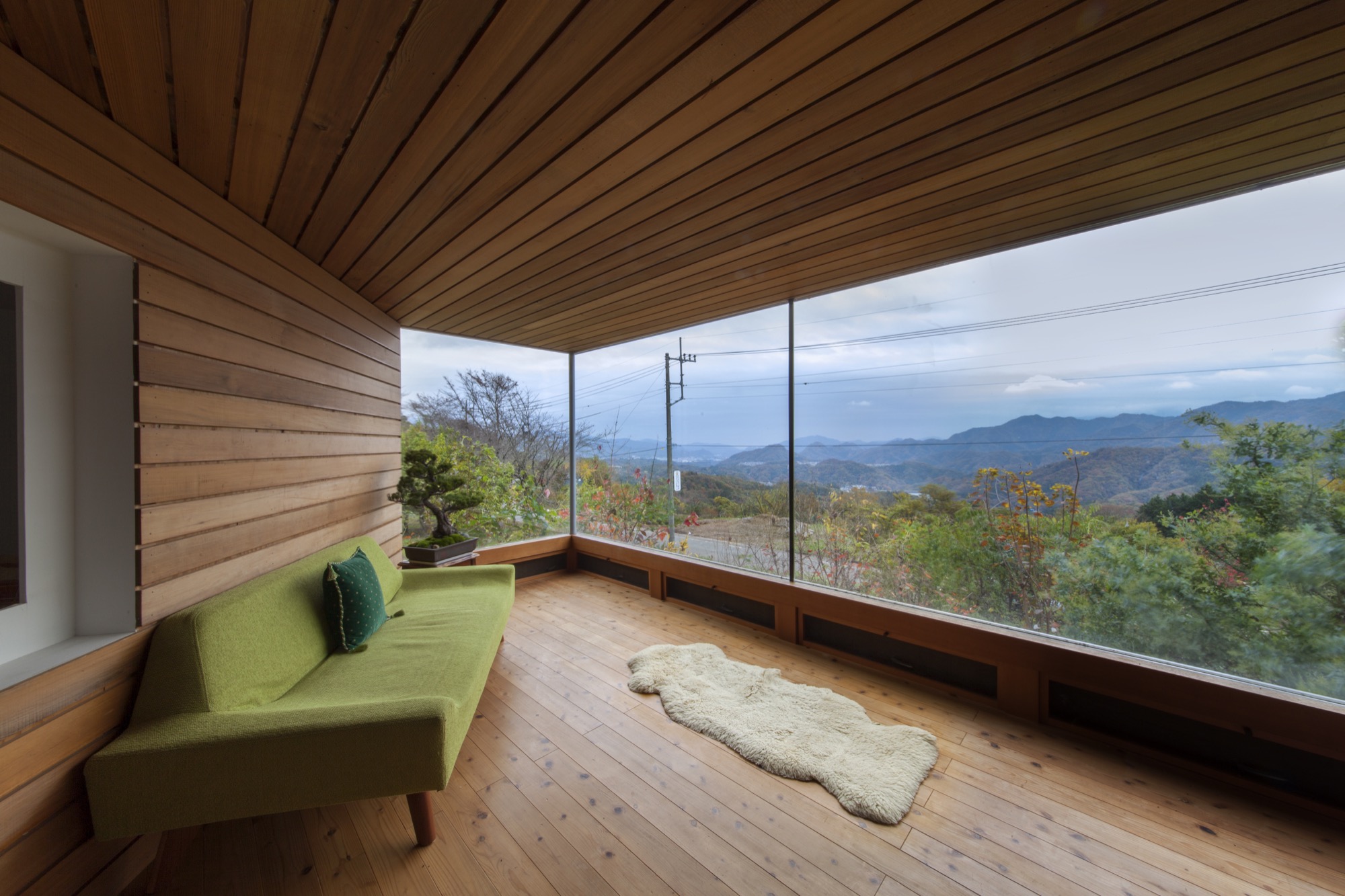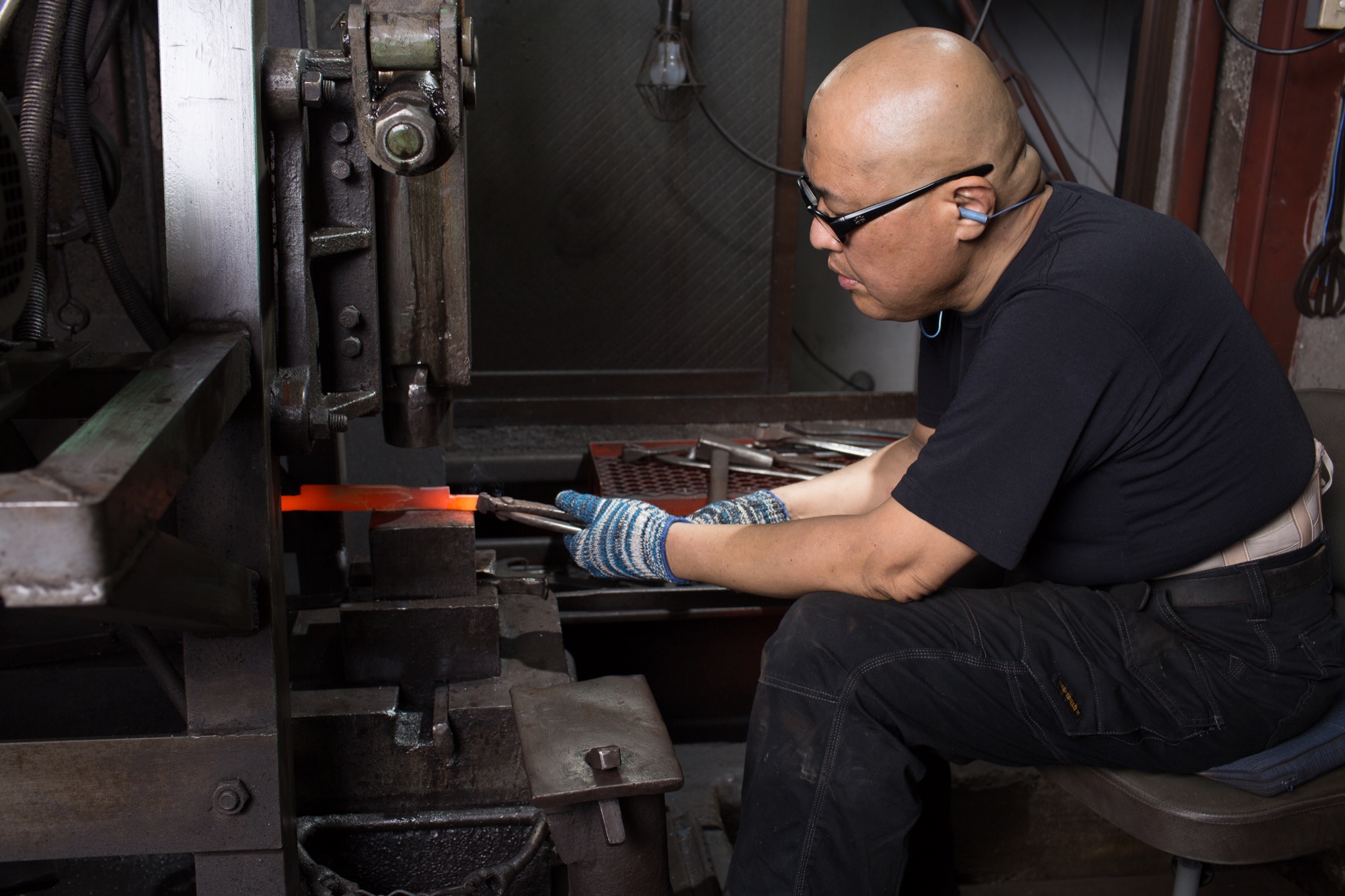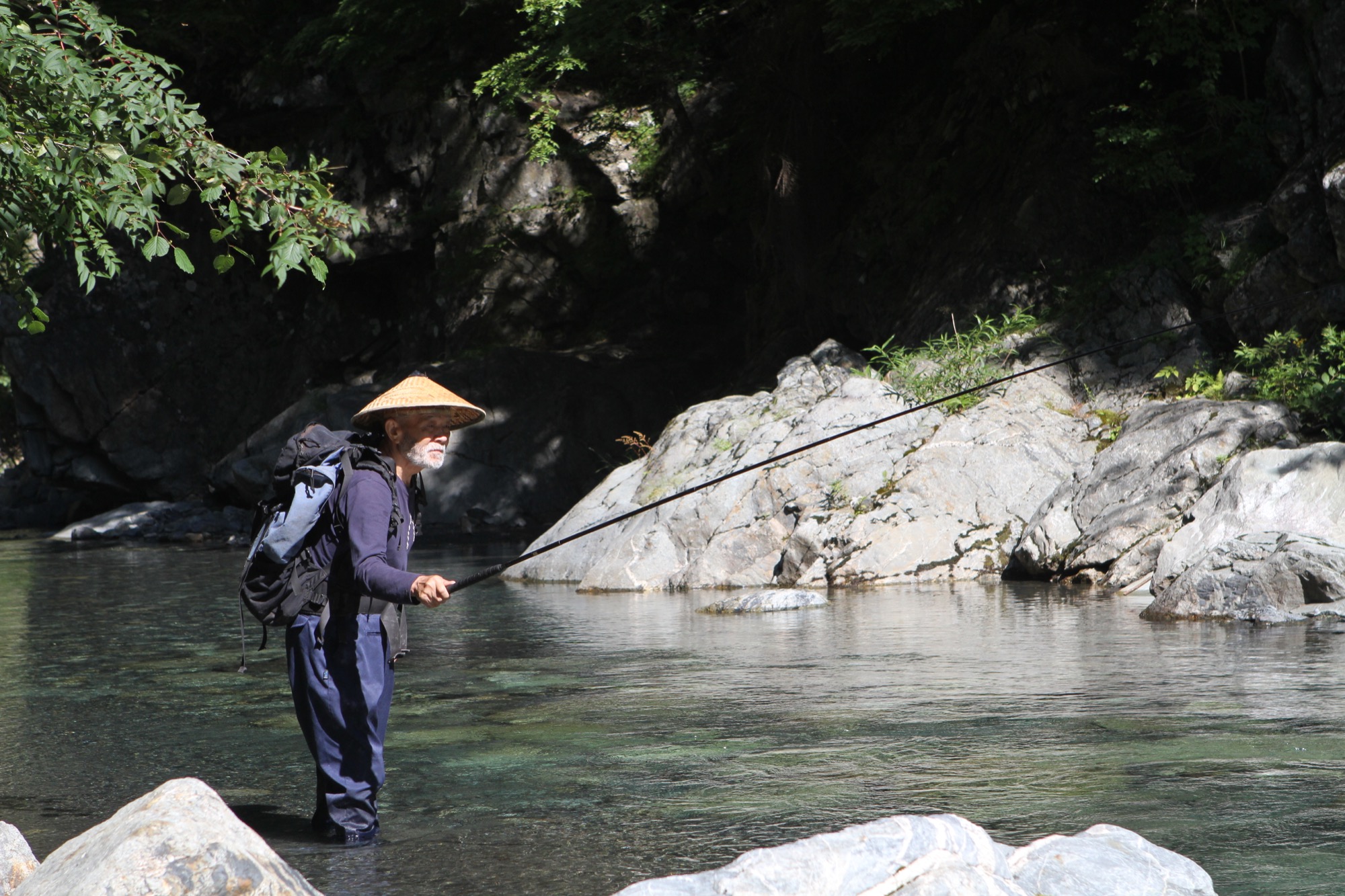
Inspirations
Explore the elevated life in the mountains. This content debuted in 2015 with Alpine Modern’s printed quarterly magazine project.
Inspirations No. 14
In this article… blah, blah, blah.
Hope you're enjoying a relaxing Saturday. We're getting bundled up and about to head down to the Cafe for waffles with our guests visiting from California. There's nothing like sugary waffles and warm coffee to kick off a weekend with friends. We're so thankful for the success of Alpine Modern Cafe and the amazing staff that wake up every morning to serve our neighborhood and the wide-eyed visitors from around the globe. It's demanding, being in the service industry, but occasionally our drained egos are refilled by a thoughtful online review, a sincere thank you, or, in this case, a spot at the top of a well-regarded list. Alpine Modern Cafe was highlighted, along with Intelligentsia, as the best place to get coffee in the USA from the Financial Times newspaper. We learned about this on Friday when we had an unusual number of Englanders visiting the Cafe, all snapping photos for their Instagram accounts. So cool! Well done, everyone! Here are some inspirations to keep you busy this morning:
Finally, someone designed a television for the modern home. The Samsung Serif is a work of art.
Coco has become an Instagram icon. She lives in Japan and she is only six years old.
This online illustrated guide to Frank Lloyd Wright's signature buildings.
This new game from our friend, Matt Sisson, called Ravine. We’ll be carrying it in our Shop once it’s ready but if you want to support Matt and receive an early copy, back him on Kickstarter.
Mr Porter curated a wonderful list of retreats. What’s more luxurious than a retreat in the middle of nowhere?
Chasen + Stone Matcha made this video about the cultivation and production of it matcha. This small farm in Japan supplies all the matcha for our Cafe and Coffee Bar.
Desktop cold brew coffee system by Bruer.
Two alpine-modern architects in Colorado worth noting: Studio-B and tres birds workshop
Loving these new Reebok × Barneys New York suede shoes.
Our Canadian friends at Wise sent us samples of their hair care products. We’ve been using the shampoo for the last two weeks. It smells splendid and the packaging design...it's oh so nice.
This home in Northern California is worth the click.
Introducing Alpine Modern’s New Nordic-Alpine-Inspired Menu
With worldly Chef Ellory heading the kitchen, seasonal ingredients shine in simple, clean food at the Café
We recently introduced you to our new executive chef, Ellory Abels. After she had helped to grow the San Francisco catering company Green Heart Foods, the Texas native traveled the world in search of culinary inspirations. The Culinary Institute of America graduate visited eight countries, where she collected different spices and cooking traditions she now integrates into her own kitchen.
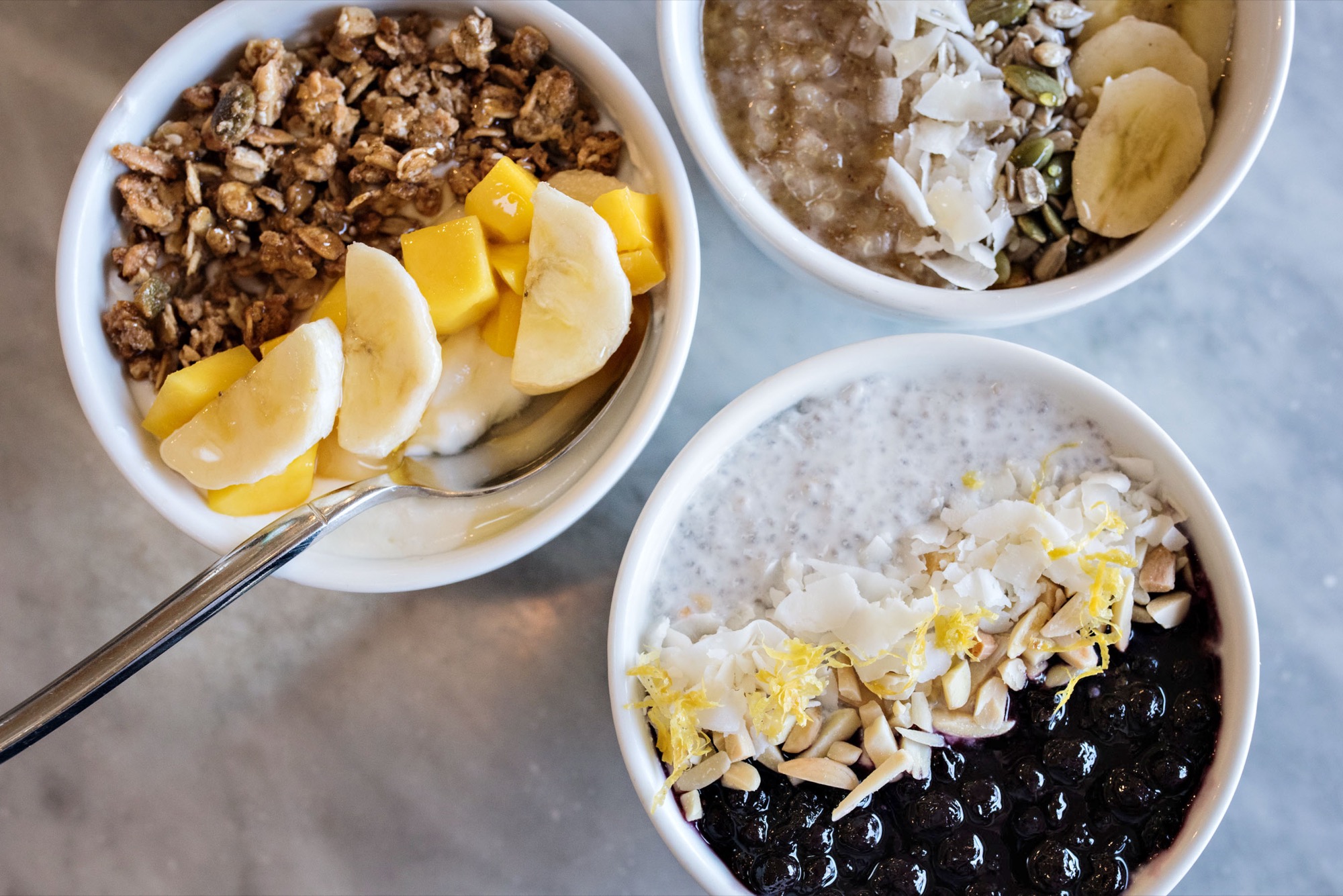
Upon returning from her culinary expedition, the outdoor enthusiast and passionate rock climber settled in Boulder, Colorado, where her incredible talent, serendipity, and (our) luck brought her into the Alpine Modern family.
We sat down with the worldly chef to talk about the much more elevated and seasonal menu she has created for the Alpine Modern Café in Boulder, Colorado.
Chef Ellory talks about Alpine Modern’s new Nordic-alpine menu
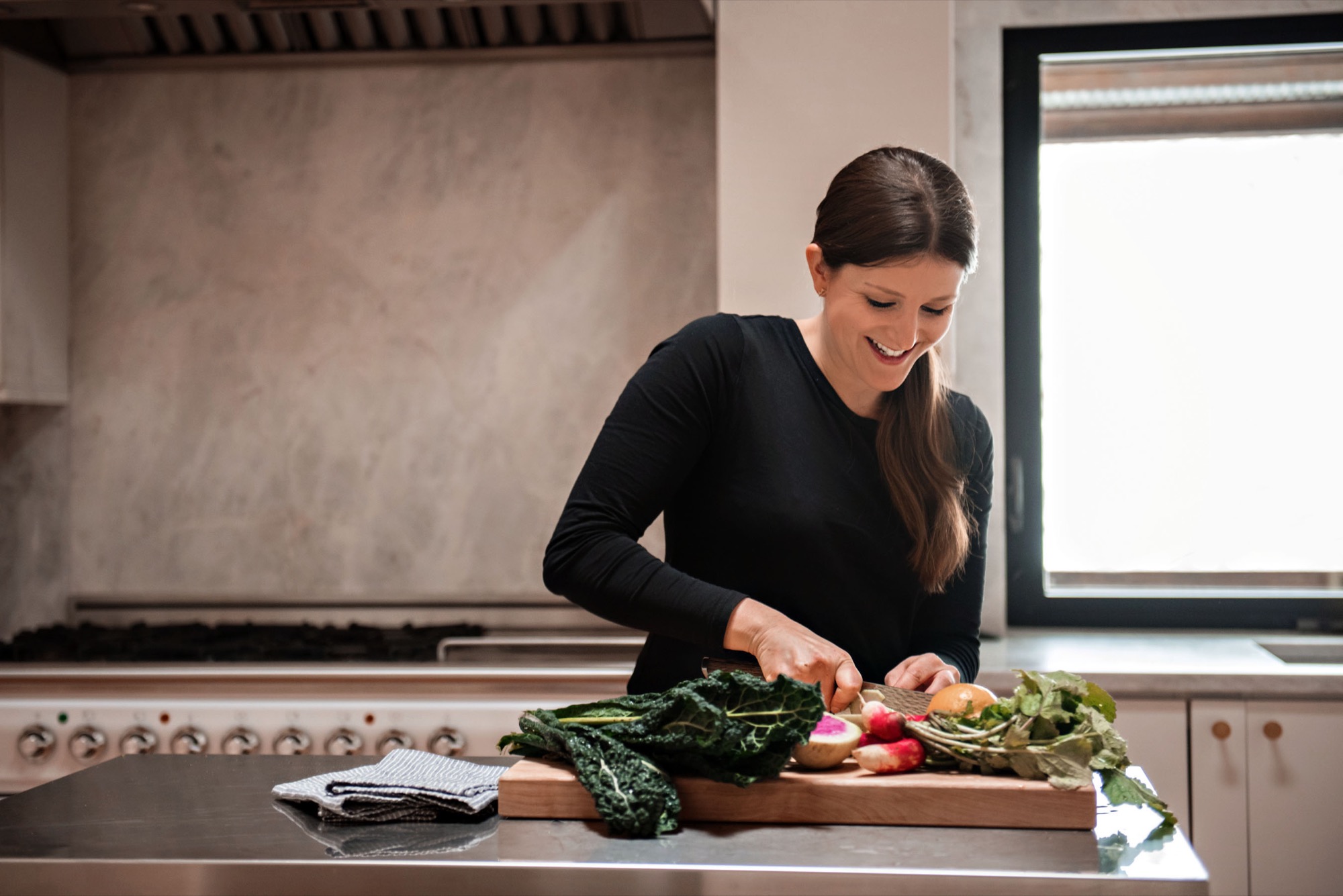
AM What’s essentially different about the new menu you have created for the Alpine Modern Café?
EA When I came to the Café, the food was very approachable but lacked a theme. I wanted to elevate the menu and make it seasonal. With a seasonal menu, you have fresher ingredients and can source them locally. As humans, we’re based on tradition and the themes of life and holidays. I feel that food and the ingredients are very much based on that, too.
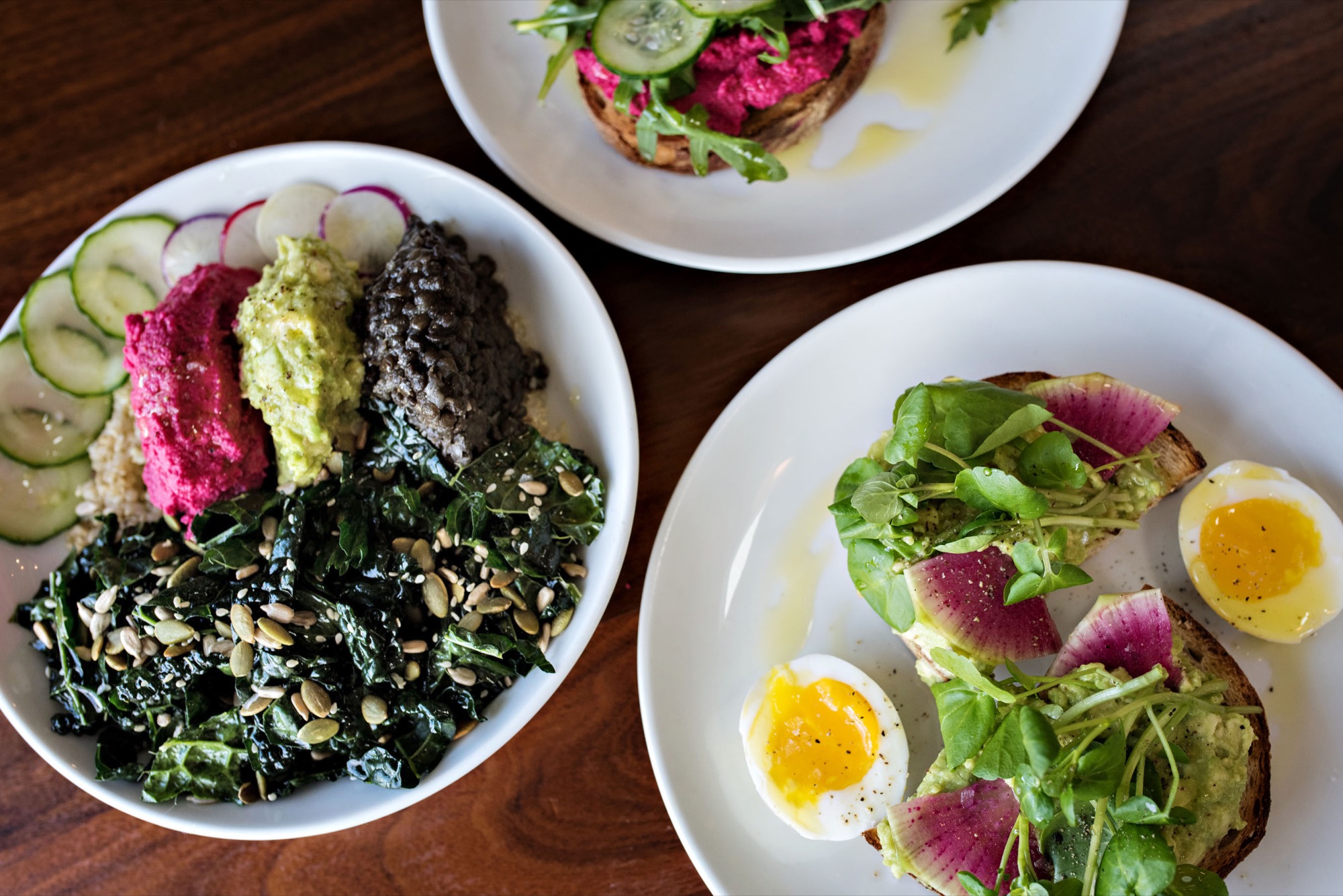
A Nordic-inspired menu
AM How did you come up with this new approach for the Alpine Modern menu?
EA I brainstormed what Alpine Modern was as a brand, what the food represents to us, and what we wanted to show the customers to be our foundation. Then I came up with the theme of Nordic-alpine food, which is scary for a lot of people. When you say Nordic food, you think of pickled herring or just really gross dishes like that. So I was very cautious of saying that to people. But I thought of what Nordic food is to me. I made a list of seasonal ingredients and started to build a menu off that. With food trends happening right now and the health consciousness—and I myself really care about nutrition—I wanted to implement that more into the menu as well.
AM Why Nordic? Boulder doesn’t necessarily represent a Nordic culture or environment...
EA Nordic represents simple living and food. I mean, look and their menus. It’s very healthy. It’s very clean. It’s not overthought. And I wanted to show that in the food. So I don’t necessarily want to say it’s Nordic-style food, but it has these same things behind it. It’s inspired by the foods of Iceland, Norway, Finland…
AM What are key ingredients you have implemented for the new menu?
EA I am using fennel, beets, dill, water crests—and instead of herring I’m using trout, and making it more approachable in that way. Instead of creams, I’m using thick, Nordic-style yogurts. And lemons, I’m using lots of vibrant zests in the food. And on top of that, I’m making it more seasonal.
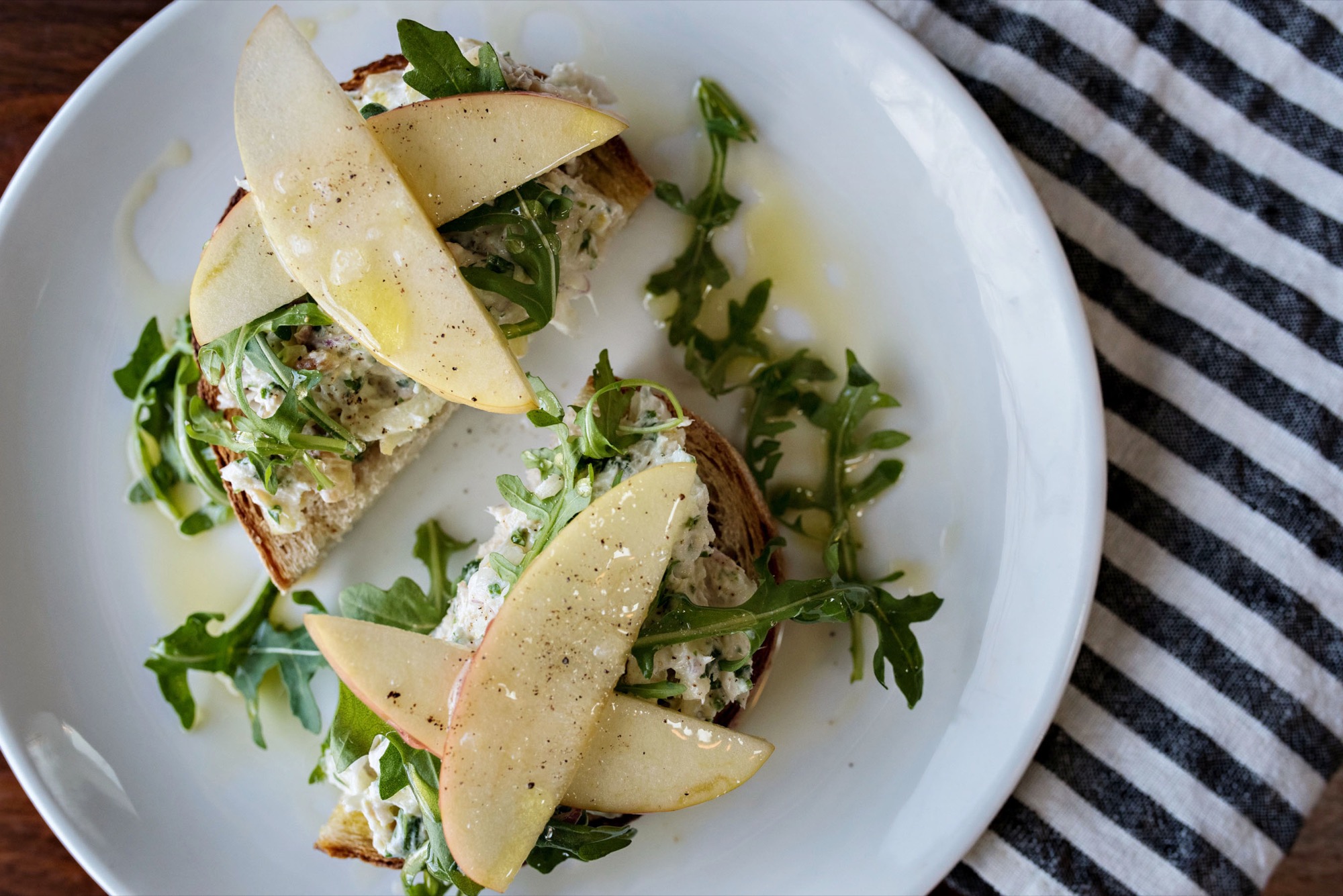
For example, our beet hummus on the winter menu will probably change to a carrot hummus in the spring. The menu will probably change four times a year.
With a healthy dose of Ellory...
AM The new menu is seasonal and Nordic-inspired. But what part of the new menu is quintessentially Ellory?
EA The twist of having what I would call nutritional, healthy hippie food intertwined into it. It goes with the Boulder theme. I worked in San Francisco before I came here, and I’ve been very health-oriented in the places I’ve worked. Greens are huge to me, so I’m trying to implement greens into almost every dish. And freshness and the vibrancy of colors. That’s very much me. The chia seed pudding, the quinoa porridge, the kale salad with avocado seeds... That’s very much me.
“Nordic represents simple living and food... I mean, look and their menus. It’s very healthy. It’s very clean. It’s not overthought. It’s inspired by the foods of Iceland, Norway, Finland…”
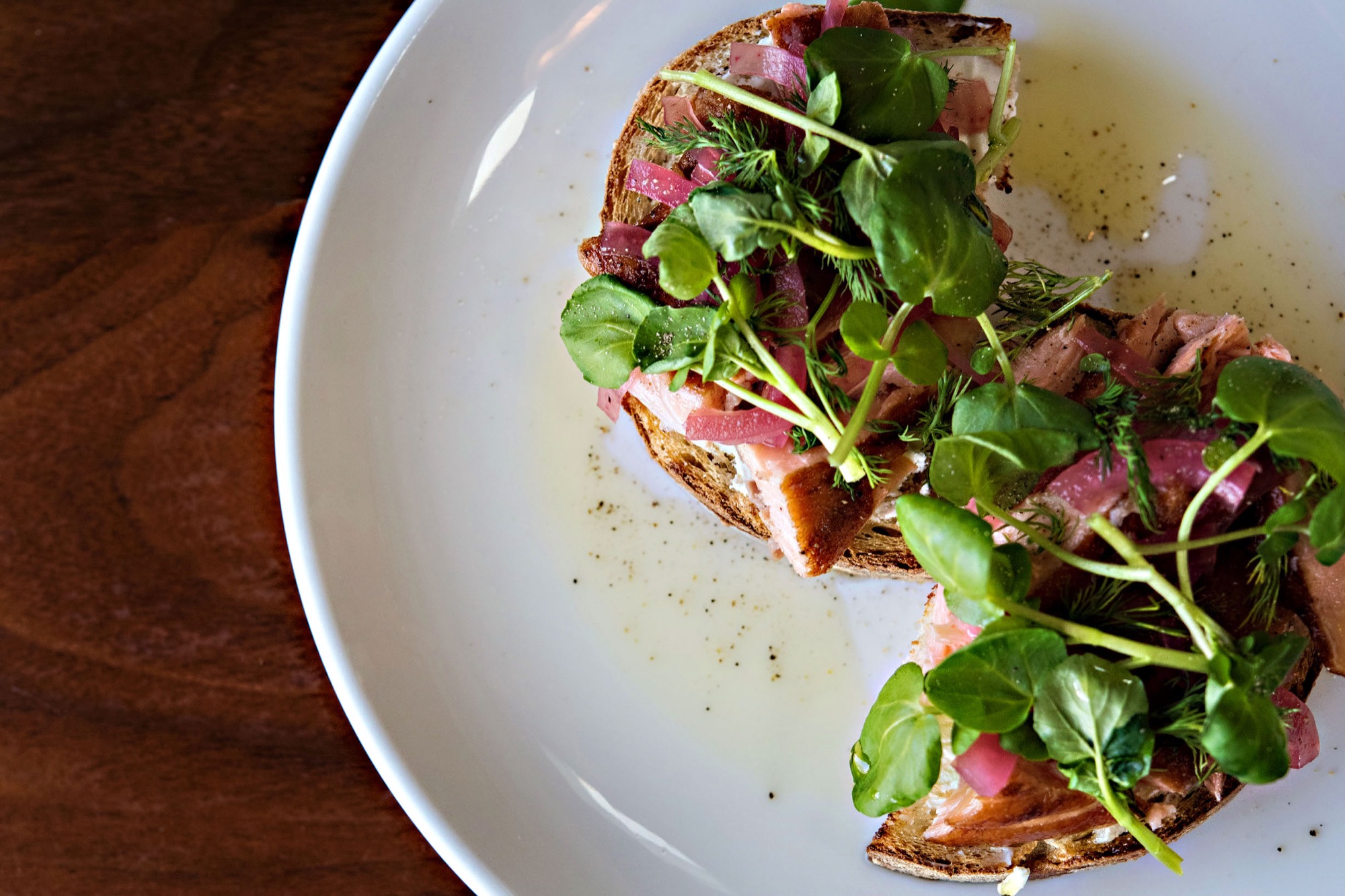
Behind the scenes
AM Now that we have an executive chef, a huge step up for Alpine Modern, and we have launched a new menu, what else has changed at the Café?
EA We’re focusing on making this not only an environment where people can come and get amazing food but also have amazing beverages that are special to the Café here. We’re creating monthly special beverages. Right now, for example, we have the Williamsburg and the matcha latte, and we’re going to have a Turmeric Latte soon.
AM Besides taking the menu to the next level, how does having you as an executive chef impact the Alpine Modern Café and the brand at large?
EA Having an executive chef here allows a lot more growth for Alpine Modern, for our food, and for the whole scene of the Café. It allows us to create a solid foundation and consistency and to implement new ways to eat and to be here at the Café. For example, we’re starting an event program, and we’re hoping to have live music in the summer and to do grill-out nights. There will be so much opportunity. And we are starting to implement grab-and-go food from the Café into our downtown location soon, at the Coffee Bar in our flagship retail store on Pearl Street here in Boulder.
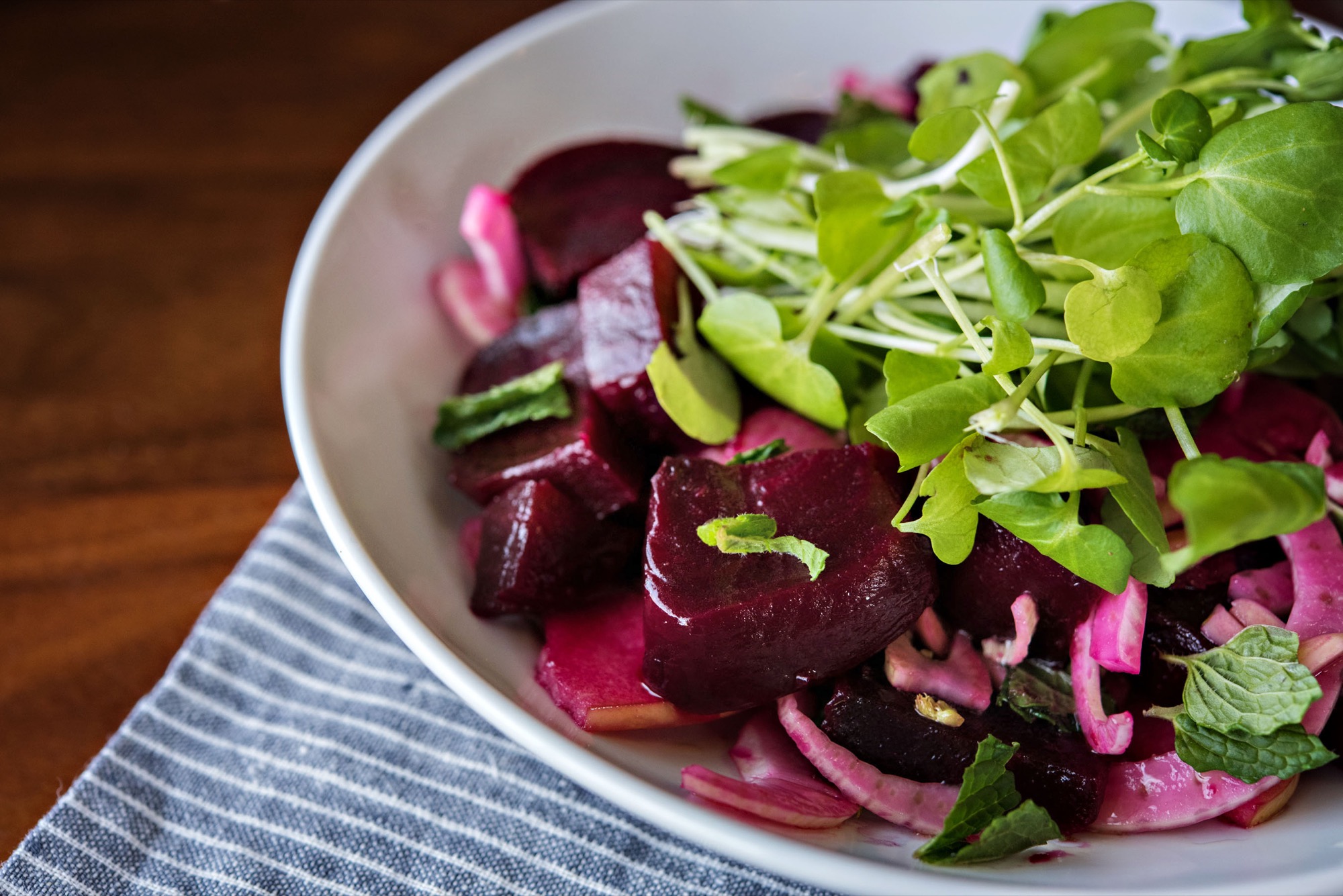
We’re also working on baking our own pastries fresh every morning. Another new thing is that we are offering gluten-free items. We’re working with Kim and Jake’s Bakery, a local gluten-free bakery. We’re using their bread and cookies, so almost everything on the new menu now has a gluten-free option.
“Almost everything on the new menu now has a gluten-free option.”
AM What is currently the most popular item on the new menu?
EA The Quinoa Lentil Bowl. It’s also one of my favorites for sure. And the Chia Seed Pudding—people are really digging that.
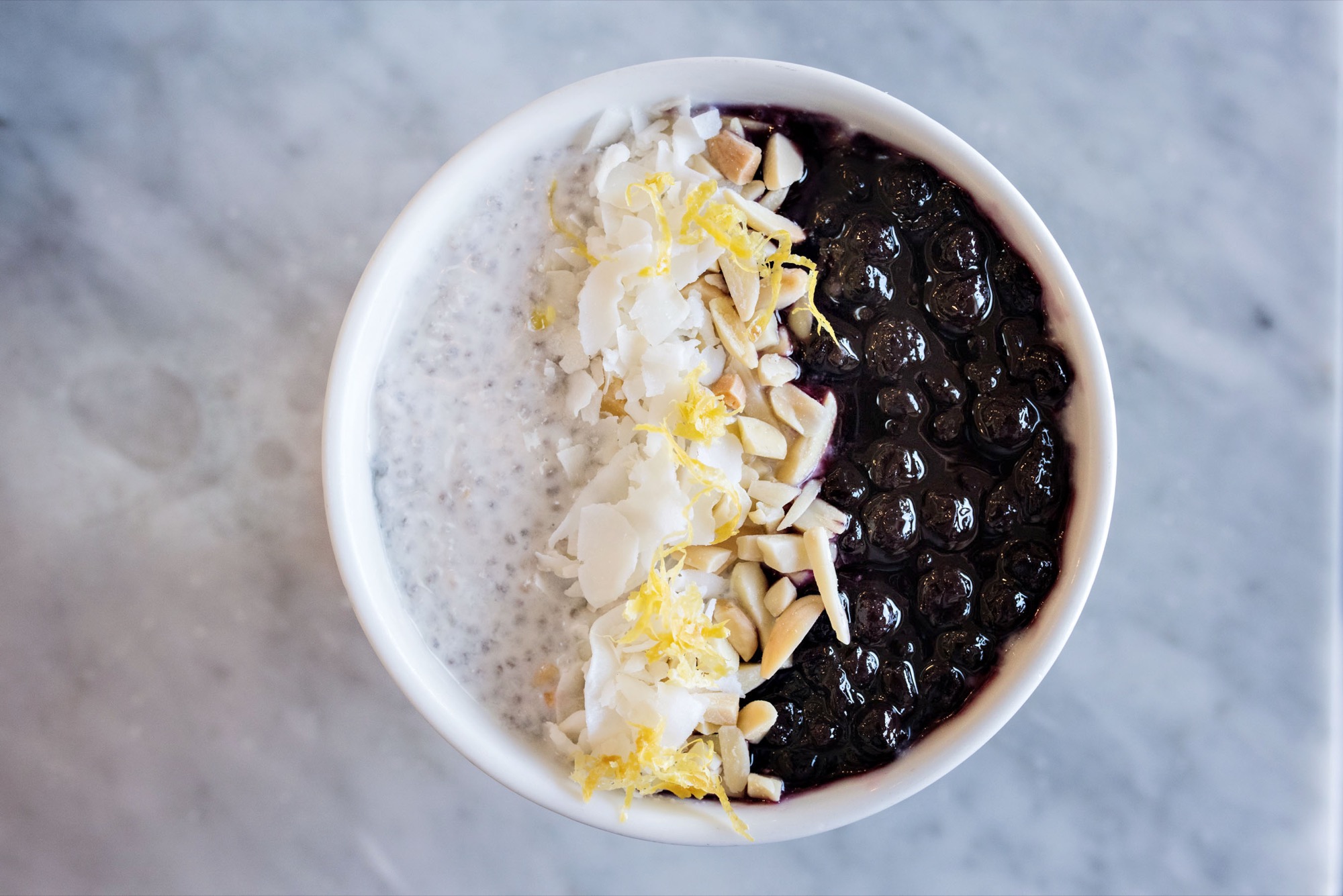
AM What feedback are you getting about the new menu?
EA The Café staff are loving it, and the customers are really enjoying it, saying things like, ‘Wow, you guys really elevated the menu.’ And that’s exactly what we wanted to do. The menu is not complex, it’s very simple, it’s all approachable because we have such a diverse community here in Boulder. We serve families and college students and young professionals—and we really wanted this to be something where you can walk in, and anyone can find something on the menu.
Come for the food and drinks, stay to feel good
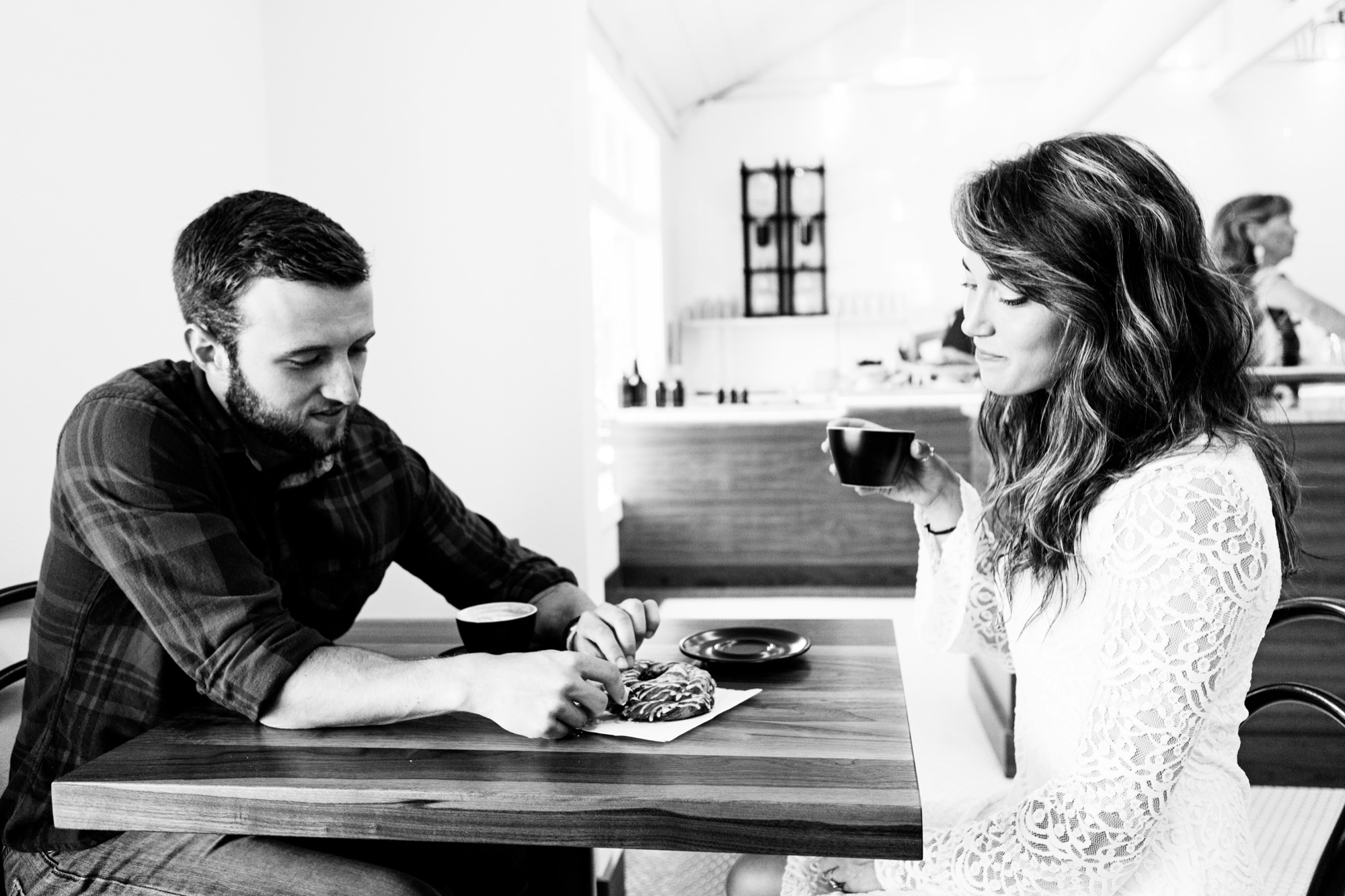
AM What are you hoping people come to the Café for?
EA I hope they come here to have their daily clean food, to eat food they really want and that they feel good for a while. And the same with their beverages—having amazing coffee that we really put a lot of time into finding and creating the best process with our ModBar. I hope our customers come in here and see that there is a lot of love and care put into everything—with our plating, with our presentation, and with our sourcing. △
“We really wanted this to be something where you can walk in, and anyone can find something on the menu.”
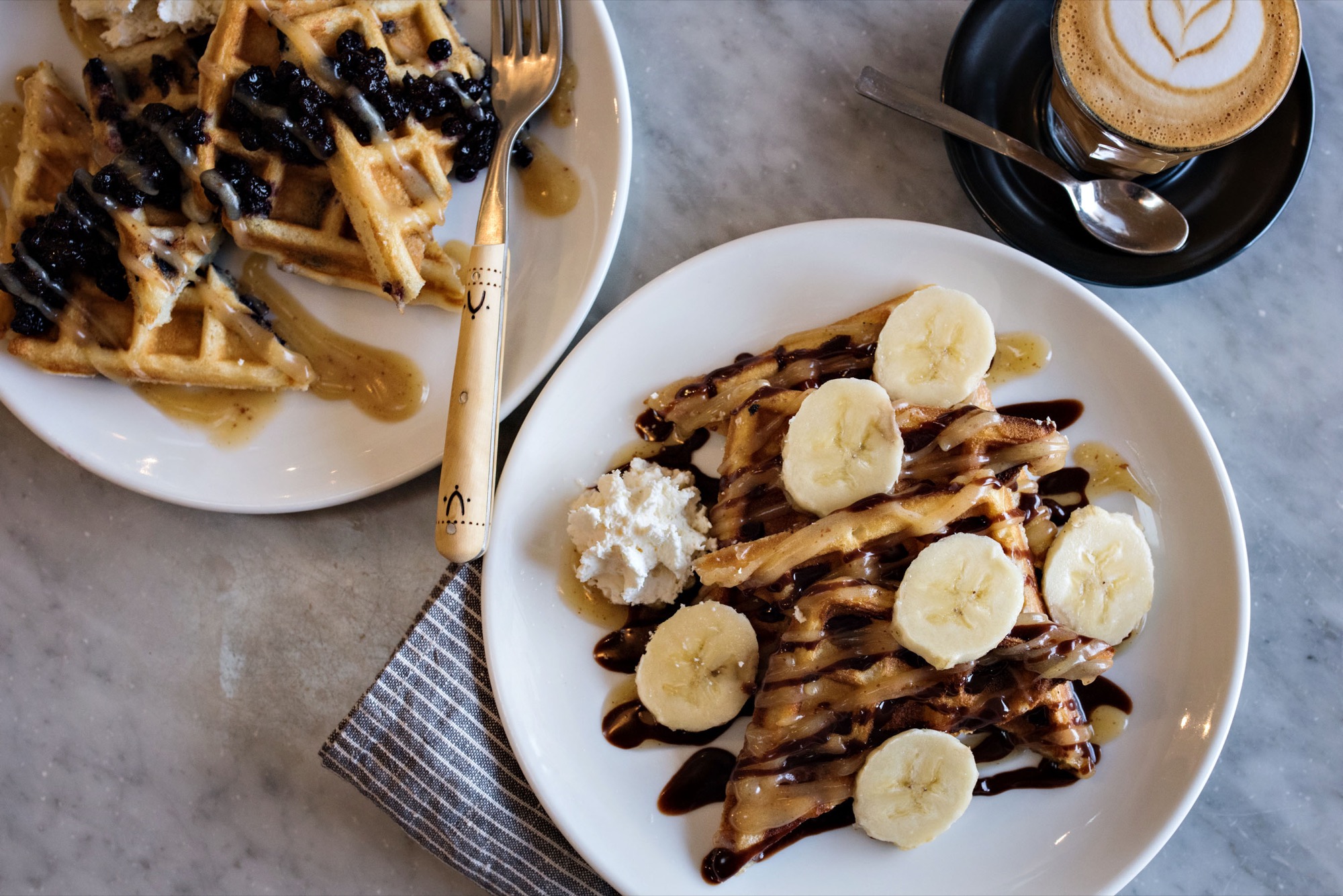
The Line between Everyday and Heirloom
A Visit to the Lake Tahoe Home of the Owners of Heath Ceramics
“In the winter, everything is dead, and in the spring, everything comes to life,” says Catherine Bailey as she looks out the window of the Tahoe home she shares with her husband, Robin Petravic, and son, Jasper.

Bailey and Petravic are the driving forces behind a reinvigorated Heath Ceramics, the Sausalito, California-based company that was started in midcentury by Edith Heath and given a dose of new energy by the couple in 2004.
When taking the tour of the Heath facility, the guide explains that, at its essence, the company aims “to straddle that line between the everyday and heirloom,” words that perfectly describe the experience of Bailey and Petravic’s Tahoe home in California’s Sierra Nevada.
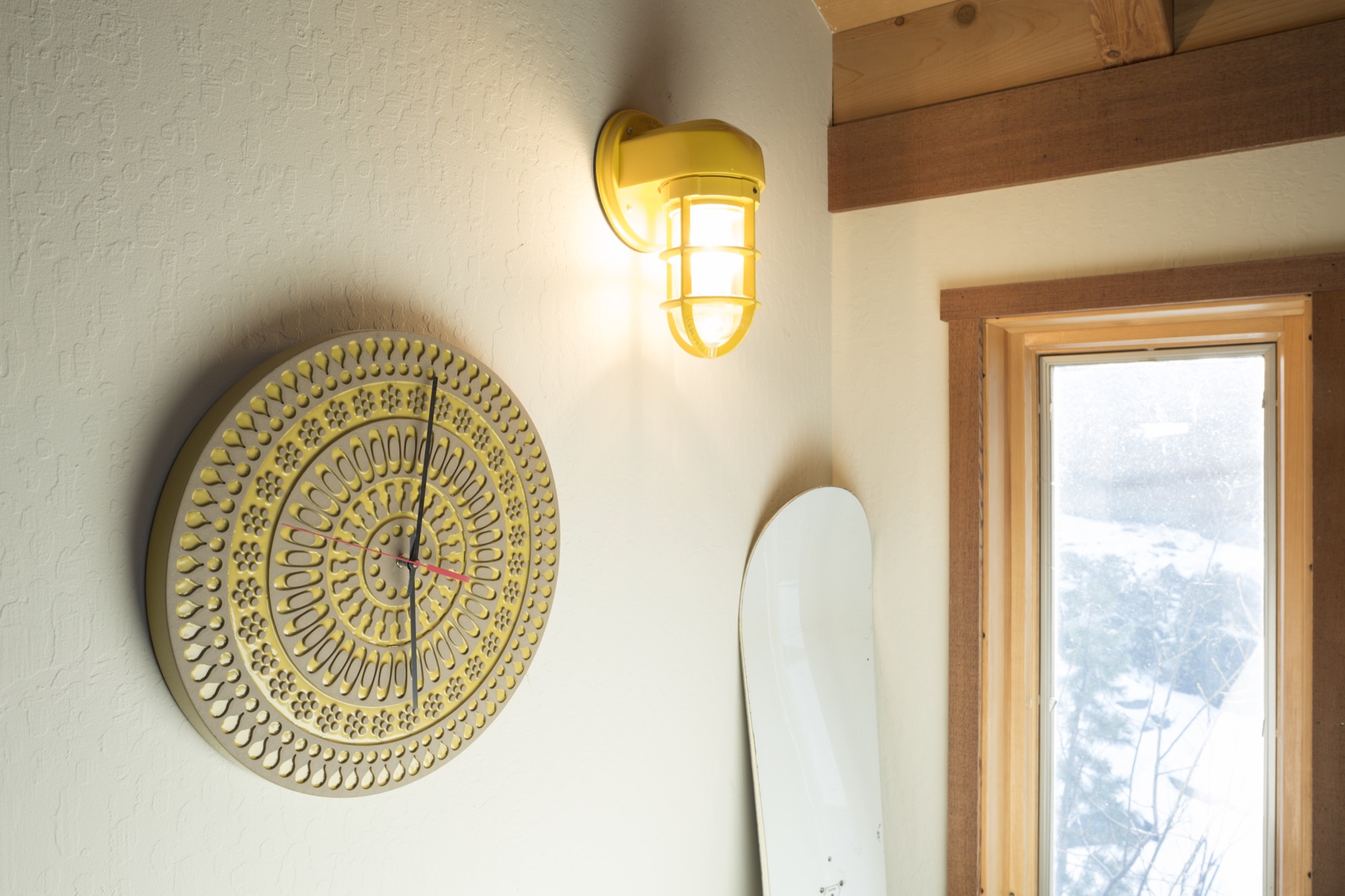
Finding the house (or being found by the house)
The couple are avid winter sports enthusiasts—Bailey had consulted for many years as a product designer for a large snowboard manufacturer—and had been looking for a weekend escape for some time when their real estate agent called about a listing in their desired area of Alpine Village. They were so excited about its location and the fact that they could walk to the slopes of Alpine Meadows Ski Resort that they made an offer on the house sight unseen.
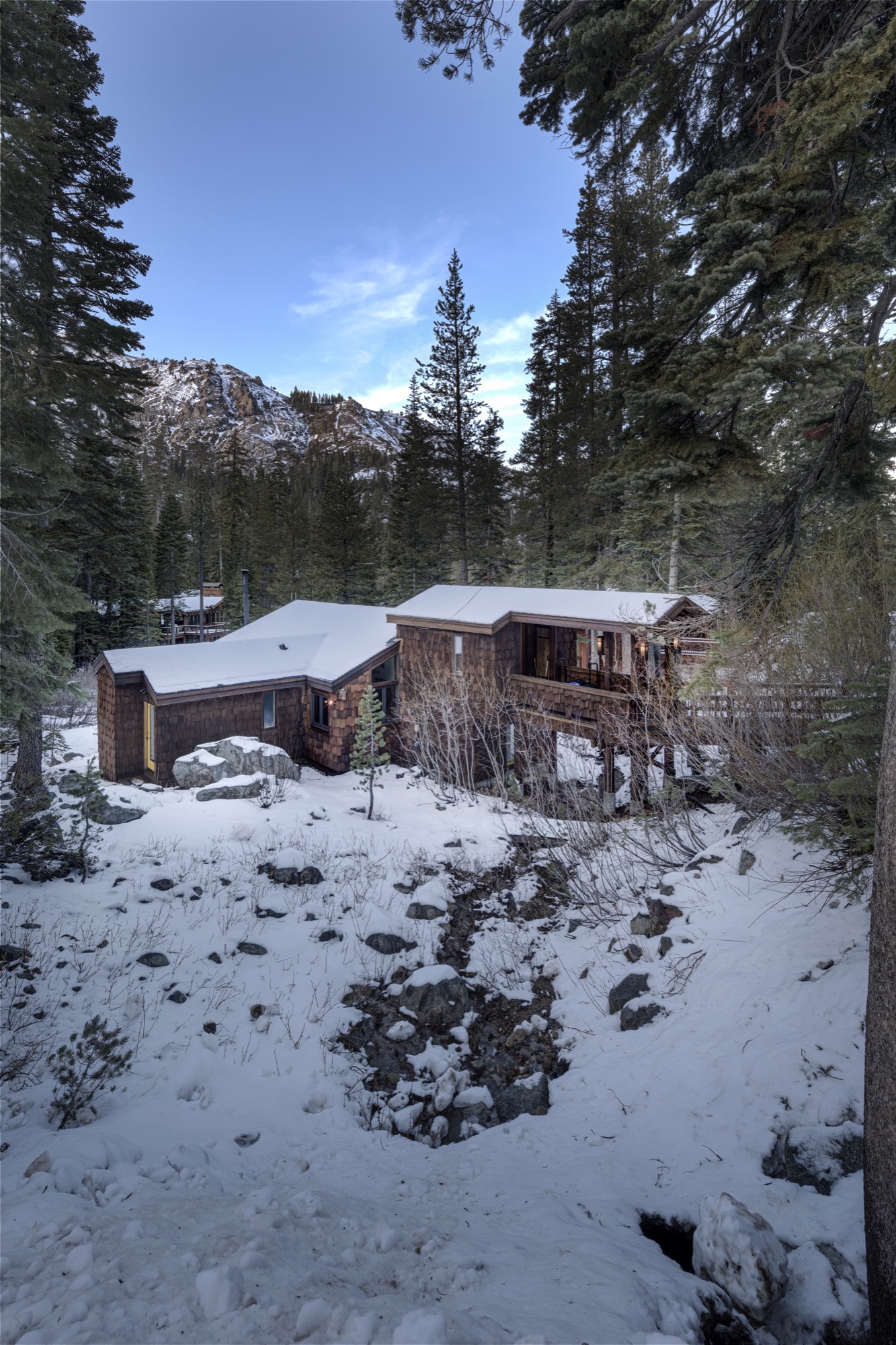
When they did finally see the house, they were immediately taken by its placement on the lot, how it cascaded down the hill to the creek below and was framed by the dramatic mountain peaks behind it.
At the same time, they were underwhelmed by some unfortunate interior decorating choices. “Everything was green—green carpeting, green cabinets, and green linoleum,” a design aesthetic Bailey laughs about. “I guess the former owners thought, ‘We’re in the mountains, so we should make things the colors of trees.’ ”
The couple was able to look beyond the green, however, and fell in love with the bones of the house, especially its beamed wooden ceilings and reclaimed wood doors.
Making it modern
After purchasing the home in 2012, they embarked on what Bailey calls “a low-hanging-fruit” remodel. Her method was to “always look back to 1974, when the house was built, and not mask that, but make it feel nice for today. The brown of the wood beams and doors with bits of orange, yellow, and red resonate with the mood of that period,” she says. “The interior feels fresh and bright without having to paint everything white.”

It’s easy to draw a comparison between the house remodel and what Bailey has done with Heath as creative director. “We didn’t find it very interesting to just have a nostalgic company where you are just trying to recreate the past,” she says.
Instead, the past becomes inspiration for moving forward. “Our philosophy has been to look back to where you’ve been and what you’ve done and don’t ever run away from it, but to learn from it.”
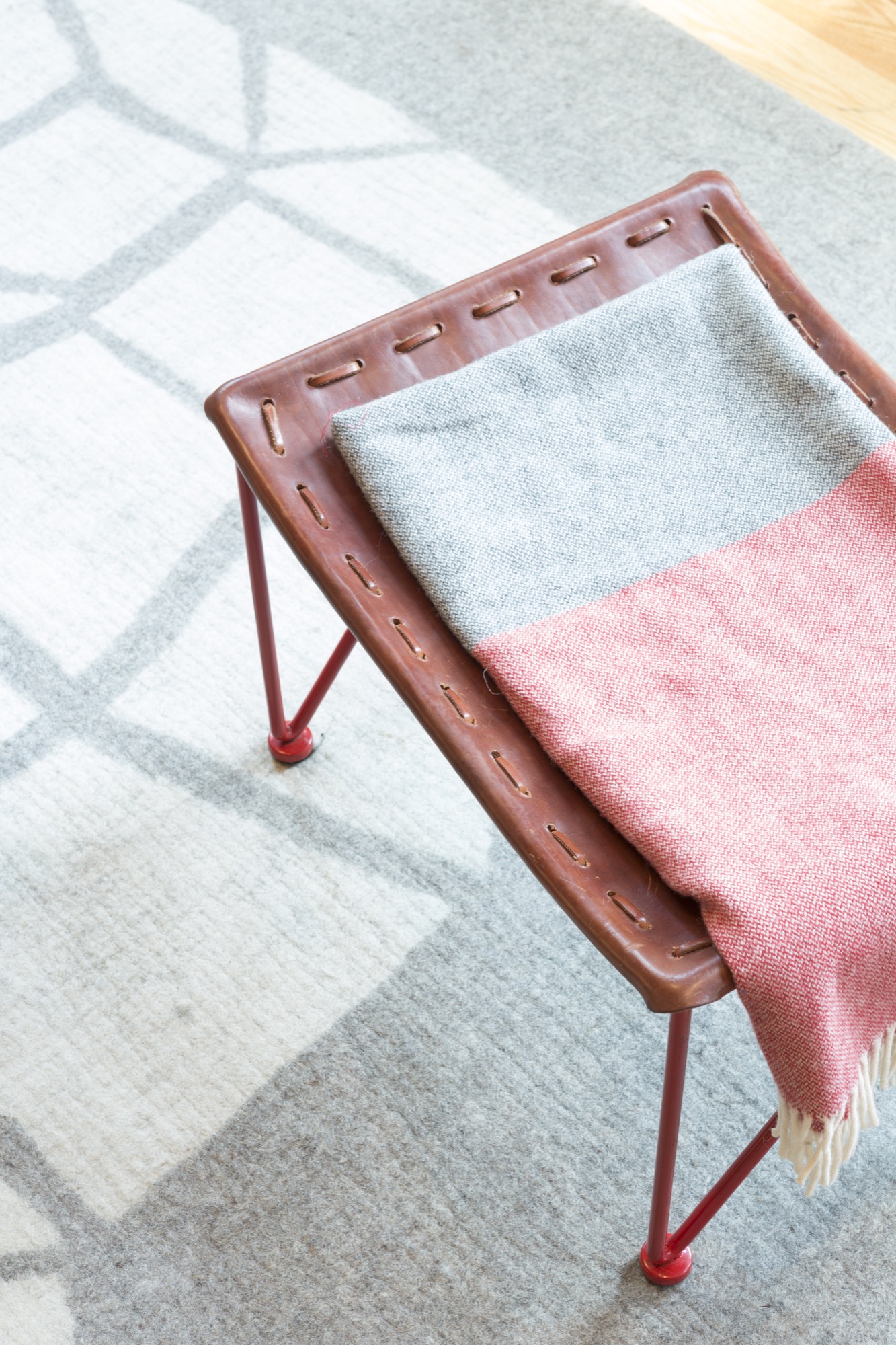
“Our philosophy has been to look back to where you’ve been and what you’ve done and don’t ever run away from it, but to learn from it.”
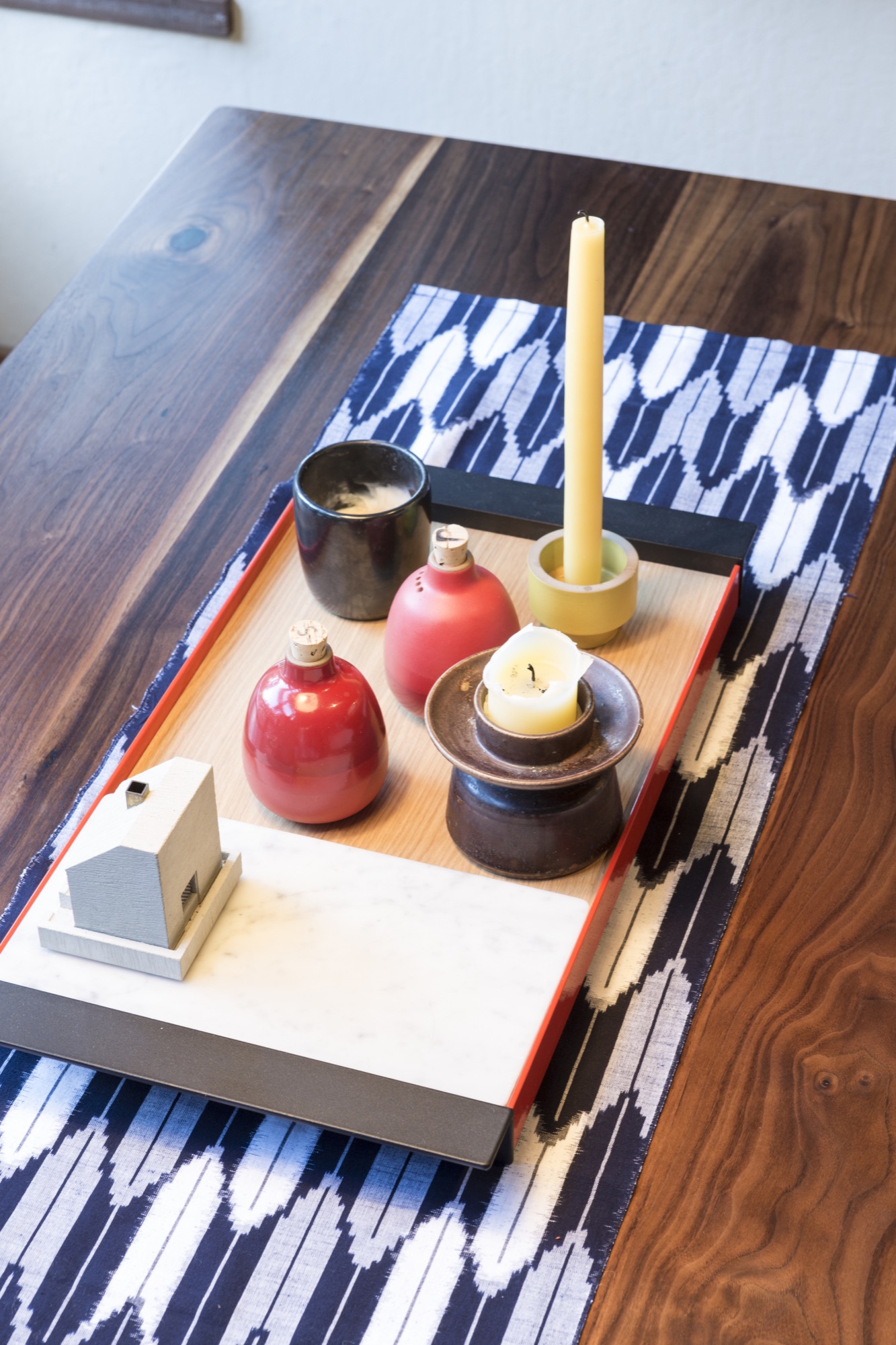
Heath ceramics
Heath was founded in 1948 by Edith and Brian Heath and is famous for its handcrafted stoneware and distinctive glazes. Under Bailey and Petravic, it continues to produce and design midcentury tableware and tile in its California factories, but the couple have expanded the company with a business model driven by “design-led manufacturing principles, and in the belief that responsible business practices lead to long-term viability.” Since purchasing the company, they have added new colors, opened a new tile manufacturing factory and showroom in San Francisco, and started up a Los Angeles studio and showroom. Most importantly, they have expanded the brand through successful collaboration with designers and ceramic artists from around the world.
“We are always looking for the next creative opportunity that fits with what we love to do: the materials we love to explore and the people we want to work with,” Bailey explains. Those successful collaborations run the gamut from the prolific Fresno-based ceramic artist Stan Bitters and the well-known type designers at House Industries to the Mexican artist and designer Carla Fernández.
Tahoe sleepover
This spirit of openness is also reflected in the Tahoe house.
At 1,450 square feet (135 square meters), it’s a relatively small house with one big living area. But the couple was committed to finding a way to sleep a lot of people and their kids. Every bedroom has a loft with an additional place to sleep, so you can fit a family of three in each room. “We also turned the laundry room into a bedroom,” says Bailey. At times, there are three families staying at the house all at once. “That’s why we come here,” she says, “to spend time with people we want to spend time with. You don’t normally get to have your friends over to sleep at your house for the weekend.”

The couple also uses the house as a refuge and escape from the demands of running a hectic Bay Area business. The breathtaking living-room views of the Squaw Valley peaks provide the seclusion and isolation that they love. “You’re in a wonderful gem in the big outdoors—it’s kind of big out there—and there’s not a lot coming at you. That’s what makes it inspiring and special,” Bailey says.
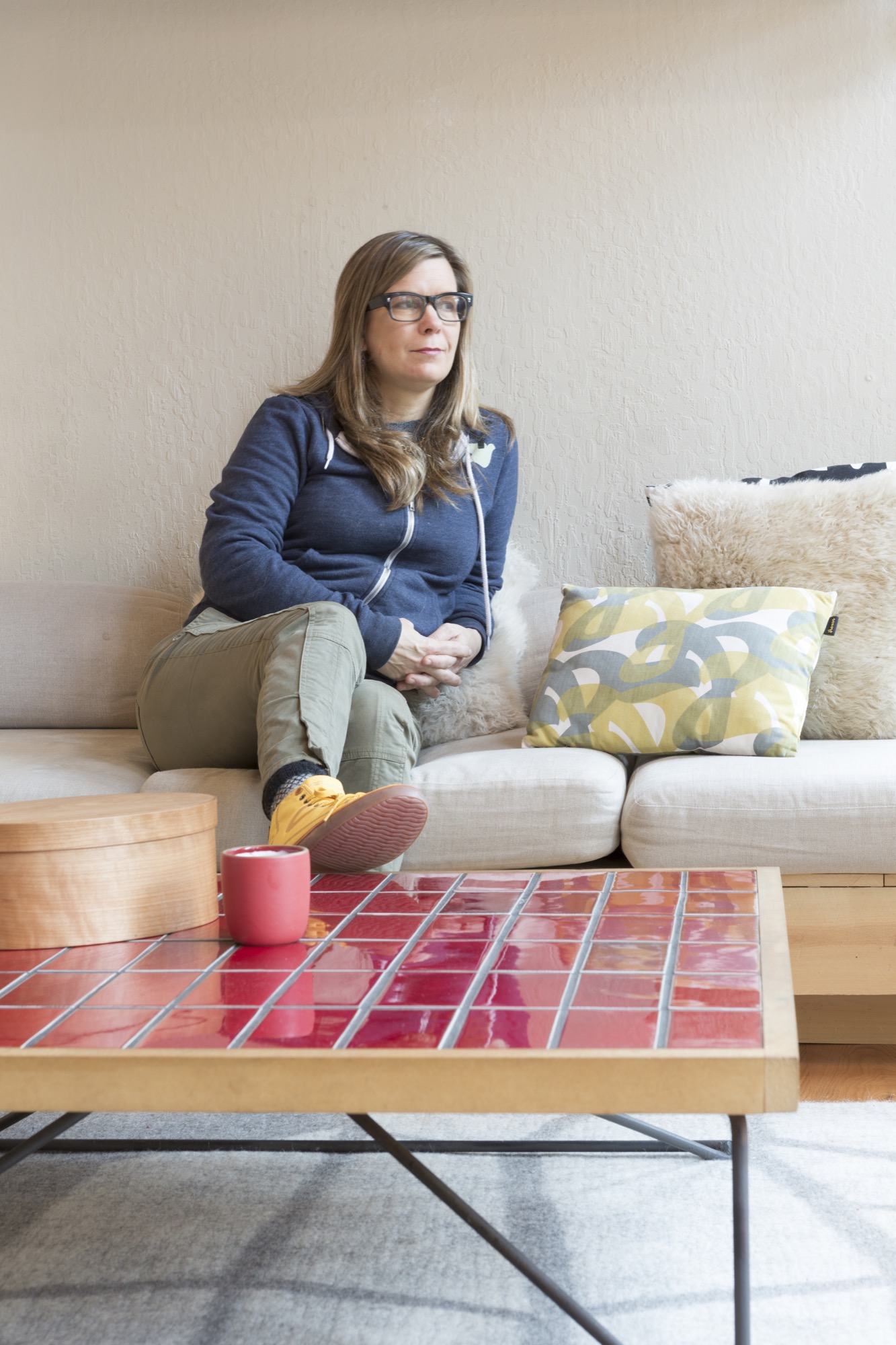
Her seat of inspiration in the house is the couch. The expansive view opens up from there. “In the afternoon the light comes in across the fireplace, and it really gives you this great sense of time of day because there is no direct light until late afternoon.” At that moment “you think, ‘Is my day going like it should have?’ It’s your last chance to get out and take a walk and make the most of your day. It’s like an alarm clock, and it’s the sun, and I’m reminded that I want to get outside.”
“That’s why we come here, to spend time with people we want to spend time with. You don’t normally get to have your friends over to sleep at your house for the weekend.”
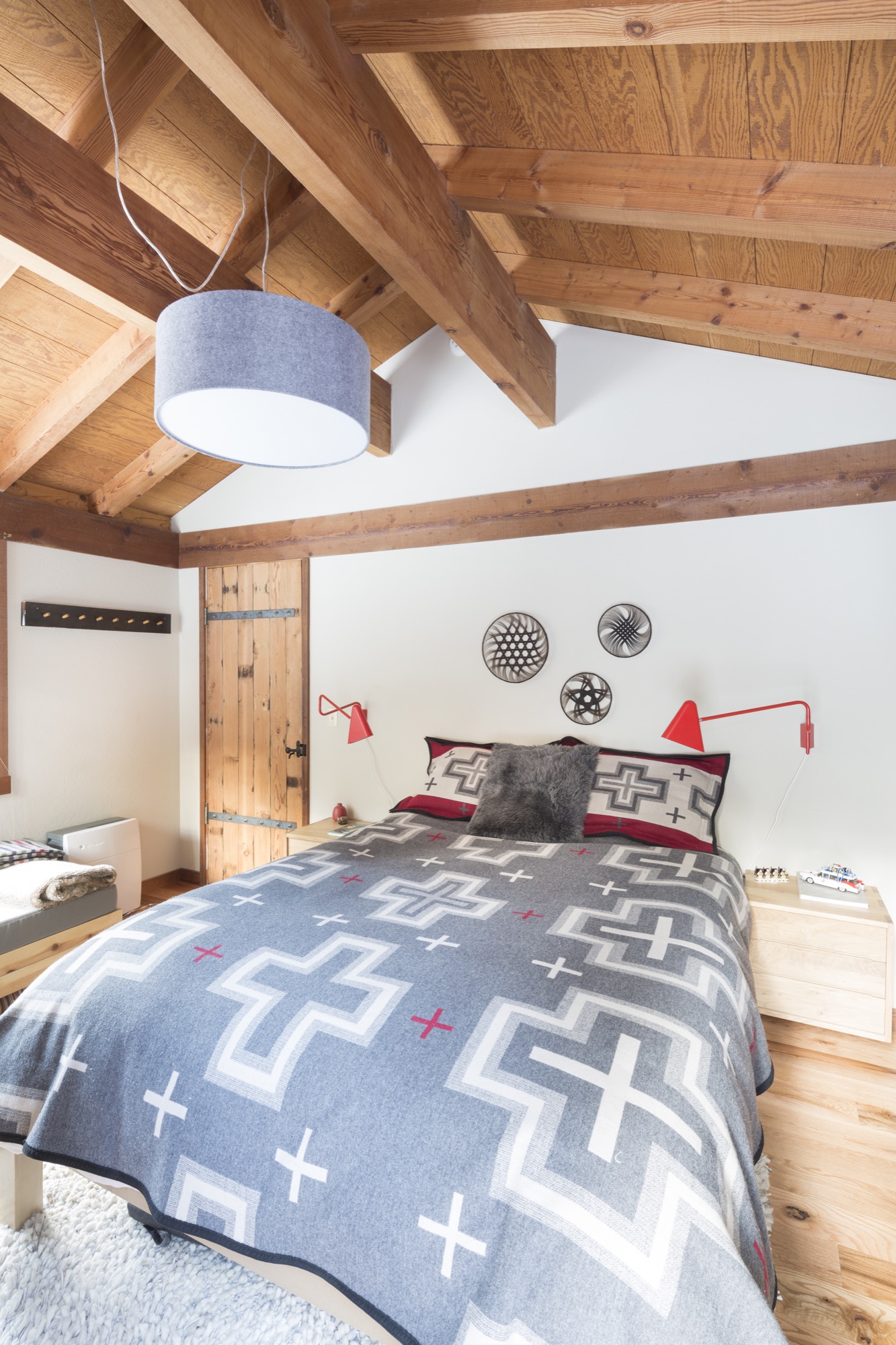
A place of inspiration
This sense of place—Tahoe, the outdoors, the sun, the mountains, the sky, the colors—serves as creative inspiration for Bailey. “When you are in that environment, there are all these base colors that ground you—make you feel the whole place, and then there are little points of vibrancy.” It’s an environment that is not bright colors all the time. “It’s subtle,” she says, “and the granite of the mountains is part of that, at least where we are. Granite grounds it colorwise. We are not on the lake, which is that crazy vibrant blue color.”
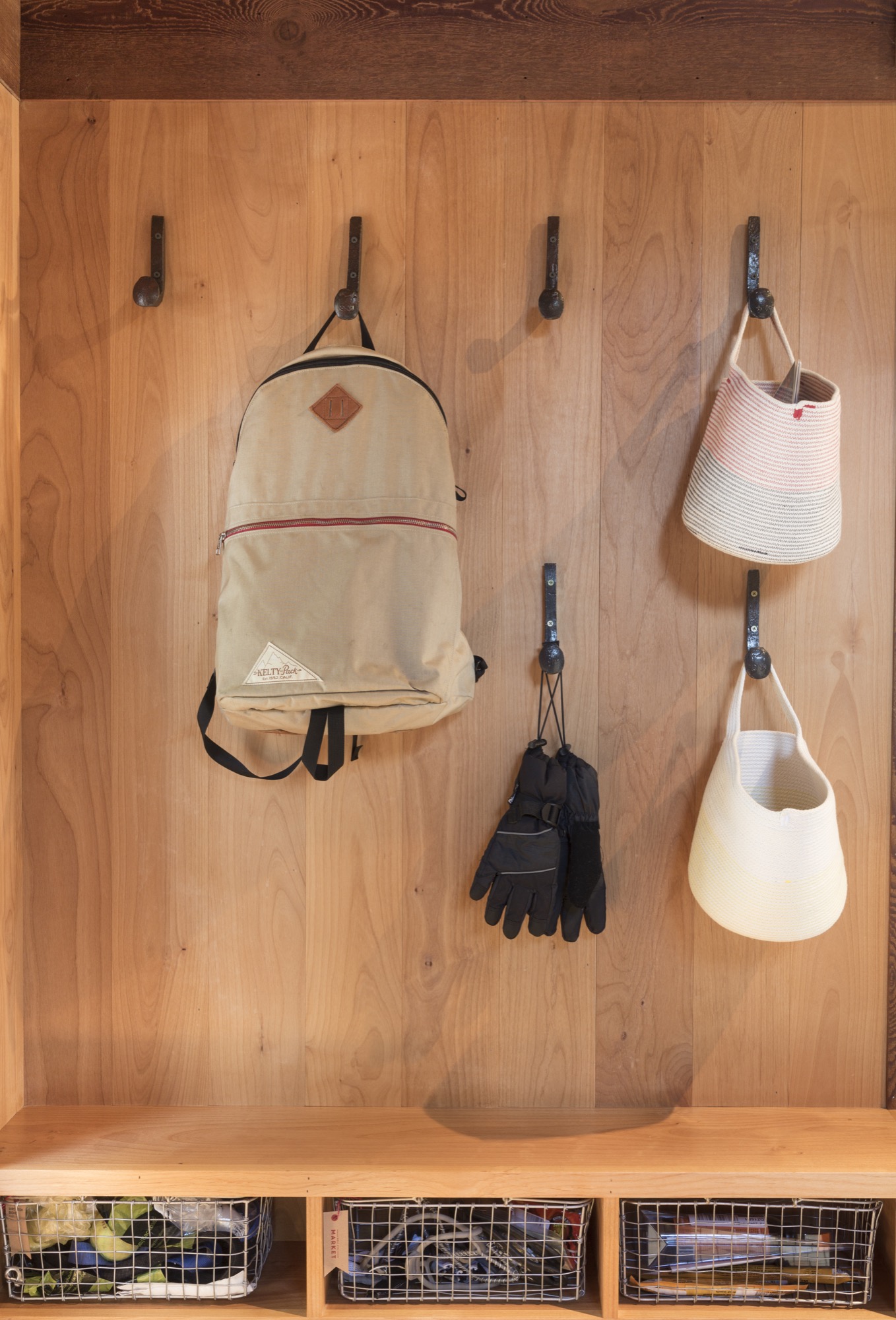
This play between vibrancy and calm, between old and new, between everyday and heirloom, is of particular interest to Bailey. “When I’m thinking of myself as a designer,” she says, “I think it’s important to create balance, and that can apply to everything. You’re trying to create a balance between a lot of different things—to make sure it’s making the right statement, the balance between doing something interesting and standing the test of time. Balancing utility with beauty—all those things you are trying to get right in the middle of, and if you do, then it does stand the test of time and meet its needs.” At the same time, “It is beautiful. To me, good design is taking all those things and striking the right balance.” △
Introducing: Alpine Modern's Chef Ellory
After traveling the world for a year, our new executive chef brings Nordic-alpine flavors and tales from around the globe to the kitchen at Boulder’s Alpine Modern Café
Ellory Blair Abels jumped into the food industry at the age of fifteen, when she began working in restaurants. After studying her passion at The Culinary Institute of America (CIA) in New York City, she accepted her first position with a catering company in a holistic retreat center in Upstate New York. With expanding industry experience, however, came the feeling something was missing. So the Houston, Texas native, who grew up in Atlanta, Georgia, packed her bags and traveled to expand her horizon—and her palate. Through this journey, her philosophy about food, life, and the kind of person she aspired to be has evolved. Immersing herself in different ways of life and seeing different countries has opened her eyes to a whole new vision of food as a celebration of life and culture.
Upon returning, she started afresh in San Francisco, where she found her cooking match: Ellory joined the lovely Lisa Chatham in her personal cheffing business, which together they expanded into the catering company Green Heart Foods. Over the course of four years, the business grew from two people to fifty employees and a café. With two production kitchens and another in the making, helping to build Green Heart Foods was a life-changing experience for the young culinary talent.
Then, in 2015, Ellory made one of the hardest decisions she’s ever made—to leave behind what she knew in San Francisco and explore the unknown. Going after a lifelong dream, she once again packed her bags; this time not knowing when she would return. She bought a one-way ticket to Peru and traveled to eight different countries in one year.
Ellory has recently returned to the United States to begin her next adventure in Colorado, where she says she is “beyond excited to join the amazing family of Alpine Modern.” Now she can’t wait to share what she has learned and seen over the past year through her food at the Alpine Modern Café in Boulder.
A conversation with Alpine Modern Executive Chef Ellory Abels
AM Who are you, in a nutshell?
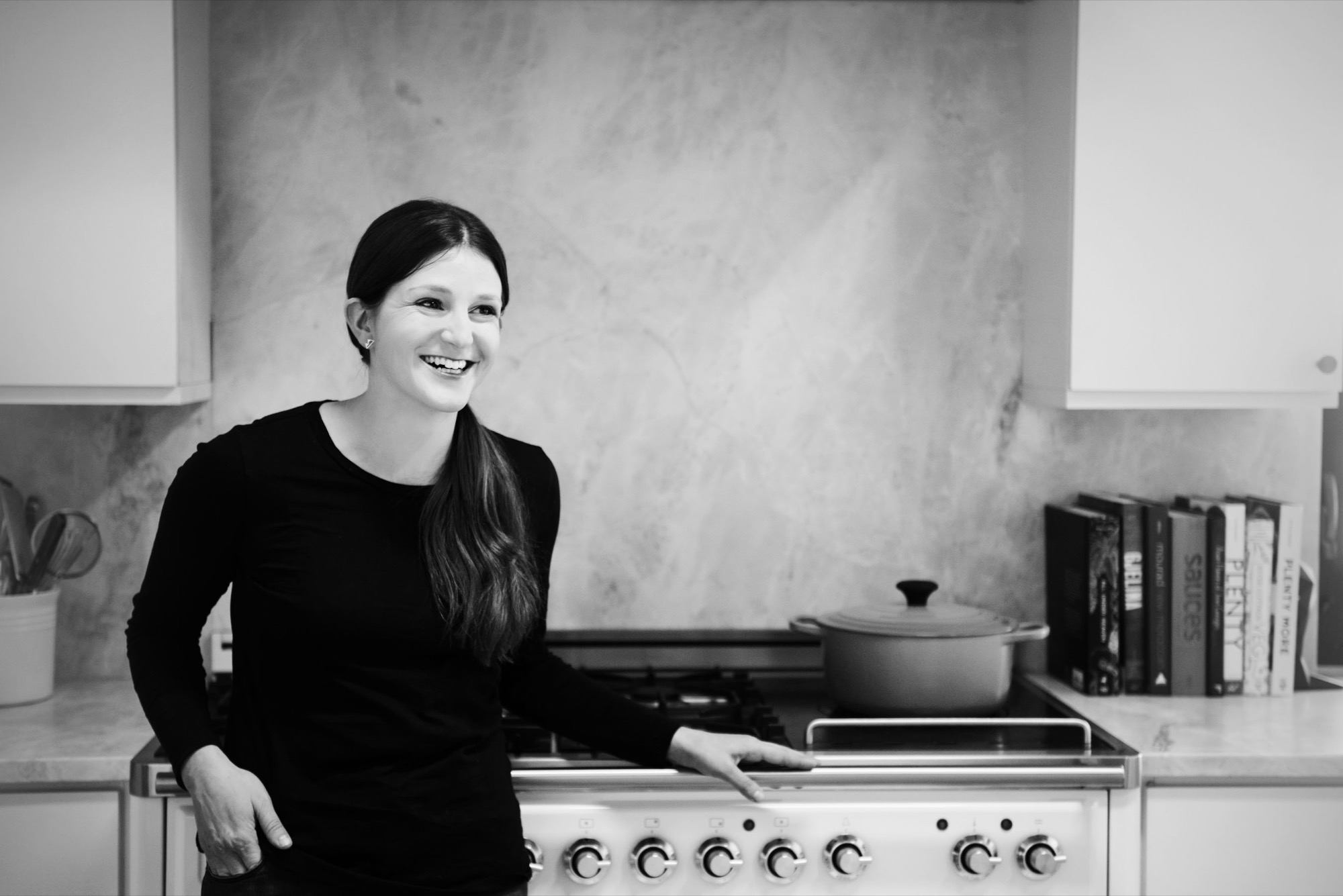
EA I am an opportunist. I’m always looking for ways to push the boundaries. I don’t like to live my life within the lines. I make my own rules and love to take risks. I am very curious and like to explore the questions of life. Besides that, I strive to live a simple life that’s not overly complicated. I take pride in surrounding myself with people I love and sharing memorable experiences with them.
AM Along your path, what experiences and encounters have made you who you are today?
EA Traveling! I have been lucky enough to have been able to travel pretty intensely from a very young age. Last year, I took a huge leap to leave the home I’ve made in San Francisco and explore the unknown. I decided to fulfill a lifelong dream of mine and travel longterm. I bought a one-way ticket to South America, with no plans other than to see all of the beauty the world has to offer. I explored eight different countries, two continents, and seven states in one year, collecting friends, stories, spices, and culinary techniques from every corner of the world.
It was the single most inspiring, eye-opening experience of my life and has shaped me as a person and as a chef. Traveling has definitely been my biggest teacher in life. The more I explore, the more my senses are awakened, and the more alive I feel.
“I explored eight different countries, two continents, and seven states in one year, collecting friends, stories, spices, and culinary techniques from every corner of the world.”
AM Share some of your childhood memories of food.
EA I grew up in a Jewish household where food was always the center of the event. My parents were amazing at exposing me to different ethnic foods from a very young age. Some of my favorite memories are cooking for the Jewish holidays and for Thanksgiving.
“I grew up in a Jewish household where food was always the center of the event.”
AM When and how did you know you wanted to become a chef?
From a young age, I was very determined to be an artist. I filled my spare time after school and my summers with a variety of art classes. My dream was to go to the Savannah College of Art and Design. Looking at the portfolio requirements to get in, however, I realized this was not what I wanted. I explored other ways to apply my creative ability. Food had always been a huge outlet for me. I grew up spending a lot of time cooking and experimenting in the kitchen with my dad. So I decided to put more effort into exploring the profession of food by working in different restaurants. After being involved in the food world for only a couple of months, it became very apparent that this was the path I wanted to take. Food is my own expression of art and is definitely my medium.
“Food is my own expression of art and is definitely my medium.”
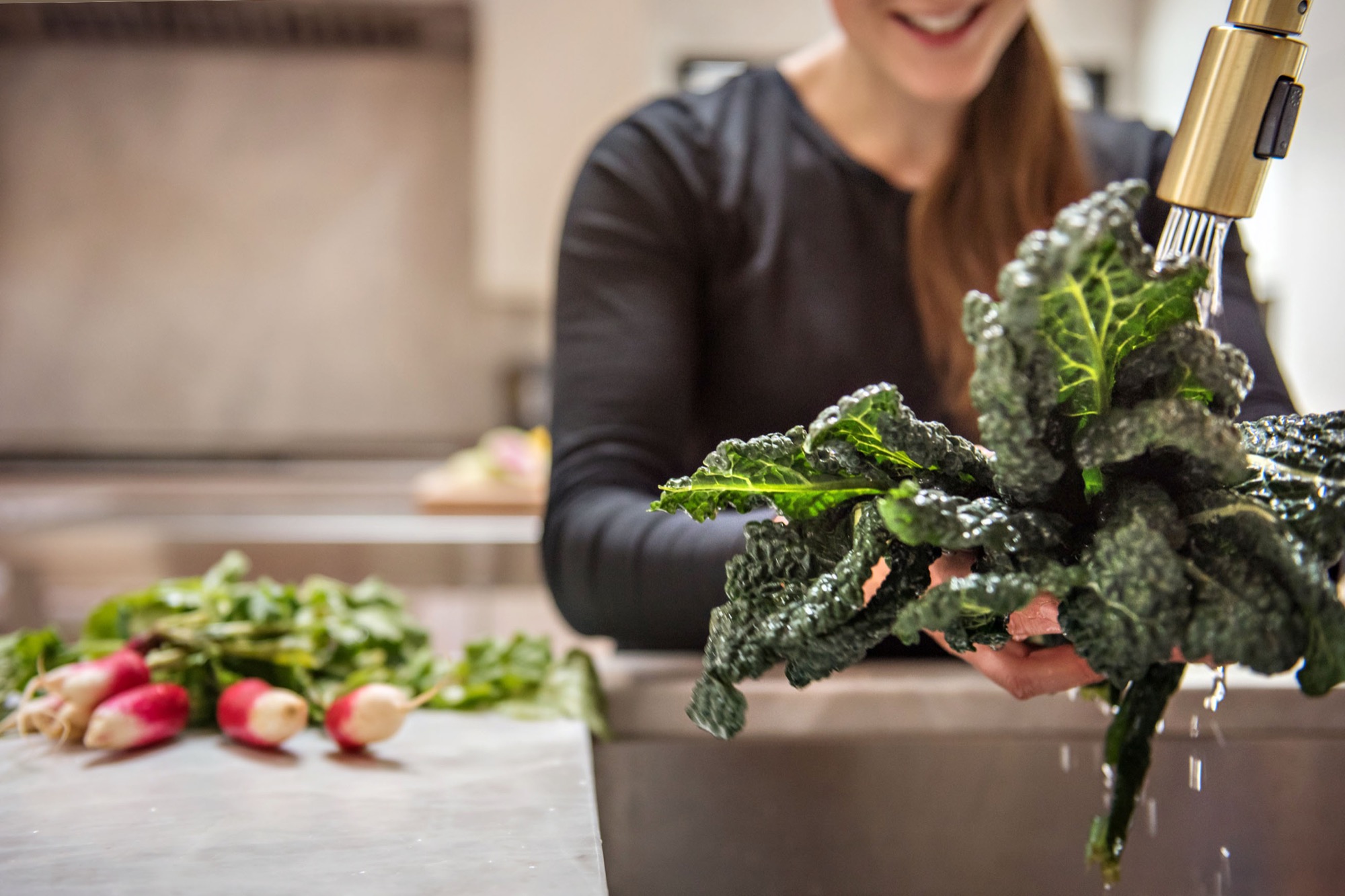
AM Who taught you how to cook?
EA My dad. He inspired me from a very young age to get into the kitchen. He also grew up working in a kitchen for the family diner in New Jersey, called “Abels Diner.” The dinner served a mix of comfort food and Jewish specialties. Listening to the many stories he has about growing up in the dinner has always inspired me and made me want to be involved in food. Fun fact… Frank Sinatra was a busboy for my grandfather’s diner. True story!
AM Who is your culinary icon? What do you admire about her or him?
EA Yotam Ottolenghi. I love his approach to food. His style and flavor profiles are very similar to what I love to cook. Israeli food is also one of my favorite cuisines to cook, and his cookbook Jerusalem is by far one of my favorites.
AM What’s your favorite food, and what do you love about it?
EA Hmm, that’s such a hard question. It really depends on the season and what trip I recently came back from that inspired me. I’ve been cooking a lot of curries from my most recent trip to India. It’s been fun to experiment with a lot of spices I brought back and to try to master the art of Indian cooking. Besides that, my go-to food to cook is probably Israeli food. I just love the mix of flavors and textures.
AM What culinary traditions are your methods and recipes rooted in?
EA Exploring food while traveling has shown me a variety of traditions, methods, and recipes that I bring into my own kitchen. I cherish these experiences and try to recreate them in my own version and share them with others along with the stories behind them.
“Exploring food while traveling has shown me a variety of traditions, methods, and recipes that I bring into my own kitchen.”
AM What’s your definition of good food?
EA Clean, simple, colorful, thoughtful, lots of love!
AM How do you translate Alpine Modern’s ethos of “quiet design” into your work at the Café in Boulder?
EA The food I create for Alpine Modern is clean and simple. It’s not overthought and shows off so much more by letting the ingredients speak for themself.
AM What’s your vision for Alpine Modern’s culinary future?
EA We have lots of exciting plans that are in the development phase. We’re trying to expand the experience Alpine Modern shares with it’s customers and bring the community together. One of the big changes is that we are now renting out the Café during after-hours for private events.
AM What’s your favorite place in the world, and why?
EA Tough question, but I’ll have to say, even with all of the amazing places I have visited around the world, nothing will ever beat Yosemite. No matter how many times I go there for an adventure, that place gives me goosebumps and brings the biggest beaming smile to my face. It’s just pure magic.
“Even with all of the amazing places I have visited around the world, nothing will ever beat Yosemite… It’s just pure magic.”
AM What makes you happy?
EA I’ve learned it’s the simple things in life that bring me the most joy. Being surrounded by my family and friends and living an active lifestyle that gets me outside everyday is my happy place in life.
AM What are you working on these days?
EA Lot’s of different things. I’m getting in training mode for climbing season to really try to get after it this year. I’m also in the process of developing new recipes, lots that are inspired by my recent travels. Besides that, I’m really putting a lot of focus on sticking around the states this year and spending lots of time with my family and friends and my pup, Chalten. △
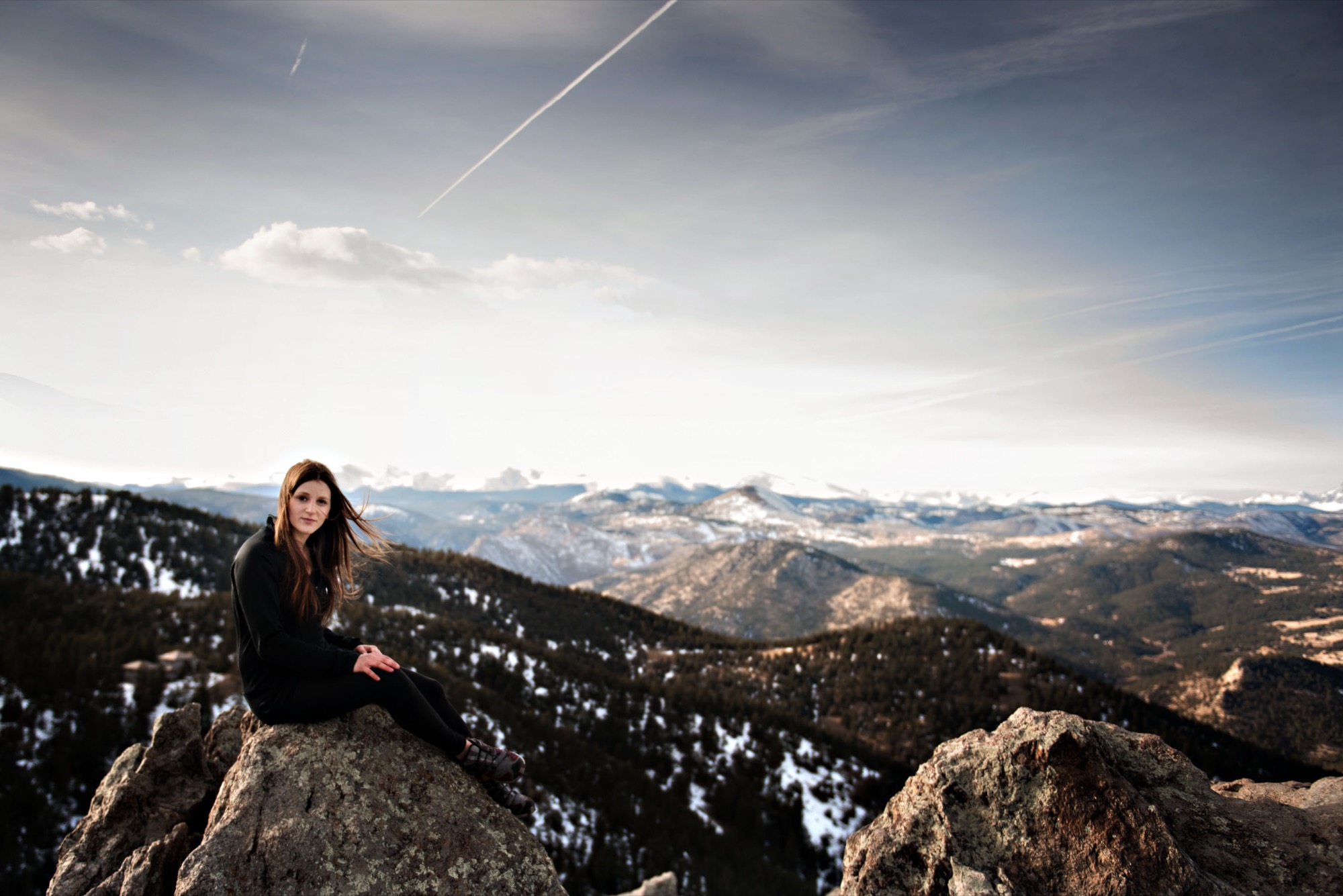
Morning at Home
“I’m going to make everything around me beautiful — that will be my life.”
— Elsie de Wolfe (1865–1950), interior designer, United States
Surrounding yourself with delightful everyday objects you love makes everyday life more beautiful. Items you look at and touch all of the time carry significance in creating life’s simple pleasures. Both form and function are important. When a knife, a kitchen cloth, a teapot, a mug are so impeccably designed, so sensuously textured, and so faultless in their utility, all but their overt beauty is rendered unnoticable. Good design makes your day, begin it in beauty.
Quite similarly, a strengthened body harbors a nourished soul. Taking time to mindfully prepare real food for yourself and those who wake up with you feeds self-respect and manifests regard for the well-being of family and friends gathered at your table. Good food makes your day, begin it in strength.
Curation for an alpine-modern morning

Recipe: The Perfect Egg Sandwich
A simple dish to remind you to try new new things in life. Make→

Glass French Press
This Glass French Press (available in gray or clear) is an evolution of the classic press pot. The press brews a perfect full-bodied pot of coffee or tea in the traditional French Press method. Made of premium heat-proof borosilicate glass, it is durable and able to withstand extreme temperatures. Shop at Alpine Modern→
Recipe: Kale and Potato Pancakes with Gravlax and Nordic Yogurt
Alpine Modern Executive Chef Ellory Abels created a delicious dish to make for your weekend brunch. Make→

Recipe: Alpine Granola
A morning at home with a simple bowl of toasted oats and nuts. Make→

Alishan Jin Xuan High Mountain Spring Oolong Tea / Taiwan
The name Jin Xuan refers to a specific tea varietal developed by the Taiwan Research and Experiment Station (TRES), which is dedicated to the improvement of the tea industry of Taiwan. Jin Xuan teas are satisfying as they offer good amplitude in texture and taste. With mild floral notes, they have the greatest potential for sweetness, with hints of exotic fruit. Teas elaborated with Jin Xuan leaves have a particularly creamy texture with a distinctive milky smoothness and sweetness. Jin Xuan has typical green, crisp pastoral notes with hints of mountain flowers that charm the nose. The perfect cup of tea to begin the day. From Taiwan Tea Crafts.

Tetsubin Tea Vessel / Japan
A tetsubin is a Japanese vessel for preparing tea. This beautiful cast-iron tetsubin is adorned with the traditional “snow pellets,” or dots. An added benefit of the cast-iron is that iron is transferred from the kettle to the drink, providing the body with the healthy mineral. From Ikenaga Iron Works Japan.

Recipe: Grapefruit Brulée
Broiled in the oven, the grapefruit forms a delicious golden brown and crispy surface. Make→

Forest Honey / Italy
Dark amber color, rich taste, though not overpowering, this honey is great spread on bread. Born from the nectar of flowers in the wilderness of the fragrant, humid forests of northern Italy, this honey has the fresh and delicate scent of the mountains. From Rigoni di Asiago.

Fox In The Leaves Tray
Beautifully printed melamine tea tray featuring Donna Wilson’s watercolour illustration of a fox in a leafy woodland. Made in a small factory in Belgium. Shop at Alpine Modern→
Recipe: Grapefruit Brulée
Broiled in the oven, the grapefruit forms a delicious golden brown and crispy surface.
Halve each grapefruit crosswise and cut a thin slice of peel from the bottom of each half to stabilize the pieces. Remove all seeds from the grapefruit and loosen the segments with a paring knife. Sprinkle each half evenly with sugar and a pinch of salt. Broil in an oven on high to form a golden brown and crispy surface. Serve immediately. △
Editor's Choice: Journey to Japan
The Beauty of Use
Hidden in the Japan Alps, a Czech-born artist makes woodstoves that match the simplicity of Japanese interiors. Read more »
The Skyward House
Japanese architect Kazuhiko Kishimoto designs a human-scale house for a retired teacher. Read more »
Repair With Gold
The Japanese tradition of wabi-sabi. Read more »
A Platform for Living
A weekend refuge in Japan’s Chichibu mountain range consists of a simple larch wood structure and two North Face tents for bedrooms. Read more »
Zen and the Art of Knife-Making
Using skills derived from the ancient craft of samurai sword-making, a blacksmith in the Japan Alps makes knives so delicate and dangerous they turn chopping into an artful act of passion. Read more »
In Search of Tenkara
The founder of Tenkara USA travels to Japan and brings back the traditional method of fly-fishing with a long rod and without a reel. Read more » △
After It, Covered
After a cold night stranded in their van, Wylie Robinson and his friend and co-founder Nick Polinko created Rumpl, a sleeping-bag blanket.
After a cold night stranded in their van, Wylie Robinson and his friend and co-founder Nick Polinko created Rumpl, a sleeping-bag blanket.
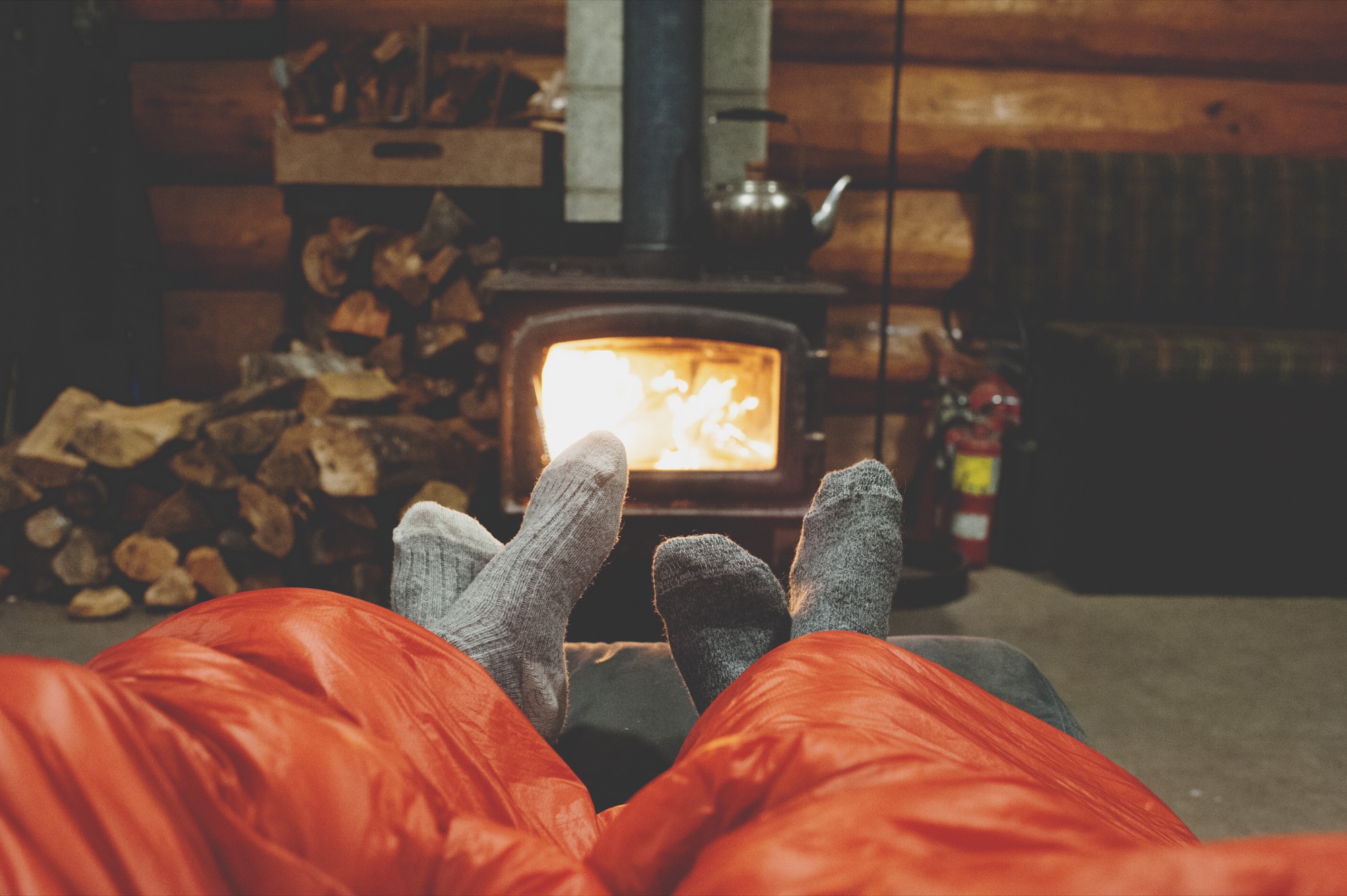
The San Francisco native studied environmental design at the University of Colorado Boulder and graduated in 2007 with an emphasis in architecture and business. Robinson stayed in Boulder, where he worked as a designer at Communication Arts for a couple of years, before returning to California to work for MKTG and later for Landor Associates. Today, the thirty-one year old lives at Ocean Beach in San Francisco with his fiancé.
Alpine Modern caught up with the entrepreneur to talk about the making the first Rumpls, what “home” means to the designer, and the little things in life that make him happy.
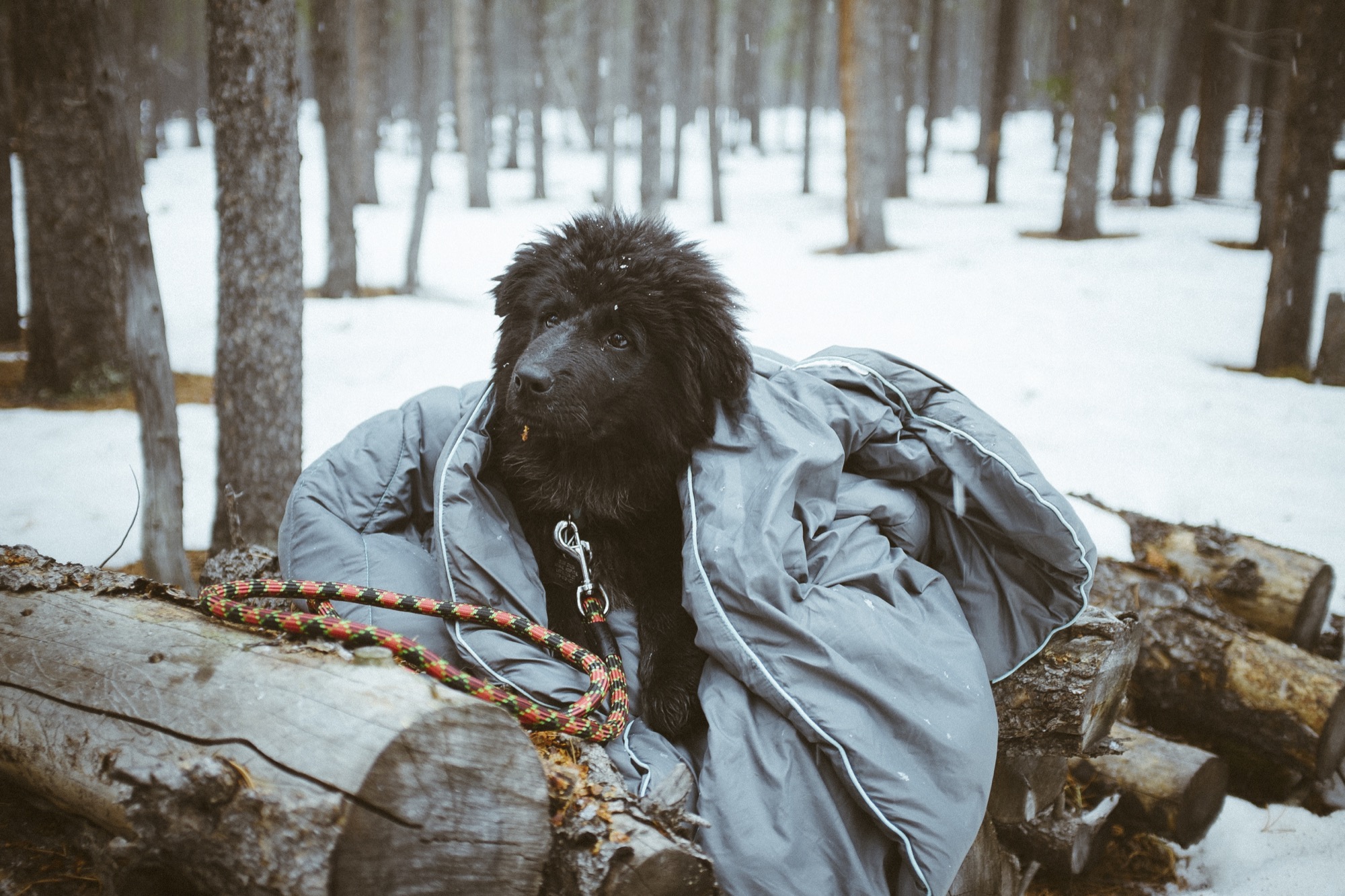
A conversation with Rumpl Founder Wylie Robinson
AM Who are you, in a nutshell?
WR I am an easily inspired creative person who loves the outdoors. I spend most of my time obsessing over my business while fantasizing about being in remote places with no internet. And one does not help the other!
AM Along your path, what experiences and encounters made you who you are today?
WR Growing up in San Francisco and living in Colorado for seven years was huge. In San Francisco, there is so much creative energy and entrepreneurship, and in Colorado there is such passion for healthy living and access to the outdoors. These places have both heavily influenced my personality. I’ve met so many people in both places who inspire me to carve my own path and blend my work with my hobbies.
AM What’s the story behind Rumpl?
WR The idea for Rumpl began with two dudes trapped in a frozen van. My friend Nick and I were on a surf trip down in San Diego in December 2012, when we got word of a big storm coming through Mammoth. We happened to have our ski gear with us, so we decided to head east into the Sierras for some early-season backcountry skiing. We camped out at some hot springs near Bishop, California, and woke up the next morning to a car that wouldn’t start. Too far from the main road and without cell phone service, we had to wait around for someone to show up at the hot springs, so we bundled up in our sleeping bags and started drinking whiskey.
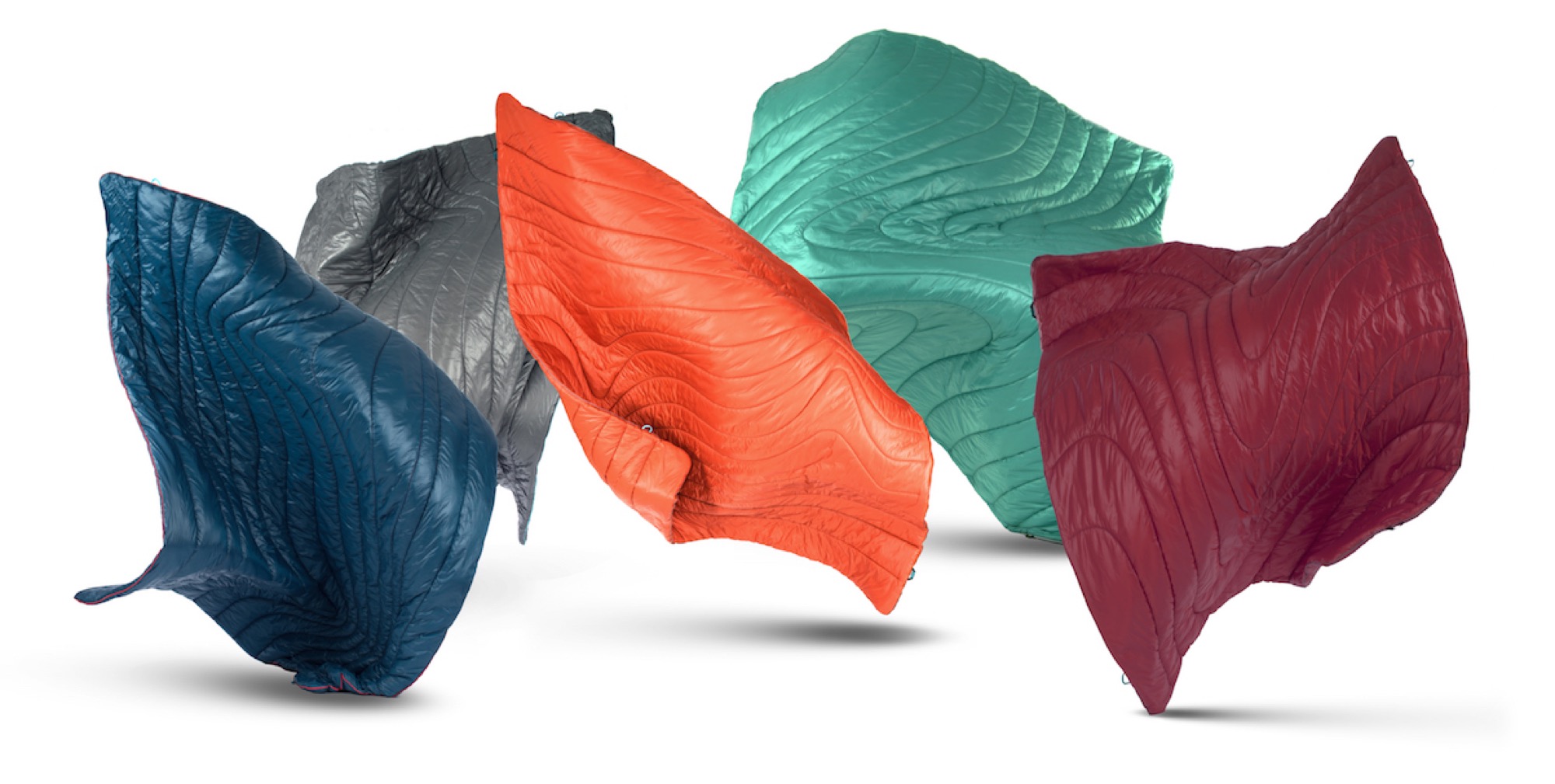
After several hours, the conversation turned to the unlikely subject of bedding. We both realized that we liked our sleeping bags more than our comforters back home. We decided that once we got out of our situation, we’d make “sleeping-bag blankets” to replace the comforters on our beds.
Once we got back to San Francisco, we met with a few friends who worked for companies like Mountain Hardwear, Patagonia, and Marmot to get more info about construction and material specs. They helped us pick materials and sew up our first blankets by hand. Still unsure if the idea was viable, we turned to Kickstarter, where we had a really successful crowdfunding campaign. That validated the idea and allowed us to quit our jobs to pursue Rumpl full-time.
“We decided that once we got out of our situation, we’d make ‘sleeping-bag blankets’ to replace the comforters on our beds.”
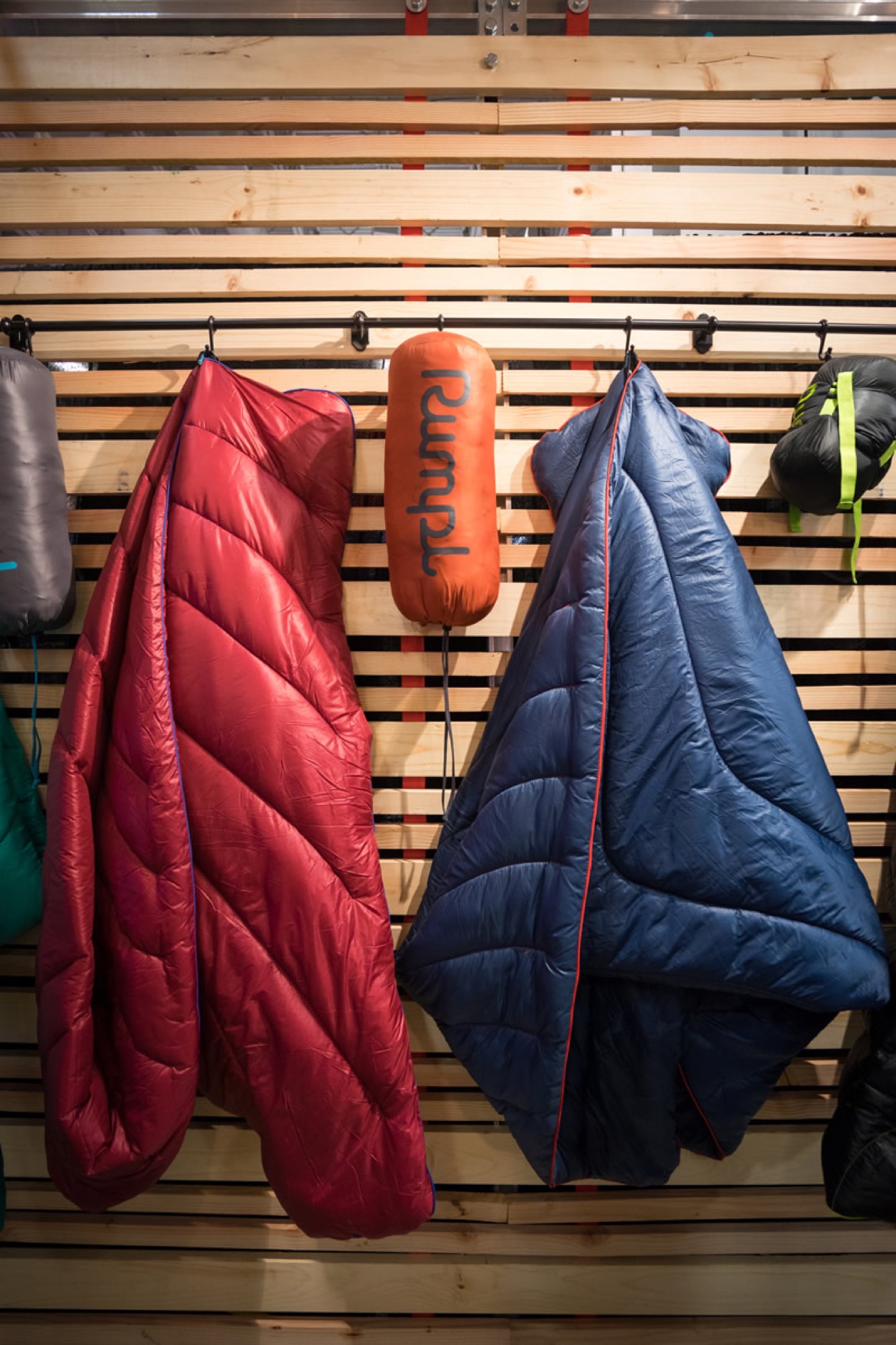
AM Why blankets, and why no other products?
WR More will come out of Rumpl that goes beyond blankets, but for now we’re just focusing on doing blankets really well and familiarizing people with our brand.
In general though, I think, consumers like and appreciate brands that focus on owning one thing. It sends a really clear message and makes every action by the brand intentional.
AM What’s the story behind the brand name?
WR It’s an onomatopoeia—“Rumpl” sounds like how the product behaves. You’d never neatly fold a Rumpl blanket, you just kinda crumple it up and stuff it in the stuff sack. We’ve also developed the word to mean a few things when spoken from our brand voice. “Rumpl” can be a noun, a verb, and an adjective… My Rumpl stays in my car, I rumpl under the stars, I keep my bed messy and rumpled.
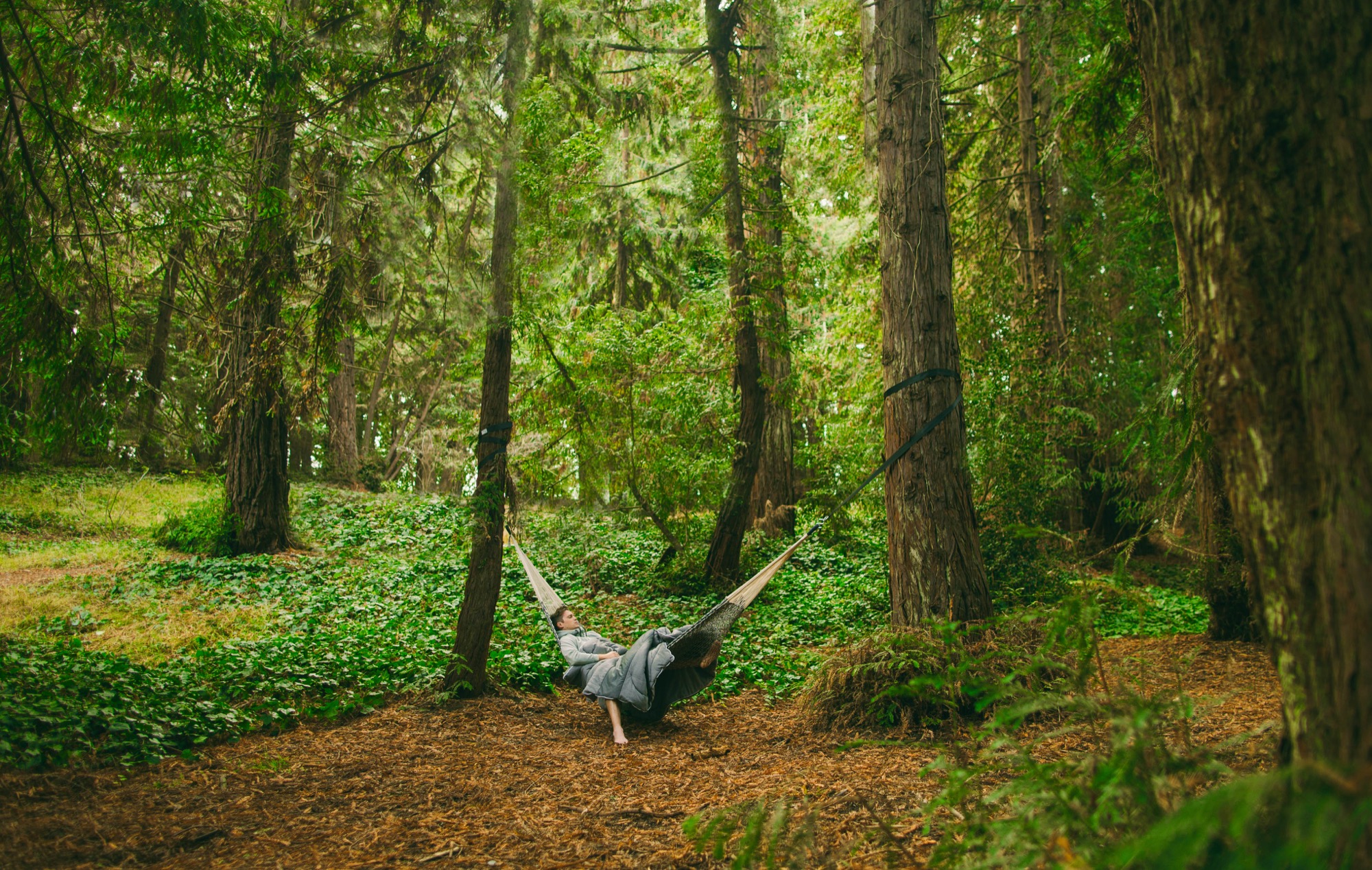
AM In what traditions are your modern products rooted?
WR The nostalgic feeling of cozy warmth that you’d find in a sleeping bag. We all know the feeling of being toasty warm in a sleeping bag, with just the tip of your nose poking out and feeling the chilly air. The tactile experience with Rumpl blankets takes you back to those moments outside, cuddled up under the stars.
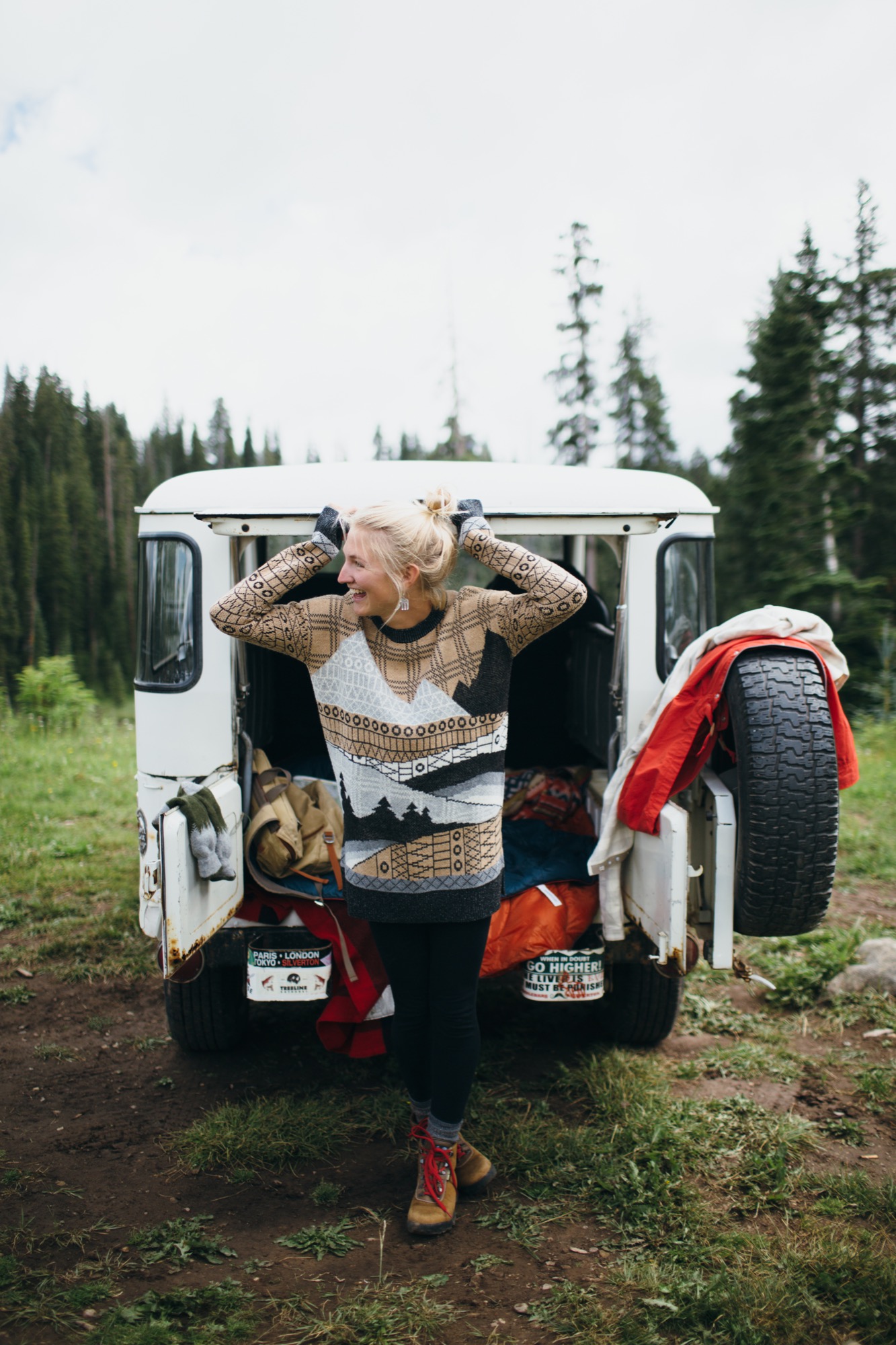
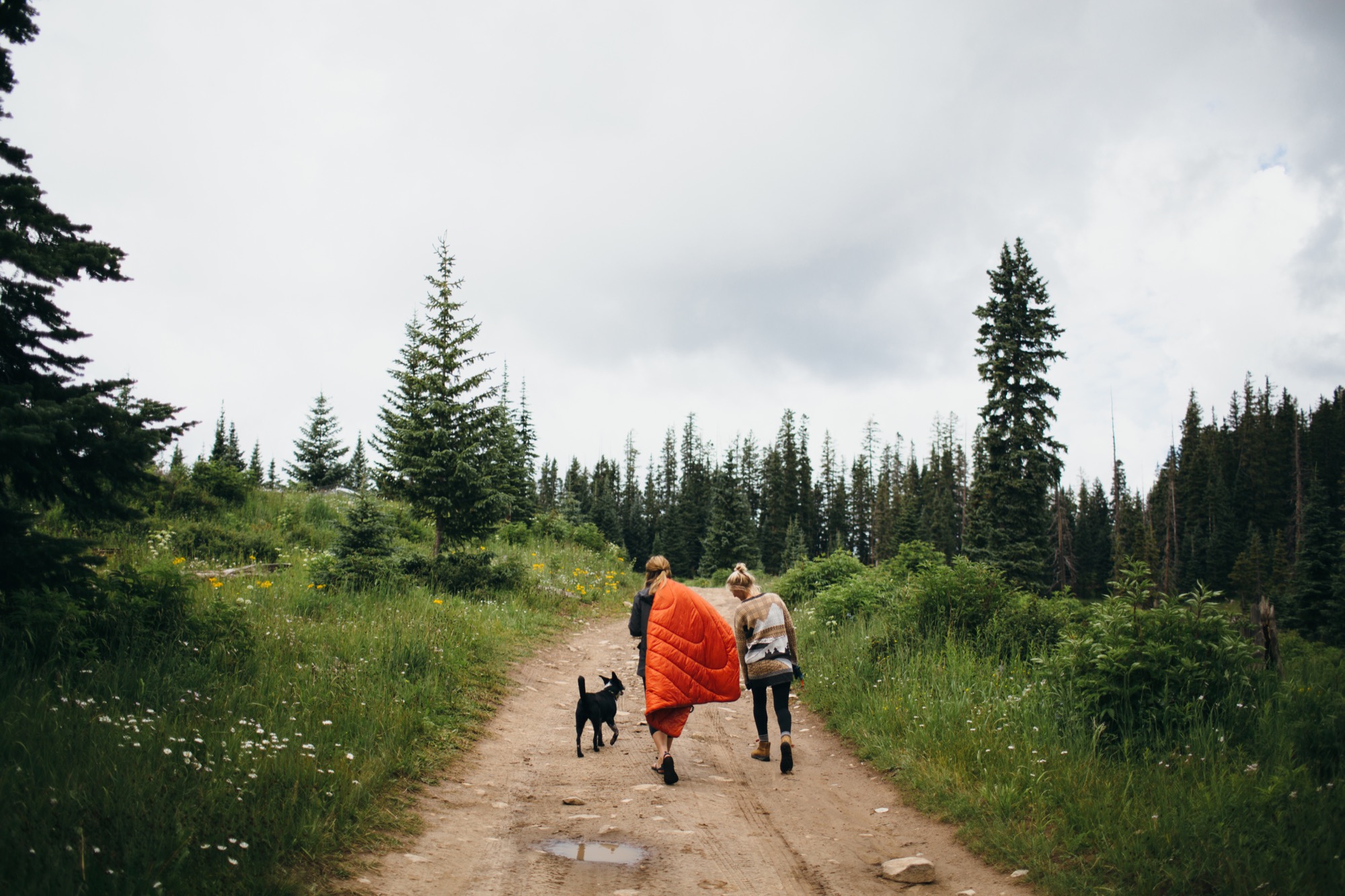
AM How do you choose and source your materials?
WR Beyond the nostalgic tactile factor, the materials work really well. We source a really nice insulation that was developed by our factory and regulates temperature perfectly, so you’re never too hot. The nylon shell is super durable and sheds water. The whole thing is machine-washable.
We have an amazing factory partner that sources materials from over 200 different mills in Asia. We’ve visited them in China a number of times and their facility is beautiful and spotless. Workers are treated very well, and everyone we spoke with was excited about working with us. We tell them what our goals are, and they find several materials that suit our needs. We narrow that down based on hand-feel and costing and move forward with the right tool for the job.
AM What makes Rumple alpine modern?
WR Rumpl is a modern take on everyday homewear as seen through the eyes of an outdoor enthusiast. We find inspiration from the gear we use to stay comfortable outside and apply the same design principles to our blankets. The whole project is a blend of equal parts alpine style, modern design, and lifestyle communication.
“The whole project is a blend of equal parts alpine style, modern design, and lifestyle communication.”
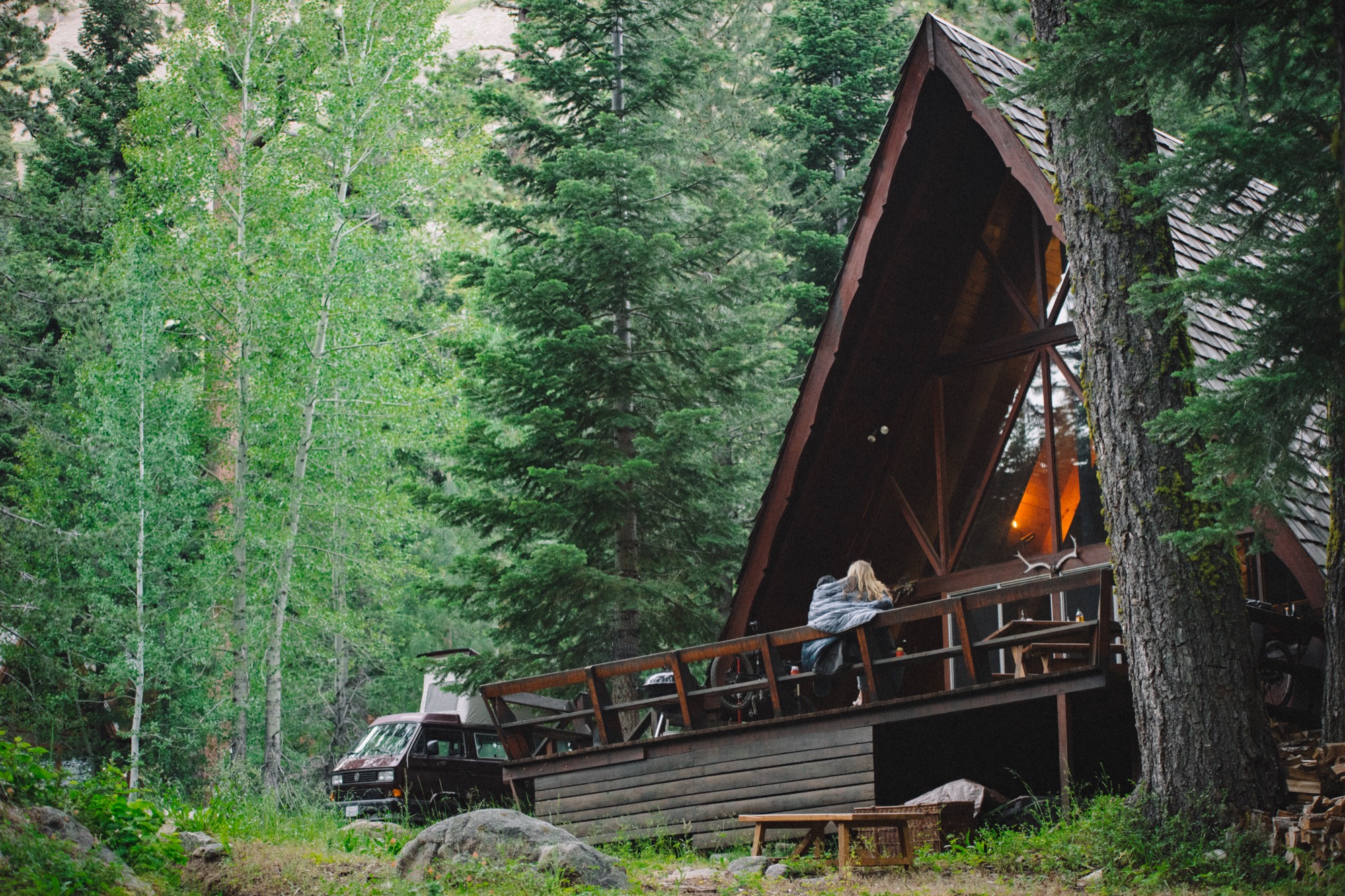
AM What makes you an outdoorsman at heart?
WR My simple love for being outside and connected to nature. I can get the feeling of interacting with nature from being just about anywhere. Whether I’m gardening in my yard in San Francisco or I’m twenty-five miles deep in the backcountry, I can still smell, taste, hear, and feel my surroundings, and that brings me joy.
AM What do you do when you’re in the mountains?
WR While I was in school at CU Boulder and working at CommArts in Boulder, I raced downhill mountain bikes pretty seriously. I raced on the school’s team and eventually raced in the pro category throughout the United States, so mountain biking is really close to my heart. I also camp, hike, ski, climb, and surf whenever possible.
AM What does quiet design mean to you?
Design that is so well done you don’t even notice it.
AM What’s your favorite place in the world, and why?
WR Whistler, British Columbia. The mountains are huge, the terrain is amazing, the town is so fun, the locals are super nice, and the overall vibe is so positive. It’s not the most exotic or distant place on Earth but the good energy is second to none.
AM What does “home” mean to you?
WR We talk about “home” all the time at Rumpl. To us, it’s a headspace, not a physical location. Home is where you’re comfortable. Whether that’s indoors sitting in a comfy chair with a cup of coffee, sticking your toes out the back of a van on the side of a desolate road overlooking an expansive valley, or deep in the backcountry rested up on a rock next to a campfire, it’s where you feel comfortable, relaxed, and safe.

AM What’s most important to you in life?
WR Trying to stay balanced between working and taking time away from my desk. It’s really tough for me because I can get pretty obsessed with what I’m working on—but I’m improving. That and surrounding myself with good people who energize me.
AM What makes you happy?
WR Lots of little things… My fiancé’s dimples, being alone on my bike in the mountains, a cold beer after a surf, a hot cup of coffee on a wintery morning. Generally speaking, very small things make me happy.
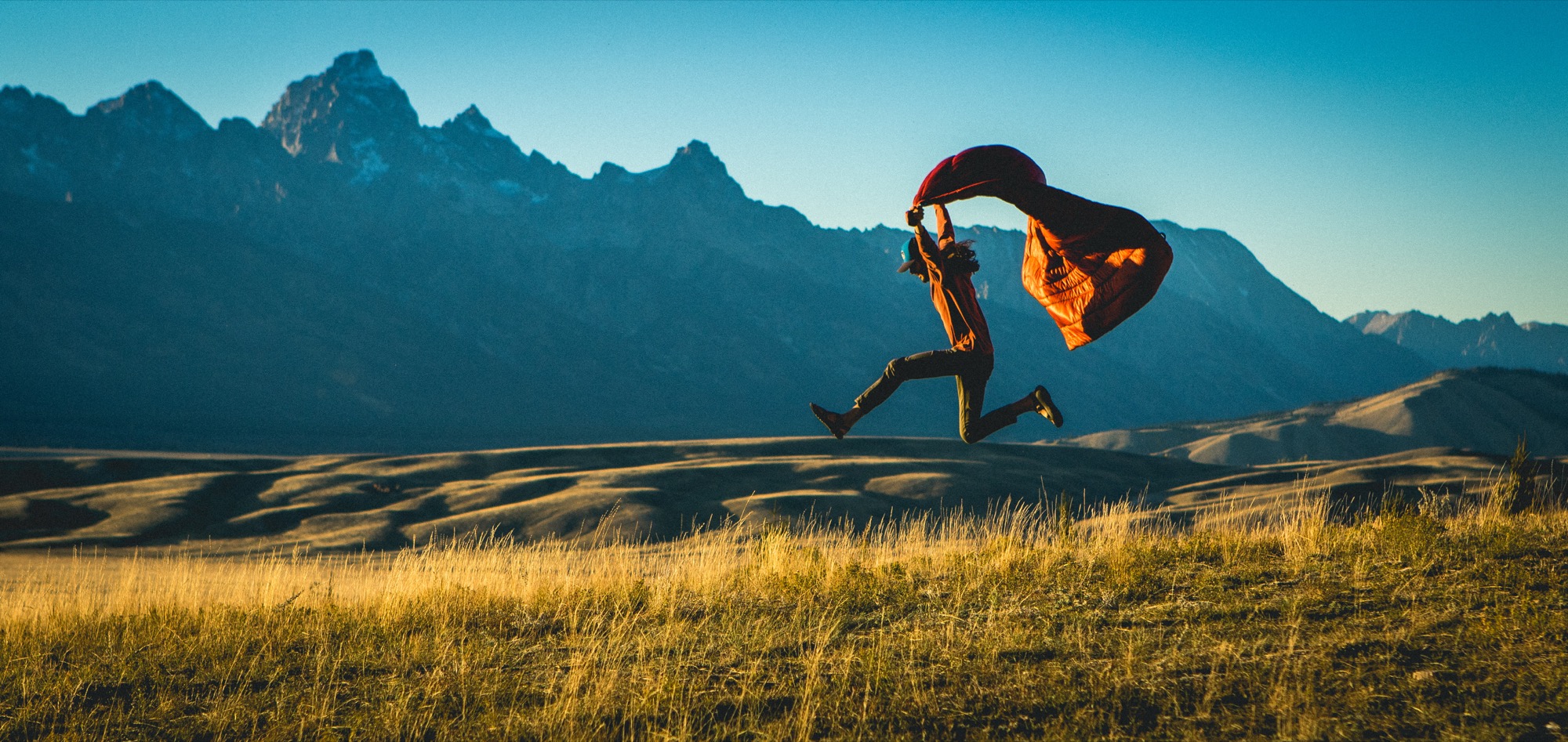
AM Who is your design icon, and what do you admire about her/him?
WR Tim Brown of IDEO is pretty inspiring to me. Before learning his interpretation of the creative process I thought it was bad to let ideas flow off-track. He made me realize that’s OK—to let your mind wander in directions that may not perfectly relate to the problem you’re trying to solve. A tangential train of thought will still teach you something that can be used to better inform the final solution. I recommend his book Change By Design to any young designer or entrepreneur.
AM What are you working on these days?
WR Rumpl keeps me busy 24/7. There’s just so much to do at a small company with limited resources. Specifically though my biggest goal for 2017 is to make the company more automated and scheduled. Right now we’re shooting from the hip in a lot of ways and I want to set clearer goals and work off a more defined calendar. That means saying no to a lot of opportunities and only focusing on the main objectives. It’s tough to say no to great opportunities but in order to grow up, every company needs to do that. △

Recipe: Kale and Potato Pancakes with Gravlax and Nordic Yogurt
Alpine Modern Executive Chef Ellory Abels creates a delicious dish to make for your weekend brunch
Alpine Modern Executive Chef Ellory Abels created this dish for your New Year's brunch—or any Sunday morning of the new year. Yield: 2 portions/6 cakes Prep Time: 10 mins Cook Time: 10 mins

Ingredients
1 cup chopped kale ¼ cup minced red onion ½ cup shredded chef potatoes 2 whisked eggs ½ tsp dill 2 tbsp brown rice flour ½ tsp lemon zest ¼ cup of preferred frying oil 6oz Gravlax ¼ cup nordic yogurt 1 lemon sliced salt and pepper to season
Tools
Medium Bowl Non-Stick Pan Spatula Whisk Zester Knife Cutting Board

Method
Combine chopped kale, red onion, potatoes, eggs, dill, flour, and lemon zest in bowl.
Mix together and season to your liking.
Use non-stick pan with frying oil and heat up on medium heat. Once oil is smoking put make medium size cake and cook till crisp on each side.
Finish with a dollop of nordic yogurt on each cake with gravlax and a squeeze of some fresh lemon juice and enjoy! △

Crystallize
Temperatures in Boulder are dipping deep below freezing. There is a poem for that.
With shimmering deadliness,Delicate sharpness, Paradoxical strength,
Flexible and adaptable, give way, Fray into a panorama of mosaic lines, Or stand on one’s own accord.
Do not hide: refract and reflect, Intensify that which one magnifies, All seeing.
Be ice, be strong in fragility, be pierced and reformed.
Resilient, frozen, Susceptible to the seasons, thaw, reform, and crystallize, Be clear, clarifying.
Allow yourself to be at the mercy of natural cycles, Grow something bright in a season of death.
Silent, Speak only in the drip of the sun. △
Recipe: A Modern Gingerbread House
Our interior design contributor Jennifer Rhode spends the weekend creating sweet modern architecture with her kids.
Gingerbread houses are an annual holiday tradition with my children. Baking the gingerbread makes the house smell like Christmas, and there is nothing more fun than decorating with frosting and candy. Every year, we imagine what it would be like to live in such a delicious, cozy home. We have always made houses that look like Hänsel and Gretel could have wandered into them, but this year, in honor of Alpine Modern, we made one that Don Draper might have rented for a ski weekend.
Recipe: Gingerbread House
Makes 1 house
INGREDIENTS
Gingerbread
(Based on a recipe by the Food Network)
1/2 cup (1 stick) butter, at room temperature 1/2 cup brown sugar 1/4 cup molasses 1 tbsp cinnamon 1 tbsp ground ginger 1 1/2 tsp ground cloves 1 tsp baking soda 2 cups all purpose flour 2 tsp water
Frosting
1 lb (4 cups) powdered sugar 1 tsp cream of tartar 3 egg whites
Candy
Gumdrops, Lifesavers, Licorice, Dots, Mike and Ikes, and Candy Canes work really well. (Candies with a coating, such as M&Ms or Skittles, usually leak into the frosting and don’t look as pretty.)
STEPS
In a large mixing bowl, cream the butter, sugar, molasses, cinnamon, ginger, cloves, and baking soda, until the mixture is smooth. (A stand mixer comes in very handy here.)
Blend in flour and water to make a stiff dough. Chill at least 30 minutes or until firm. (I often make the dough a day or two ahead, wrap it in foil and keep it in the freezer, until I am ready to bake it.)
Preheat oven to 375 degrees F.
Use graph paper and cut out the following paper patterns for the gingerbread house:
Front and Back
Left side: 4 1/4” or 22 graph squares
Right side: 3 1/2” or 18 graph squares
Bottom: 7” or 36 graph squares
Top: use a ruler to draw a line slanting down from the top of the left side to the top of right side
Door: 1 1/2” or 8 graph squares wide, 2” or 13 graph squares tall
Door location: 7 graph squares from the L side
Window: 1 3/4” or 9 graph squares wide, 1 1/4” or 6 graph squares tall
Window location: 7 graph squares from the L of the door, at the same height as the door
(Only cut out the door and window for the front side of the house.)
Sides
3 1/2” or 18 graph squares by 4 1/4” or 22 graph squares
Roof
6 1/2” or 33 graph squares by 11 1/2” or 58 graph squares
Roll out the gingerbread dough to a little thicker than 1/4”. Place patterns on top of dough and cut out with a large, sharp edged knife. Cut two “Front and Back” pieces, 2 sides and 1 roof.
Bake at 375 degrees F for about 12 minutes. Leave house pieces on the baking sheet for ten minutes before transferring them to a cooling rack. Do not try to assemble the house until the house pieces are completely cool to the touch.
Mix all three ingredients for the frosting in a large bowl with an electric mixer. Continue mixing until the frosting is quite stiff.
Glue sides, front, and back of the house together, directly onto a rectangular plate. The side piece on the left should be in a portrait position, and the side piece on the right should be in a landscape position. Be generous with the icing on the inside of the house. I usually place a large scoop into each corner and up the inside seams to bolster the construction. Let the frosting harden completely.
Decorate the frame of the door and window with frosting and candy before adding the roof. Frost the top edges of the house and the underside of the roof. Again, be generous with the amount of frosting on the underside of the roof so that it will attach firmly to the house. Let the frosting completely harden.
Frost the top of the roof and decorate with candies. Add the candy cane pillars last, when all of the frosting is hardened and the house is structurally sound.
Enjoy! △
The Weavers of Lapua
More than a hundred years ago, the great-grandfather of Jaana Hjelt’s husband, Esko, opened a wool and felt boot factory in Lankilankoski, Finland, where the Ostrobothnian winters are freezing cold.
More than a hundred years ago, the great-grandfather of Jaana Hjelt’s husband, Esko, opened a wool and felt boot factory in Lankilankoski, Finland, where the Ostrobothnian winters are freezing cold.
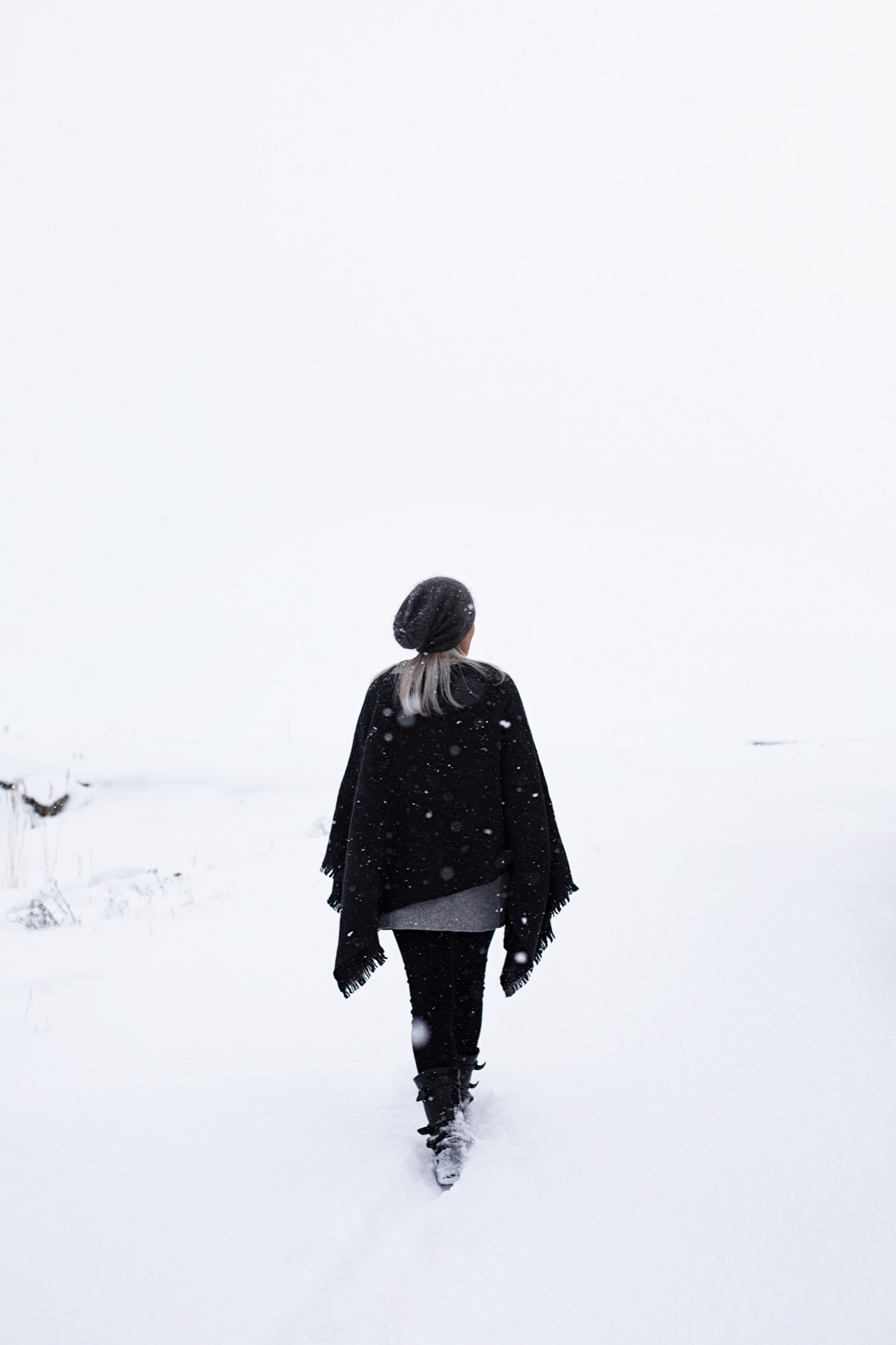
Still in family hands, Lapuan Kankurit today values responsible and environment-friendly processes and pure natural materials. Multifunctionality of their products is important to owners and forth-generation weavers Jaana and Esko Hjelt. In their book, blankets can also be tablecloths or space dividers. Their high-quality textiles are made to bring beauty and happiness into a family's everyday life for generations.

Lapuan Kankurit's fine wool products weave together the story of Finnish handicraft traditions, innovative techniques, and the artwork of top Scandinavian designers. And so the legend continues.
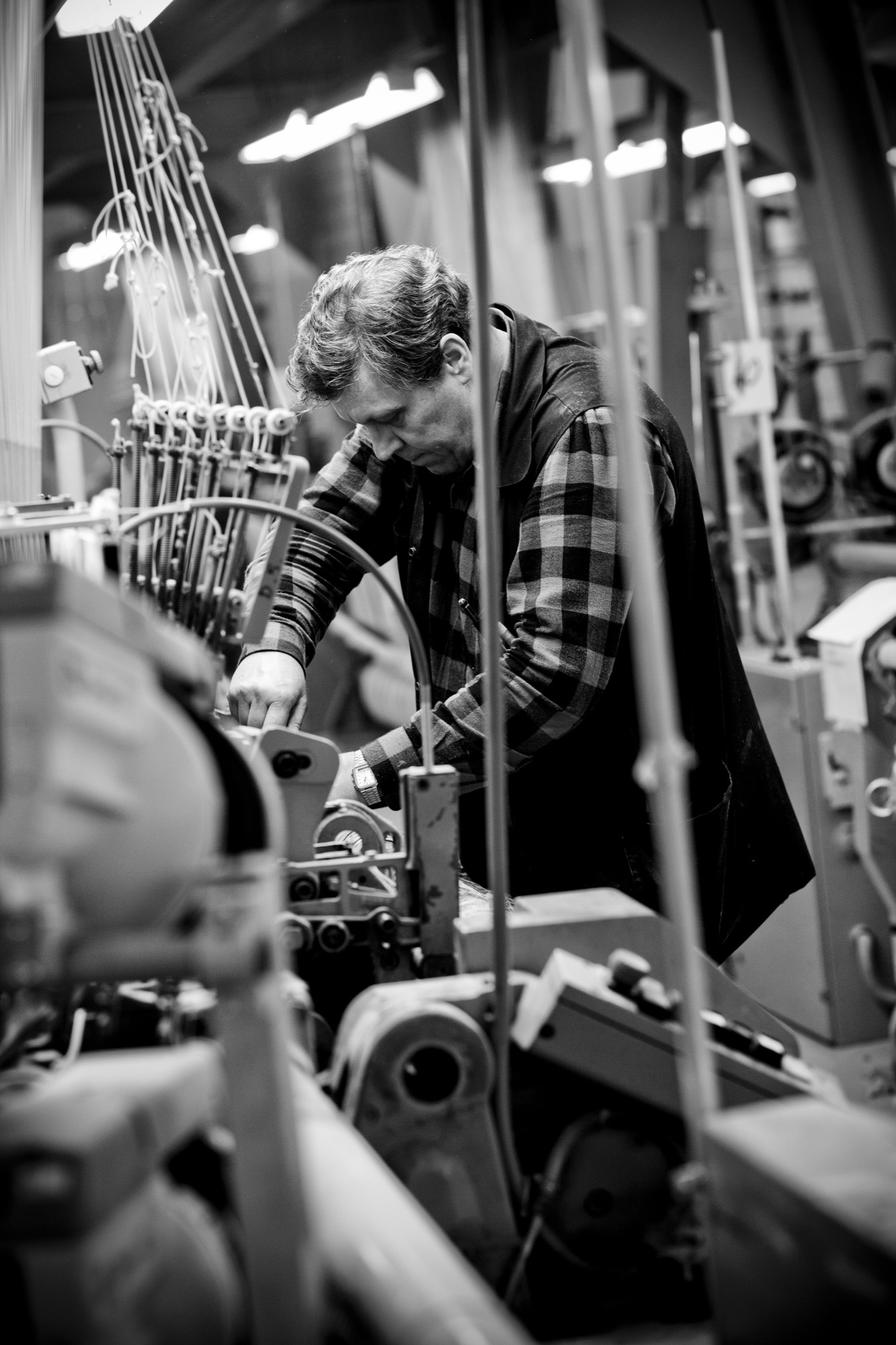
A Conversation with Jaana Hjelt
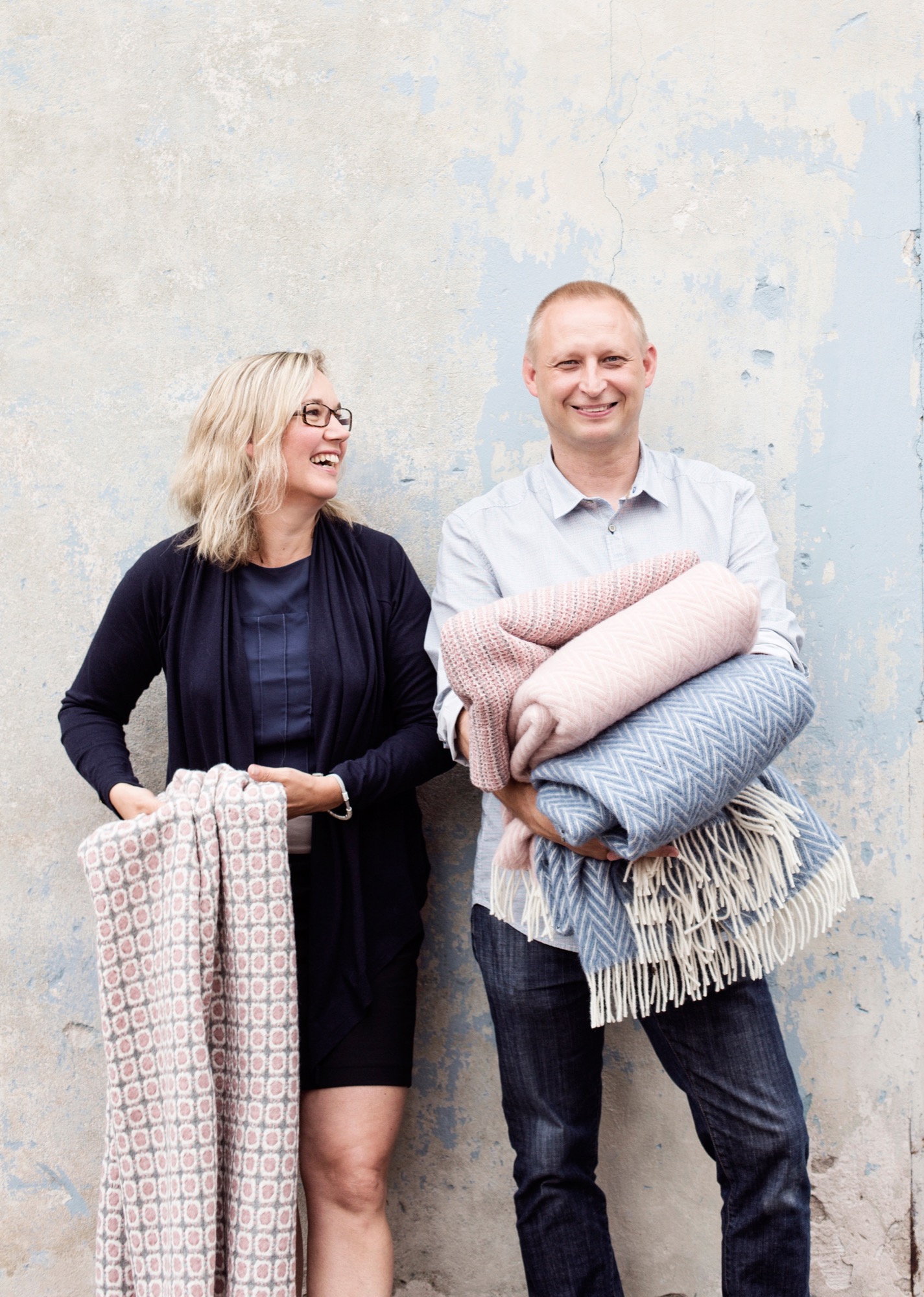
Born: 1968 in Lapua, Finland.
Lives: After studying and working in other cities for ten years, I came back to Lapua.
Work: I do what I love. I run a weaving mill—Lapuan Kankurit (“Weavers of Lapua”)—with my husband, Esko.
Fun: I love to just stay at home with the children, to spend time without any timetables. But we all also love to travel and meet new people. That’s what I do for fun and for work!
Working on right now: Now it’s the “exhibition season,” which means traveling around Europe and attending fairs. It’s great to show our latest collection and hear the feedback.
Favorite place in the world: Home. This may sound boring, but because of my busy life as an entrepreneur, weekends at home are the best. Saturday evenings at home with family: good food, sauna, sitting, and talking with the kids about all the joys and sorrows of the past week.
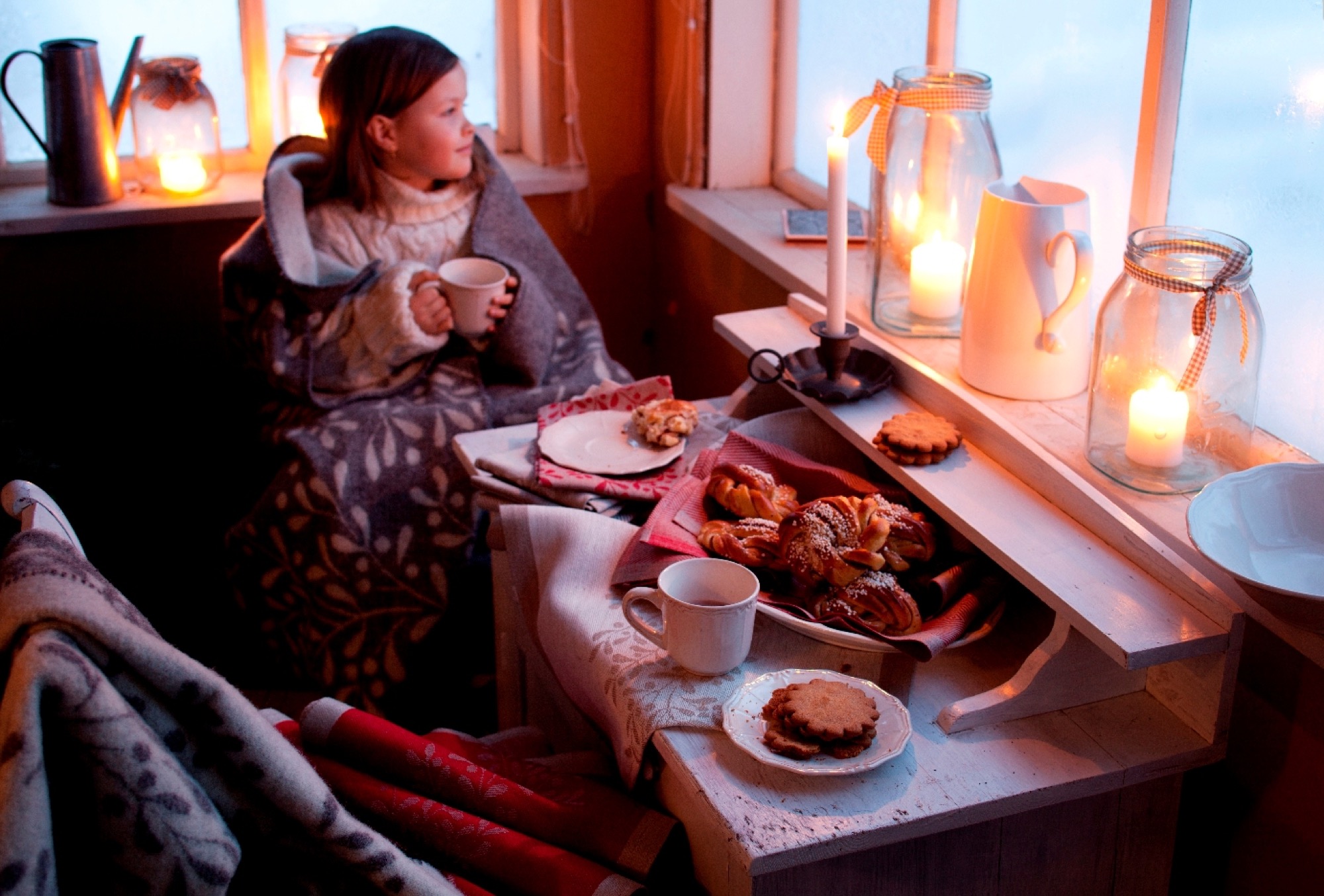

Motto: Now it’s a perfect moment.
Inspiration: My husband, Esko. It’s great to have someone next to you who is seeking innovations. He always gets ideas for textiles, and we share the same passion to create something new and beautiful for homes. Together with our designers, we make a great team.
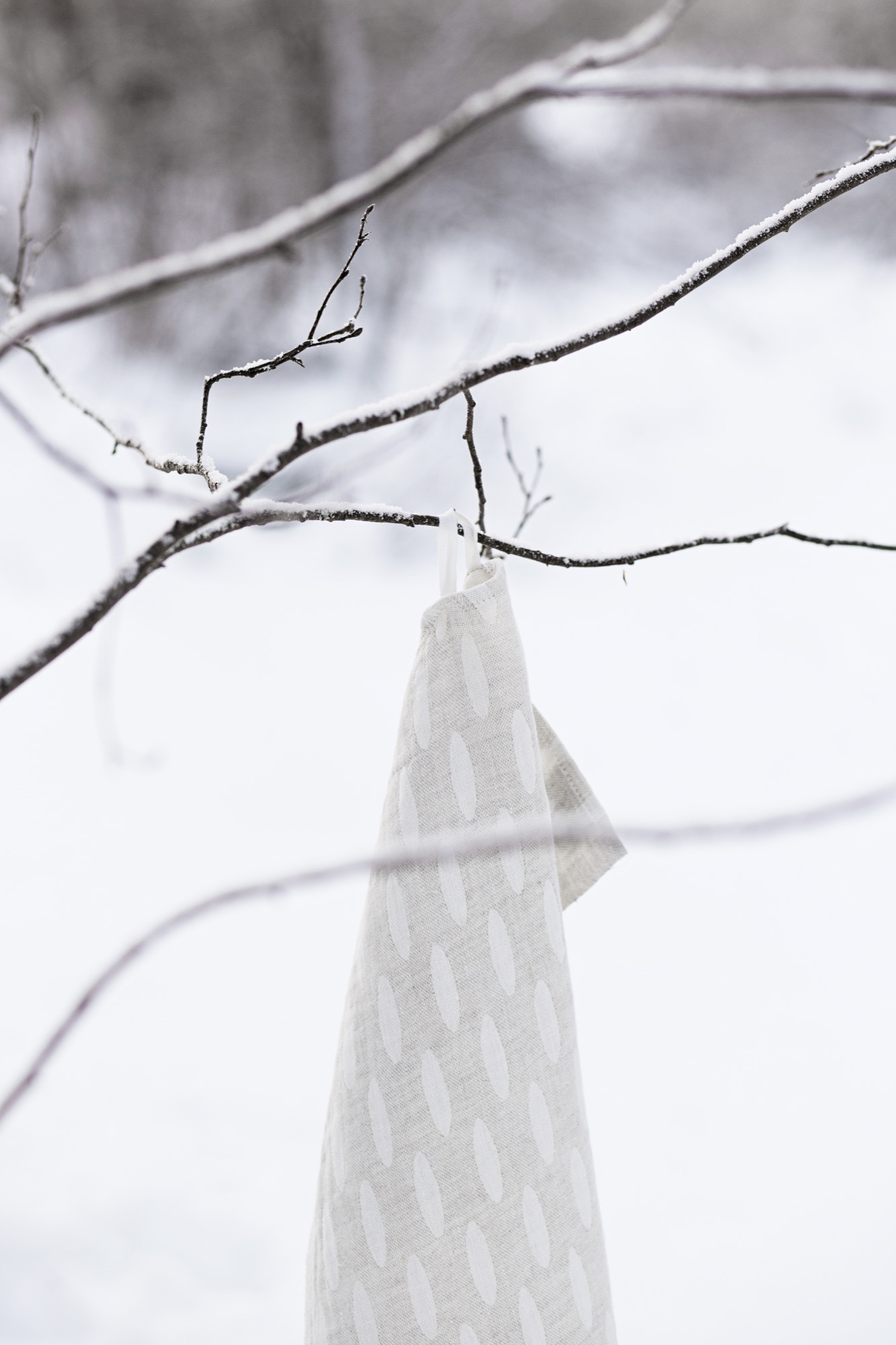
Treasured possession: My grandmother’s handcrafted textiles.
Never leaves the house without: A smile. What else do you need?
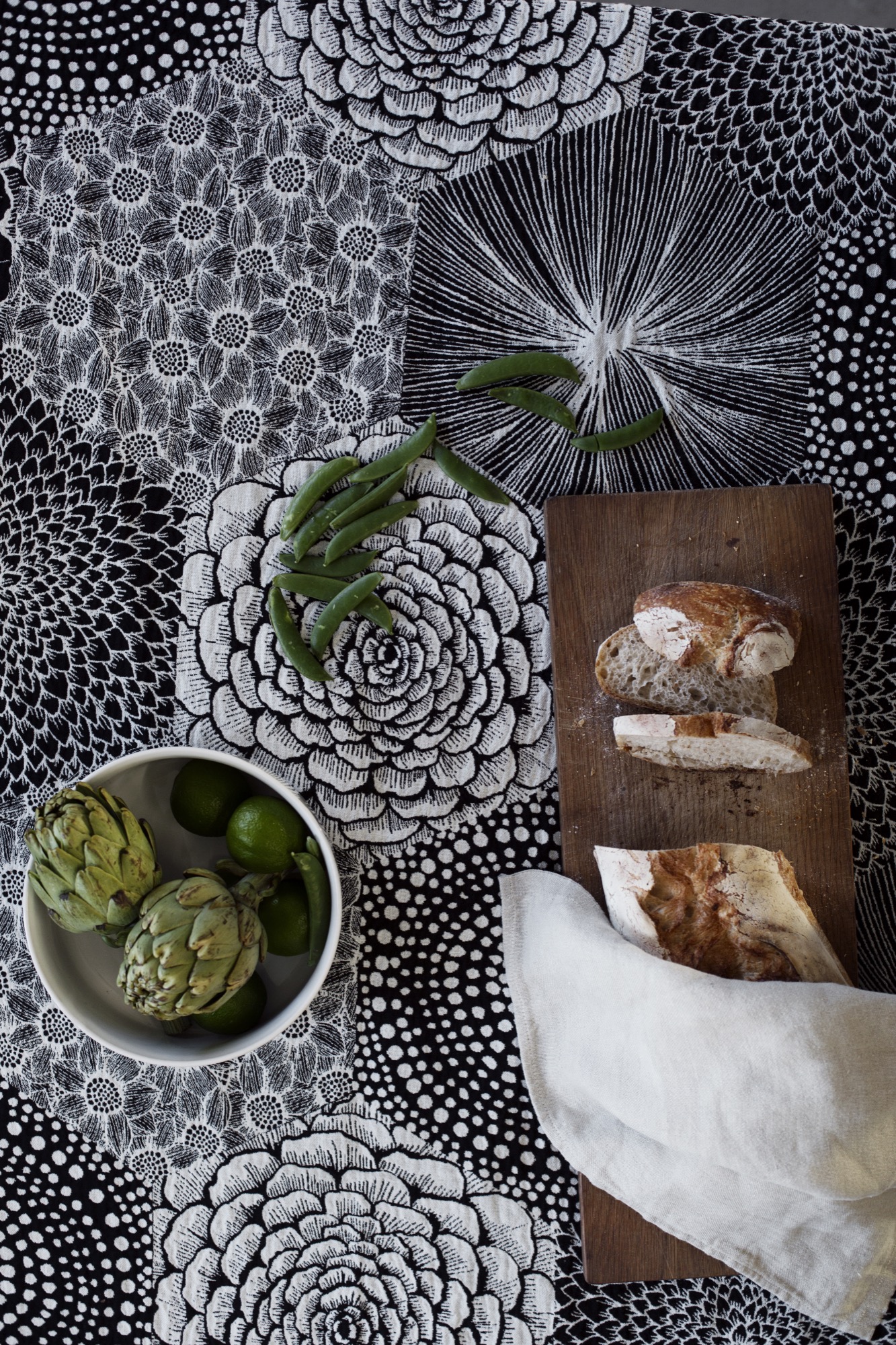
What’s next for Lapuan Kankurit: We also would like to expand a bit more from home textiles towards apparel . . . Our designers have already made some great bags. I just love them and can’t wait for production to start.
See the beautiful products Jaana and Esko Hjelt are weaving at lapuankankurit.fi. We also sell select Lapuan Kankurit products online and at the Alpine Modern Shop on Pearl Street in Boulder. △
A Winter’s Feast
Alpine Modern gathers a circle of friends and coworkers around the table in a chef’s beautiful Colorado home to celebrate life, food, and fellowship in the season of winter feasting.
The season of winter feasting creates a cornucopia of holidays: Thanksgiving, Hanukkah, Christmas, the Winter Solstice, Kwanzaa, the New Year, plus birthdays and anniversaries. These celebrations inspire us to gather friends and family together for a memorable meal. But these days, with our busy lives and family and friends often flung to the far corners of the world, getting a dozen people around your table for a dinner party can present a challenge—along with a measure of intimidation.
Menu planning, creating or finding the right recipes and foods, setting a beautiful table, cooking and timing the courses all require considerable skill and energy. Additionally, there’s a feeling of vulnerability—having people in your house, seeing how you live. Entertaining and orchestrating a special meal takes the host through the whole gamut of human emotions.

Flavors of entertaining
Entertaining has many faces. It can be simple, like soup and bread, or a sumptuous banquet. It can be planned months in advance or spontaneous and spur of the moment. There are as many styles of entertaining and hosting as there are personalities.
And that’s what creates the individual flavor and enjoyment of it—visiting someone’s unique home and seeing how they live, along with the types of food they like, their décor, artwork, and lifestyle. The best meals and get-togethers focus on togetherness rather than technique or perfection. Having guests help with some of the preparation sets the tone—even if it’s minimal like slicing the bread, tossing the salad, or helping to set the table.


The very human act of gathering
What is the true meaning of gathering and entertaining, really? Again, there are as many reasons and styles as there are days in the year.
Gathering to celebrate special occasions, birthdays, holidays, family, and community rituals may prompt us to investigate the practical, traditional, philosophic, spiritual—and perhaps even mystical—nature of entertaining and hospitality. What are some of the deeper primal undertones of this very human act of gathering together?
Dongzhi, or the Chinese Winter Solstice Festival, celebrates the coming of the cold weather and the return of the sun with feasting and festivities. Originating with the Han Dynasty (206 B.C.–A.D. 220), the Winter Festival pays homage to the ancient yin and yang philosophy of balance and harmony in the cosmos. The philosophy holds that the yang, or muscular, positive energy, increases daily after the shortest day—so should be celebrated. Family get-togethers involve the making and eating of tangyuan, a sweet soup with balls of sticky rice, which symbolizes reunion.
Worldwide, changing seasons—the arrival of spring, midsummer, the autumn harvest, and especially the winter solstice—have historically been special times to celebrate and feast. Humankind has venerated the return of the sun’s light at the winter solstice throughout history and prehistory. Feasts have been held, and monuments have been painstakingly constructed and dedicated to it.


On a chilly night, we gathered for a winter feast that Colin and Sarah Kirby graciously hosted at their modern Boulder, Colorado, home to celebrate good food, camaraderie, and hospitality. According to Chef Colin, hospitality at its simplest is taking care of people, treating people well. The flavor of a host’s hospitality conveys a certain way of looking at the world, through food, drink, and its presentation.
"The flavor of a host’s hospitality conveys a certain way of looking at the world, through food, drink, and its presentation."

Perfect moments to remember
What happens when it all comes together? That moment when it all works really well? Reunion—as with the Chinese Dongzhi celebration. Communion. The creative and thoughtfully prepared meal is an emotional and spiritual experience. In addition to enjoying delicious food, guests feel a warm and deep appreciation for the host’s labors and generosity, and for each other. It’s truly a celebration and labor of love.
Some people, like our host, specifically design their homes with entertaining in mind. Colin’s cleverly repurposed and beautifully refinished Douglas fir floor joists–turned–dining table perfectly seats a dozen guests, as he intended. Set alongside an open kitchen, the broad table invites participation and observation.
As our host chef concludes, “Cooking is the only art form that engages all five senses.” And like any art form, an exquisitely conceived and executed meal inspires, elevates, educates, and enlivens.
In addition to the shared ritual of emotional and physical nourishment and sustenance, a special dinner or feast also offers the chance to learn about new foods and recipes, perhaps the favorites of the host. Special recipes from family or friends carry memories and significance, and enrich the experience of others who replicate them.
“Cooking is the only art form that engages all five senses.”

Recipes can hold special meanings for people, especially when passed down through generations or created for a unique event. Here, we are sharing some recipes our host, Colin Kirby, served at Alpine Modern’s Winter Feast that we hope will inspire you to take up the wooden spoon, start cooking, and gather some hungry souls around your table in celebration of togetherness. △
Recipes for a winter's feast
Tomato-Braised Leg of Lamb
The headliner. Braised in the oven for hours before your guests arrive, making this lamb dish will fill the house with a savory fragrance that will draw everyone into the kitchen. Go to recipe »
Braised Leeks with Black Truffle
An elegantly simple vegetable side for any festive dinner. Go to recipe »
The Alpine Glissade
Luscious Holiday libation: A festive cocktail based on cold-drip coffee. Go to recipe »
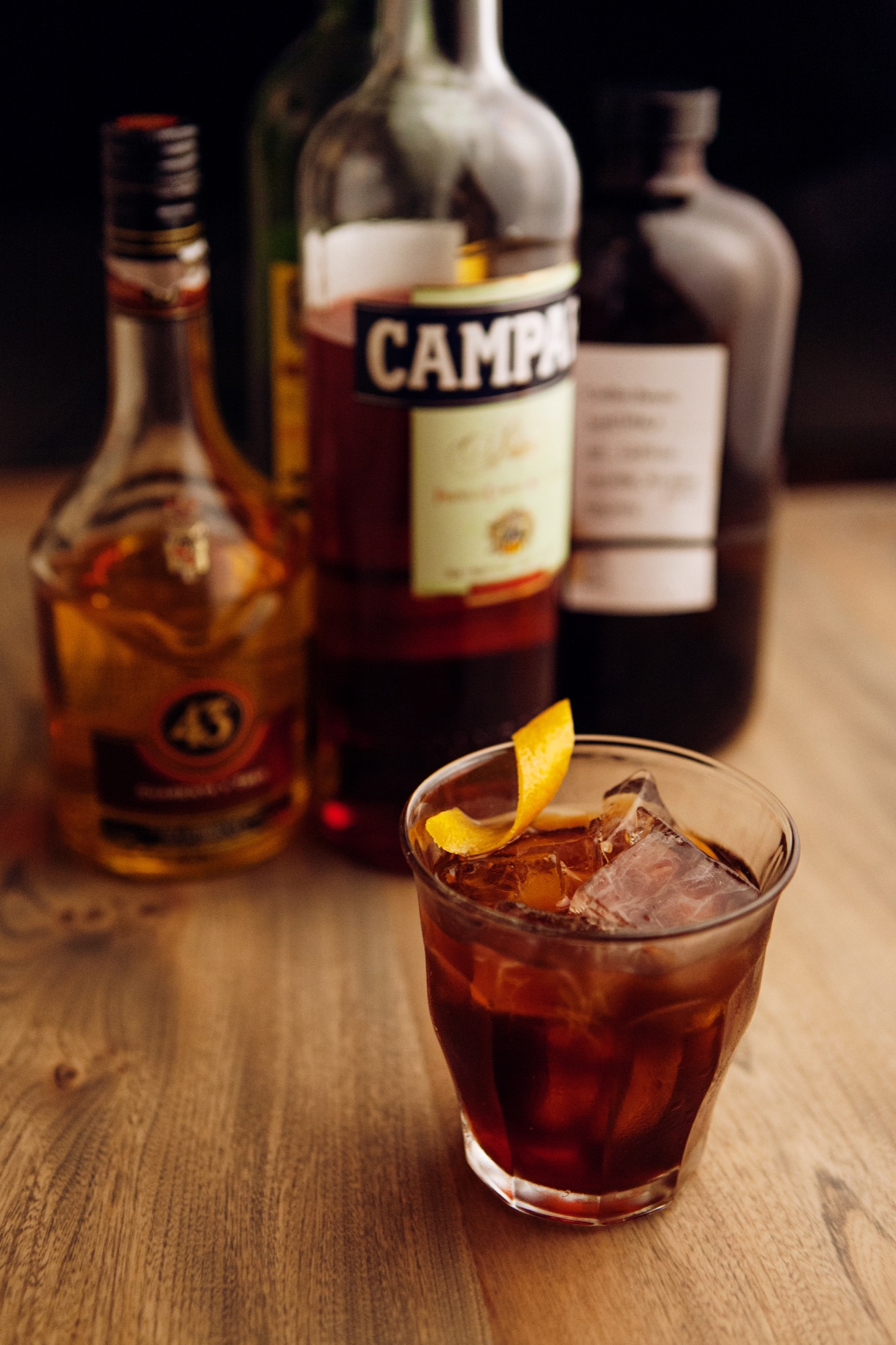
Recipe: Tomato-Braised Leg of Lamb
The headliner of Alpine Modern's Winter Feast
INGREDIENTS
boneless leg of lamb: 3 2.5 lb legs, trussed with twine salt pepper
TOMATO BRAISING LIQUID
garlic: 2 bulbs, minced carrots: 6 yellow onions: 3 leeks: 3 medium-sized fennel: 2 bulbs, shaved salt red wine: 1 bottle San Marzano tomatoes: 3 cans fennel seed: 3 T, ground chili flakes chives Parmesan cheese

DIRECTIONS
Leg of lamb
Season generously with salt and pepper. Heat a grill or cast-iron pan. Sear the lamb legs on both sides on high heat until nicely seared, 8–10 minutes total. Reserve to later place in the tomato liquid.
Tomato braising liquid
Preheat oven to 300° F (150° C). In a large pot or rondeau heat a small amount of grape seed oil. Once hot, add the garlic and sauté until translucent. Add the small diced carrots, onions, leeks, and fennel. Season the vegetables with salt and let them sauté until nearly tender. If the pan begins to brown, this is a good thing.
Once the vegetables are ready, deglaze the pan with the bottle of red wine. Let the alcohol cook out of the wine (about 5 minutes). Add the tomatoes, fennel seed, and chili flakes. Add the seared lamb legs to the tomato sauce. The lamb should be submerged in the liquid. Put the lid on the pot and braise in the oven until lamb is tender, about 6 1/2 hours, checking every 2 hours.
Remove the braising pot from the oven and allow the lamb to cool completely in the sauce. Gently reheat and serve, adding cut chives and Parmesan on top. Serves 10. △
This recipe is part of Alpine Modern's big Winter Feast, which we will publish here this week.
Recipe: Braised Leeks with Black Truffle
An elegantly simple vegetable side for any festive dinner
INGREDIENTS
leeks: 12 small, cleaned and trimmed black truffle butter: 8–10 oz (227 to 283 g) *or regular butter with high-fat content salt pepper red radish: 1
DIRECTIONS
Bring a large pot of salted water to a boil. Also, prepare an ice bath. Remove the root end of the leek and trim the green leaves so roughly 6 inches (15 cm) of the leek is available. Then, cut in half lengthwise. Set aside. Place the leeks into the blanching water for approximately 6 minutes or until nearly tender. Remove from pot and place in the ice bath until cool to stop the cooking process.
In a large sauté pan on medium, heat a small amount of grape seed oil and gently arrange the cooked leeks so they fit in one layer. Once the leeks are hot and begin to sear slightly, place a piece of circular parchment paper on top of the leeks to help them cook evenly (see photo). Add the black truffle butter. Once the butter is melted, season with salt and pepper and serve, on the table, out of the sauté pan. Shave the red radish on a microplane and top the cooked leeks with it for added texture. Serves 10. △
This recipe is part of Alpine Modern's big Winter Feast, which we will publish here this week.
Alps // 40
An unfiltered, low-speed journey across Swiss peaks in words and images by Boulder photographer Jamie Kripke
Slowing down gives us more time to look. Having more time to look changes how we see. I wanted to slow down.
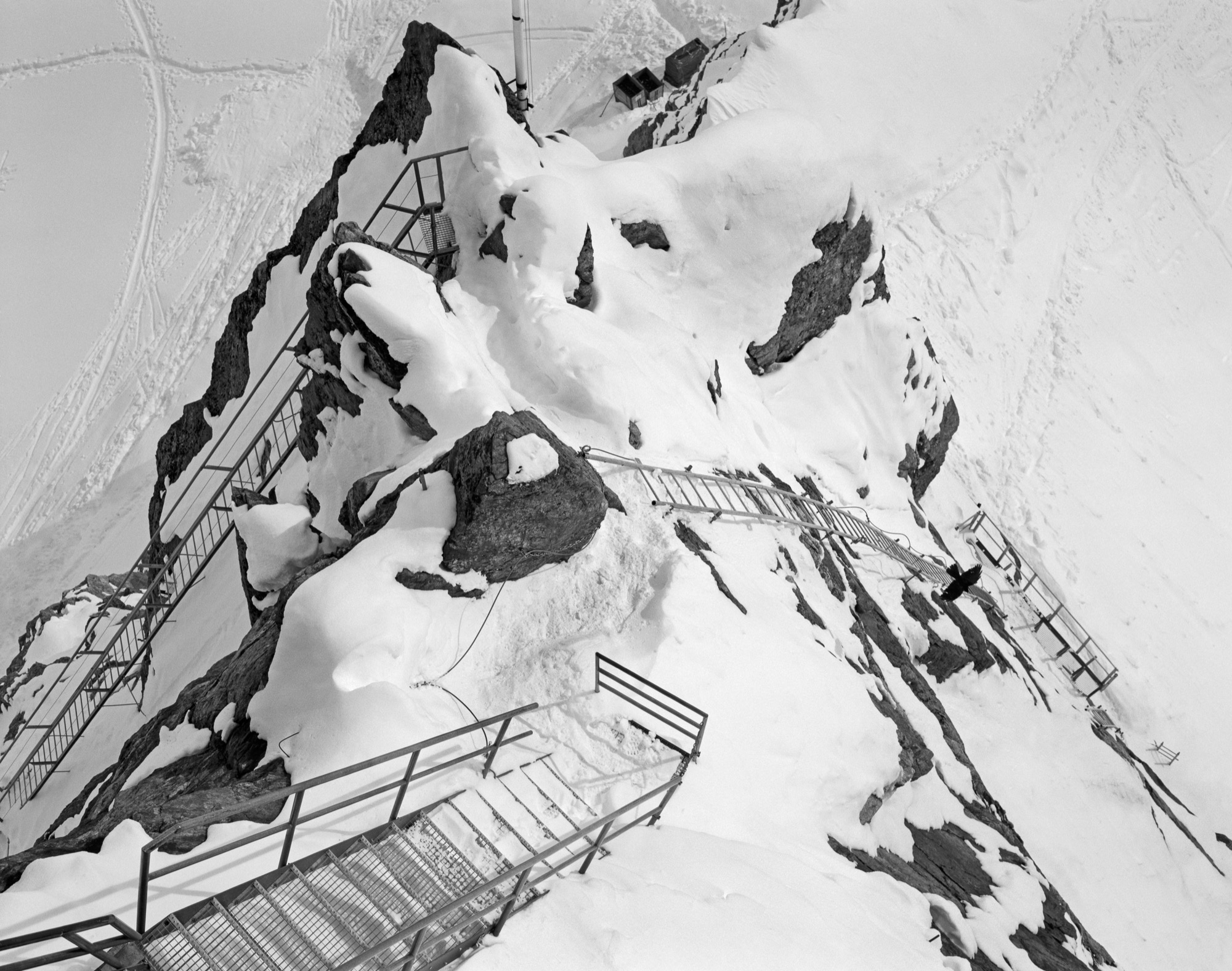
Using alpine touring skis, a small backpack, a folding medium-format camera, and twelve rolls of black-and-white film with ten exposures per roll, I set out to traverse and photograph a high route across the Alps. Each piece of equipment for this trip was chosen for its simplicity as well as its limitations—and for the extra time, attention, and patience it requires.
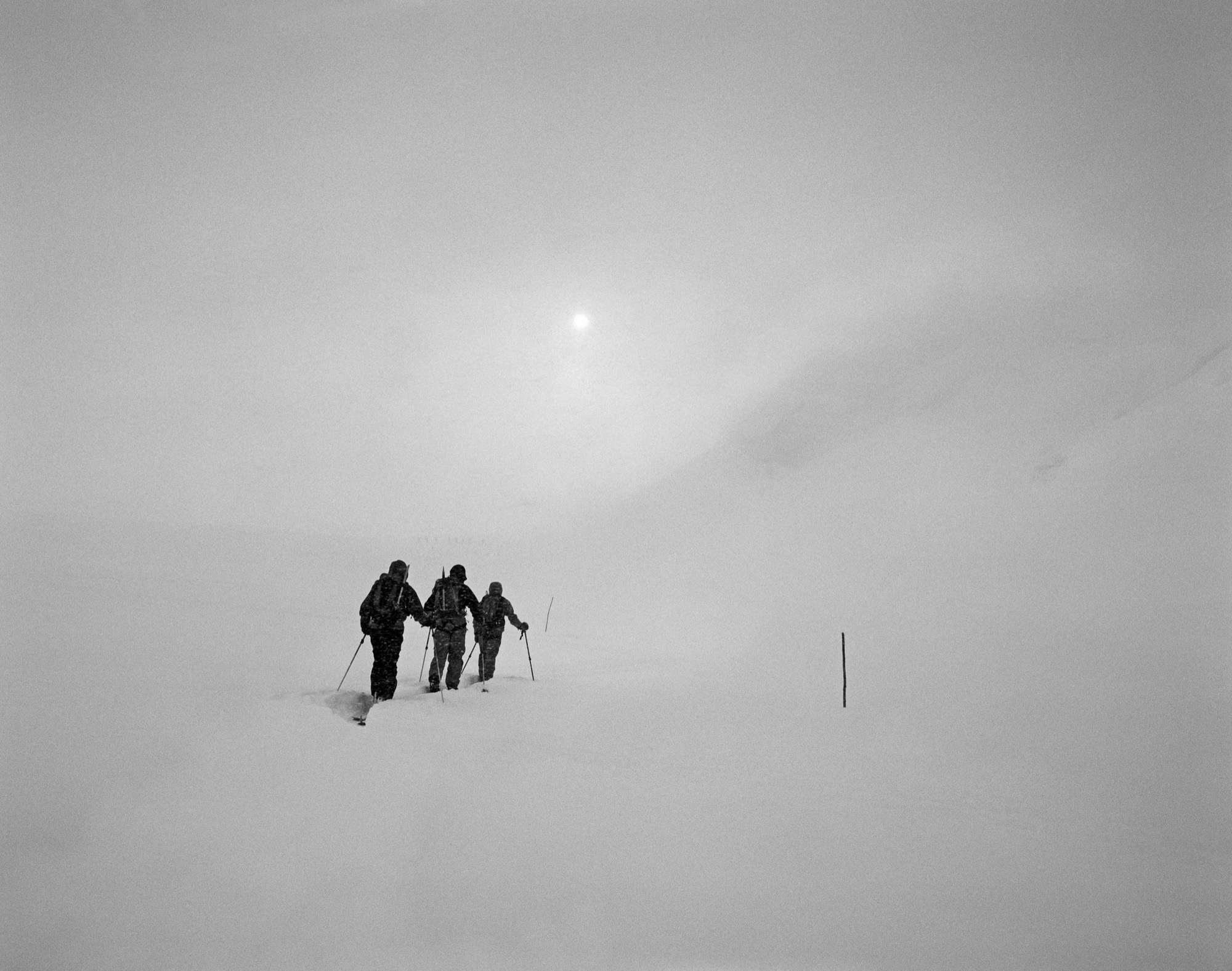
Traveling up and over mountains by skis has a way of shifting time away from something that is measured in minutes, hours, and days. Ascending one step at a time through untracked snow, the units become ski lengths, pole plants, breaths, sips of water, bites of food, daydreams, changes in weather or light.

The physical limitations of low-speed film in a mechanical camera call for a heightened attention to composition, exposure, and technique. Every frame becomes its own unique experience—one that builds gradually with each precise movement of the camera, each small adjustment for focus, aperture, or shutter speed.
"Every frame becomes its own unique experience."
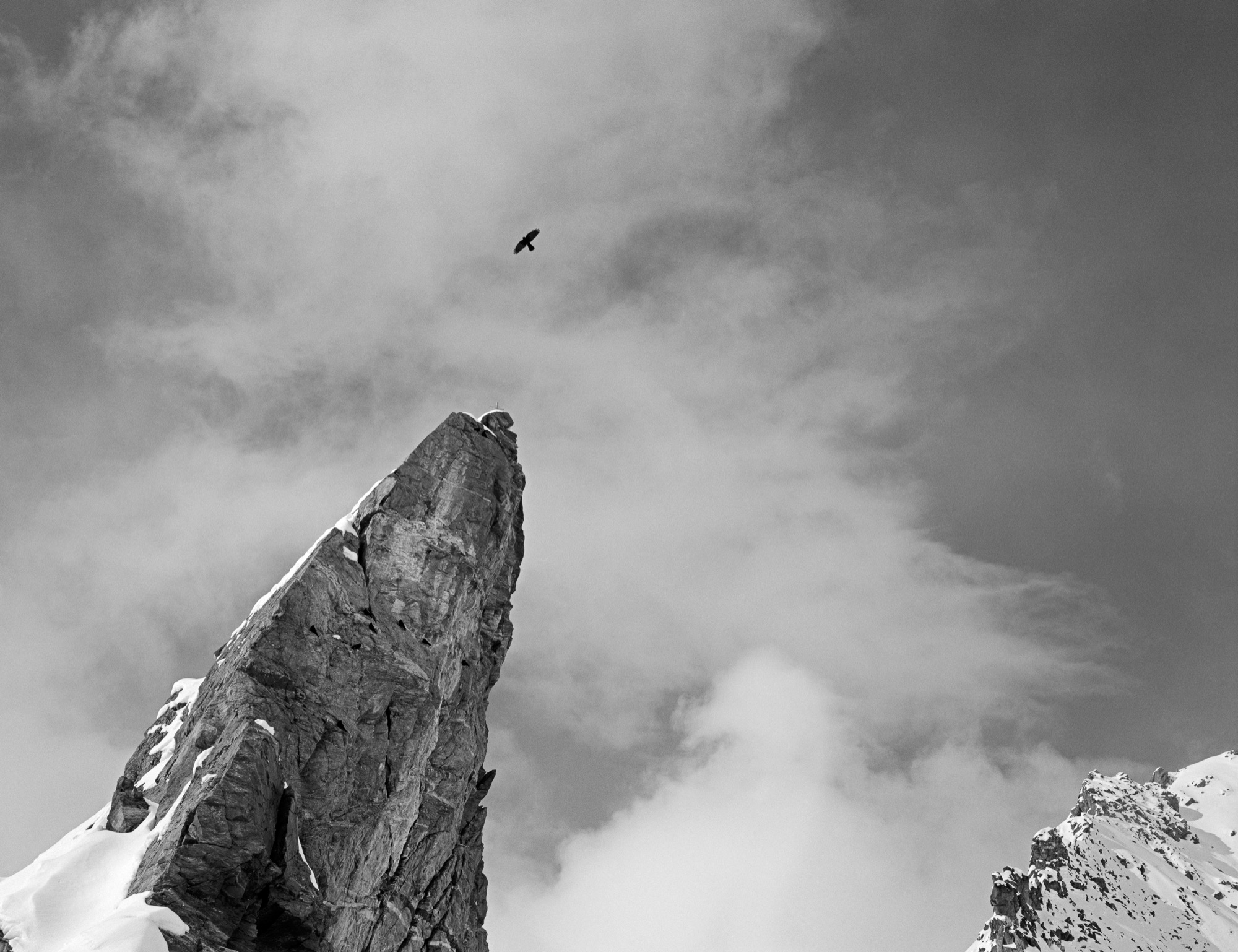
Once I’ve settled on an image, I take a deep breath and try to be as still as possible. High in the Swiss Alps, in the space between the breath and the click of the shutter, time slows to a stop.
"High in the Swiss Alps, in the space between the breath and the click of the shutter, time slows to a stop."
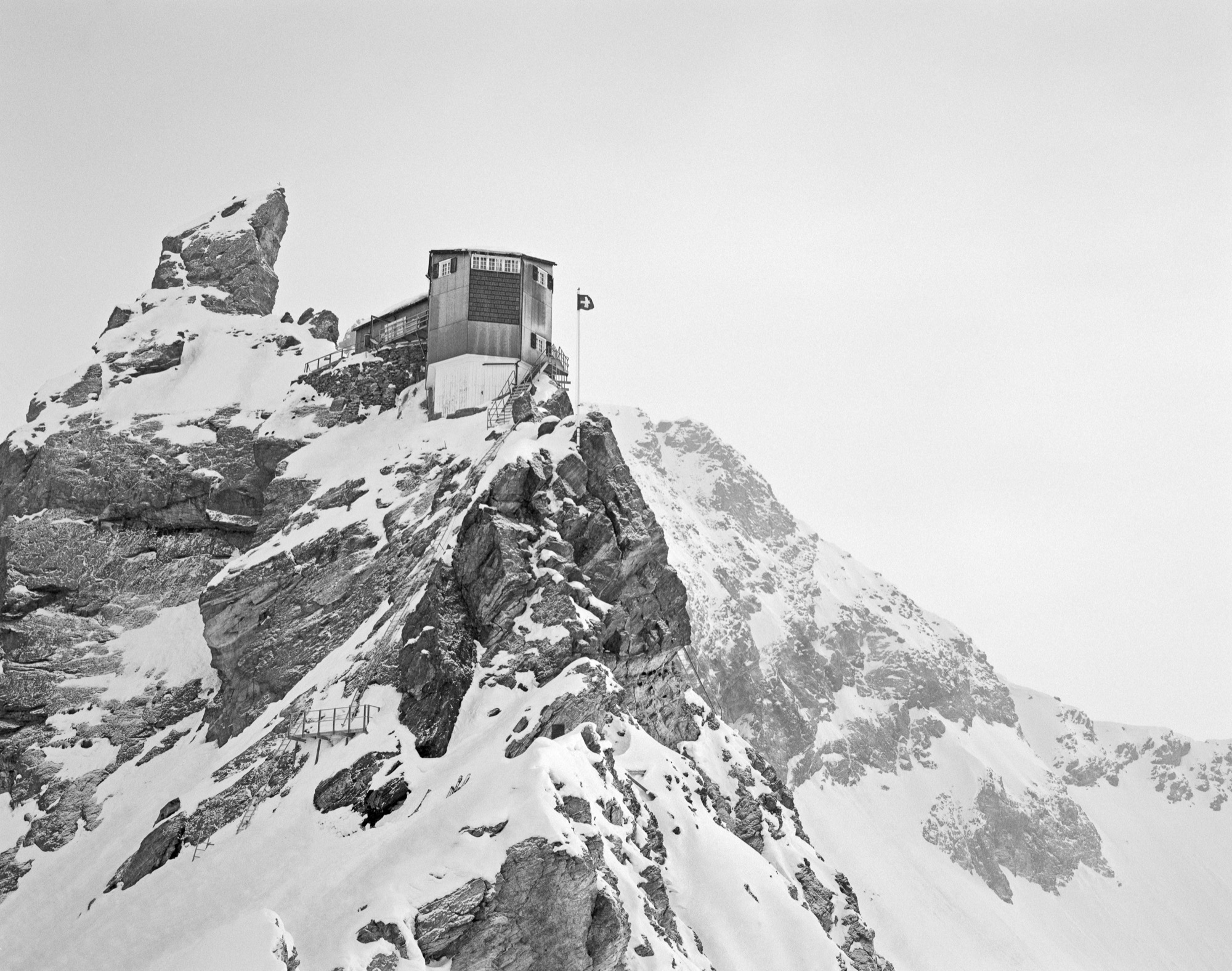
These images were made over the course of eight days, and selected from a total of 120 images, where just one exposure was allowed for each image. They have been minimally altered from their original form in order to stay true to the tonality of the film, and are the pure, unfiltered, timeless compositions that I’d been looking for. △
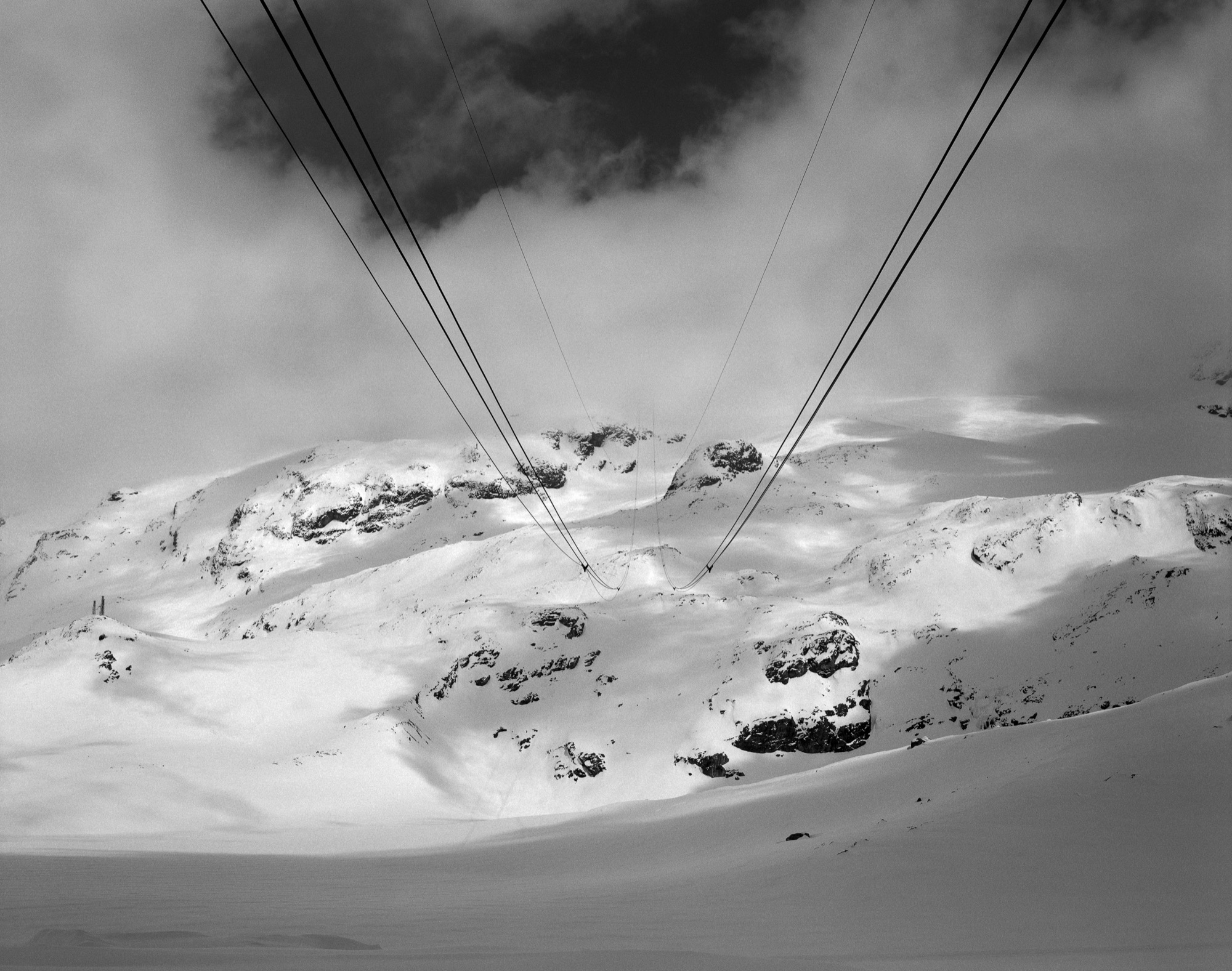
Recipe: Germknödel with Plum Filling
An Austrian ski hut favorite by Austrian top chef Martin Reiter of Hotel Kitzhof in Kitzbühl, Tyrol
Germknödel are a classic lunch favorite at ski huts in the Austrian alps. The fluffy, steamed yeast dumplings are so filling, this comfort food can be a main dish all on their own. The traditional filling is Powidl (a thick spiced plum mousse), which can easily be substituted with plum jam. Germknödel are topped with melted butter and a generous heaping of a mixture of ground poppy seeds and powdered sugar. Recipe by Austrian top chef Martin Reiter, Hotel Kitzhof, Kitzbühl,Tyrol
INGREDIENTS
Makes 6 Germknödel
250 gr flour, divide 15 gr fresh yeast 25 gr butter, softened 1/8 liter warm milk 25 gr powdered sugar 2 egg yolks 1 tsp vanilla sugar (if you can’t get the little sachets, substitute with 1 tsp sugar mixed with 1/4 tsp vanilla extract) lemon zest a dash of salt 6 tbsp plum jam for filling
Topping
90 gr melted butter 90 gr ground poppy 50 gr powdered sugar
STEPS
Dissolve yeast in warm milk, stir in 50 gr of the flour, then sprinkle some flour on top, cover, and let rest in a warm place. This is called the Dampfl.
Heat water in double boiler pot set.
Add softened butter, powdered sugar, vanilla sugar, egg yolk, lemon zest, and salt into double boiler and beat until foamy and warm.
Knead Dampfl with the remaining flour and butter mixture into a smooth dough.
Divide dough into 6 parts, form balls, cover with cloth, and let rest for 30 minutes.
Once the dough has risen, flatten each ball and set 1 tbsp plum jam in the middle. Fold edges up and pinch together so dough closes around the plum filling. Set on floured surface with pinched closure facing down, cover with cloth, and let rest once more until dumplings have risen by half of their volume.
Meanwhile, bring water to a simmer in large pot.
Carefully drop dumplings in the water and simmer for 15 minutes with the pot lid half on, flipping the dumplings over half way through.
Meanwhile, mix ground poppy seeds and powdered sugar for topping.
Place each hot dumpling on a plate and top with melted butter and poppy seed/powdered sugar mixture (the locals heap it on).
For a less traditional yet heavenly delicious variation, top Germknödel with warm vanilla sauce instead of the melted butter, sprinkle with poppy seeds and sugar.
An Guadn!
Recipe: The Alpine Glissade
Luscious Holiday Libation: A festive cocktail based on cold-drip coffee
INGREDIENTS
Alpine Modern Cafe cold-drip coffee: 1.5 oz (45 ml) filtered water: 0.5 oz (15 ml) Bonal Gentiane Quina: 0.75 oz (22 ml) Campari: 0.25 oz (8 ml) Licor 43: 0.25 oz (8 ml)

DIRECTIONS
Combine ingredients and pour over ice. Quick stir in glass. Garnish with orange peel. Serves 2. △
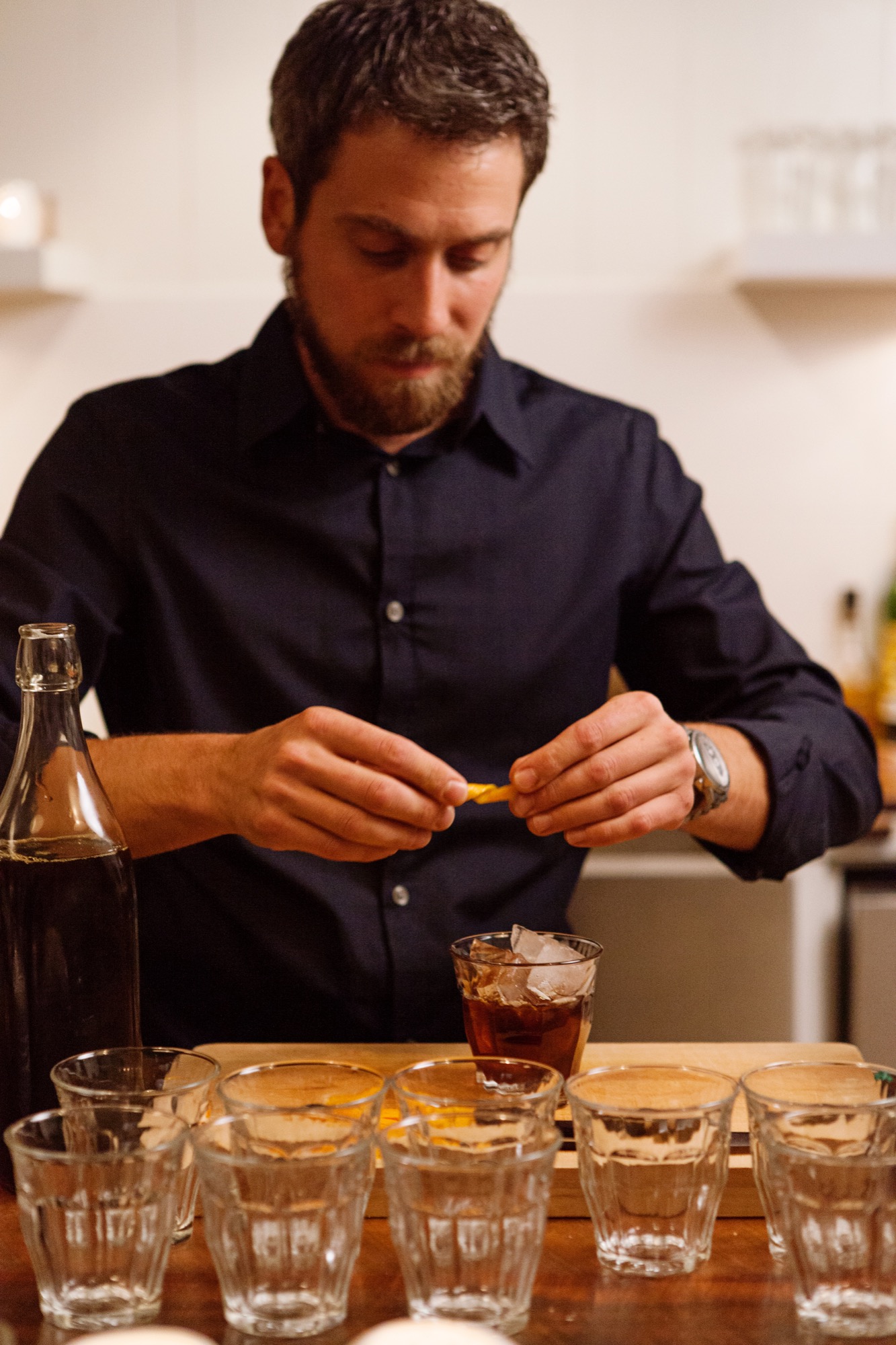
This recipe is part of Alpine Modern's big Winter Feast, which we will publish here on Saturday.
Hygge Life
A conversation with Alexandra Gove—collector of beautiful moments and things—about slowing down and being hygge in the present... like the Danish do.
When Alexandra Gove—the founder of Colorado-based Hygge Life and a spirited collector of beautiful moments and things—followed her boyfriend to Amsterdam, the Colorado native fell in love with a Northern European way of life that has no name in the English language. A conversation about slowing down and being hygge in the present.
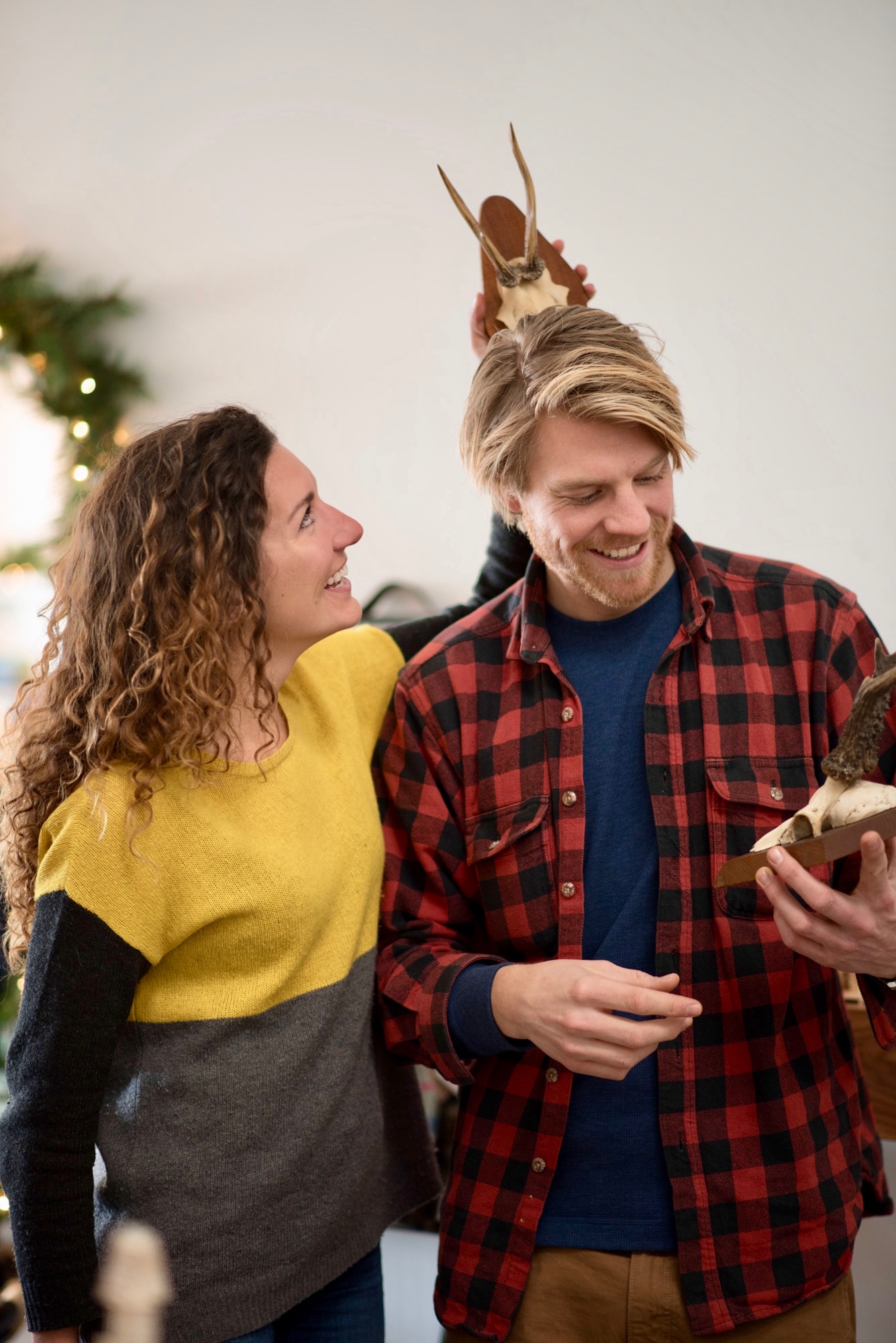
A Conversation with Alexandra Gove
A M How did you end up in Amsterdam?
A G My boyfriend, Koen, is Dutch. We skied our way to love in Vail, Colorado, a few winters ago and moved to Amsterdam together a year later.
A M You didn’t stay put there for very long . . .
AG No. That following summer, we embarked on a life-changing adventure. We bought a 1971 Opel Blitz camper, painted it blue, hitched up our bicycles, and toured Europe, selling poffertjes (mini Dutch pancakes) and collecting European vintage treasures. We stamped “Hygge Life” on the camper and called it the “Hygge Bus.”
A M What’s hygge?
AG The Danish word hygge (pronounced “hoo-ga”) has no direct translation in English. “Cozy” may come close. Hygge is the euphoric feeling when you are completely content in the present moment. Loved ones, good food, and drinks are likely contributors, as are candlelight and conversation. It’s the art of creating special moments out of daily routines and rituals, whether it’s lighting a candle over breakfast, buying fresh flowers weekly, posting handwritten invitations for your backyard summer party, or breaking out the good wine when your friends are over for dinner. It’s owning things you truly love and choosing authenticity over practicality. Hygge is about realizing the opportunity we all have to make the ordinary aspects of our lives extraordinary; to add that extra sparkle to moments, big or small.
“Hygge is the euphoric feeling when you are completely content in the present moment.”
A M At the time, you lived in Amsterdam, yet you chose a Danish name for your blog and shop . . .
A G The Dutch call this feeling “gezellig,” and the Germans “gemütlich,” but I adopted the Danish version to represent the bus tour, lifestyle, and collection of vintage household objects and wares. Not only because “hygge” is easier to pronounce but because Danish design is simple, inspiring, timeless, and just so hygge.
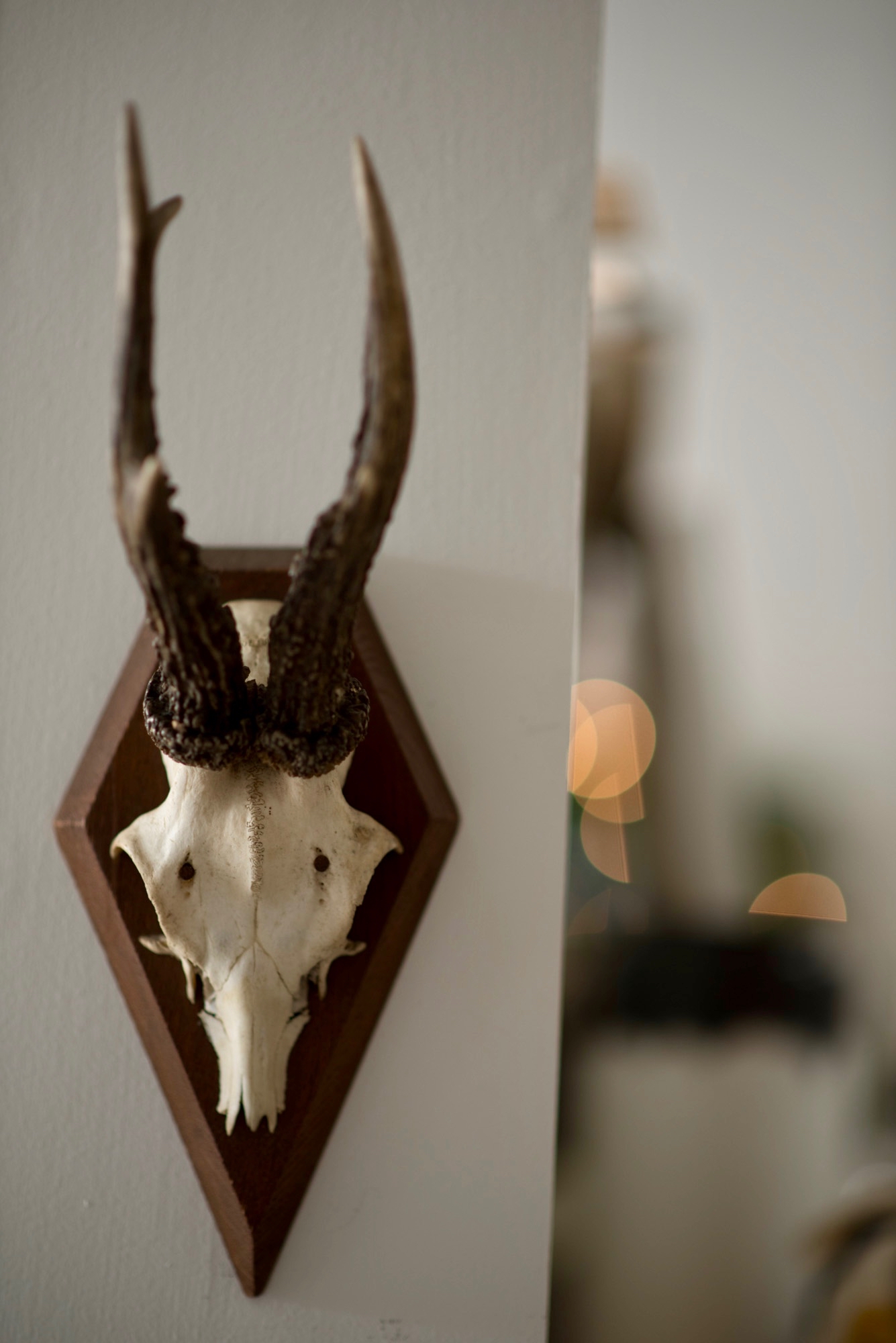
A M Where did you come by your unique antler collection?
A G Driving the Hygge Bus up and down the windy roads in the Alps across France, Switzerland, and Germany, we discovered these mounted roe deer antlers among other alpine artifacts. The roe deer is typical for Europe, and the small and delicate antlers are rare in the United States, so I felt the urge for sharing my assortment with the people at home. We began buying them at flea markets, antique barns, and auctions along the way until we had a beautifully unique collection.
A M What have you been up to since the Hygge Bus tour?
A G Hygge Life has evolved into an online shop of new and vintage items from all over Europe that help create hygge spaces and moments. After lovely shared meals at our table, an evening filled with smiles, conversation, and warmth, we now have a word to describe the experience . . . hygge. △
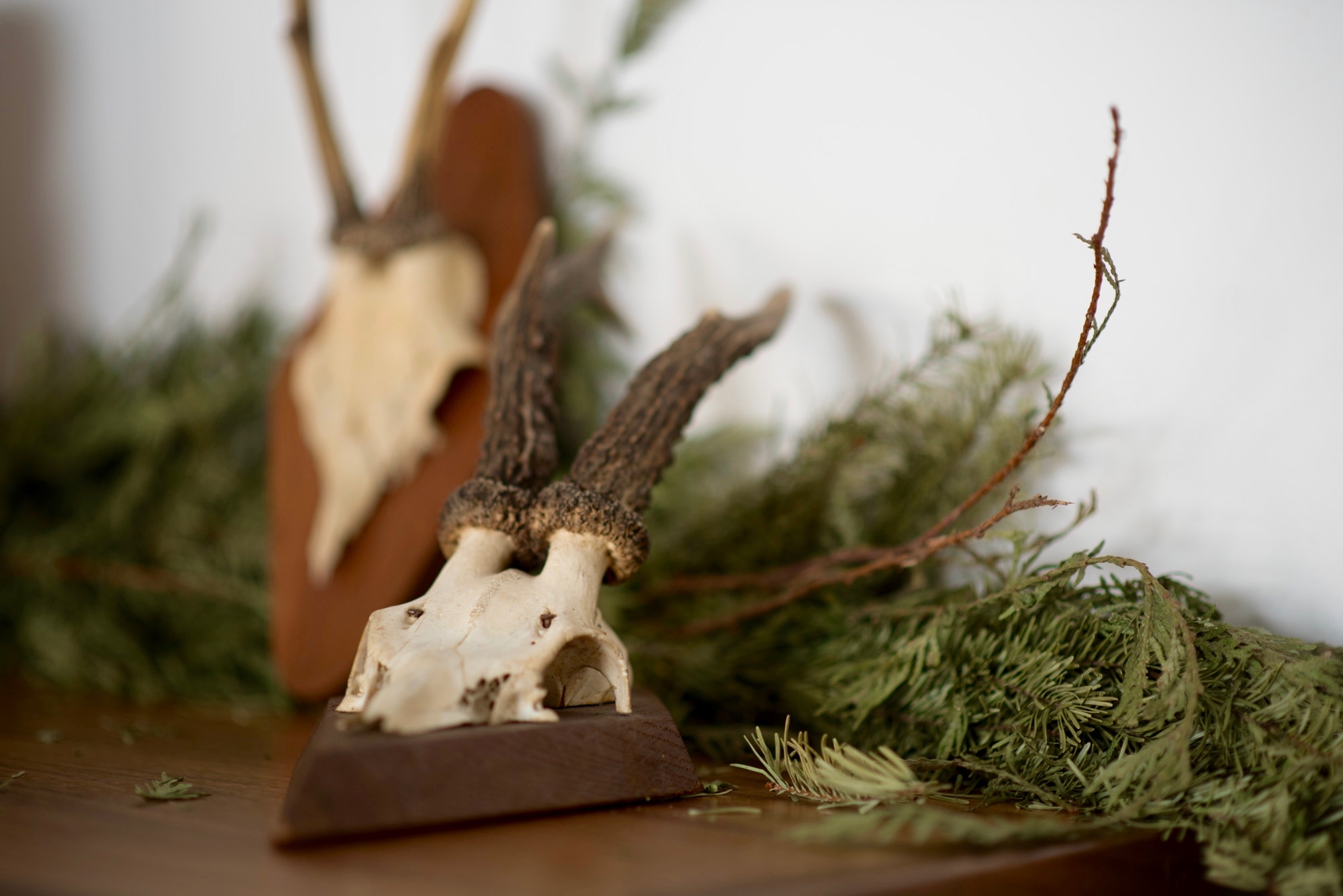
Alpine Modern Holidays
Alpine Modern editor in chief Sandra Henderson shares her guide to a Bavarian-Coloradan Holiday
 This holiday season, Dwell is handing over the mic to some of their publishers on the new Dwell.com. We are tremendously thrilled that our editor in chief, Sandra Henderson, got to share her favorite picks for the season with the Dwell community—and now we are sharing them with you.
This holiday season, Dwell is handing over the mic to some of their publishers on the new Dwell.com. We are tremendously thrilled that our editor in chief, Sandra Henderson, got to share her favorite picks for the season with the Dwell community—and now we are sharing them with you.
Our editor's Guide to a Bavarian-Coloradan Season

I grew up in Bavaria, hiking, skiing, and loving the Alps. With masters degree in political science and sociology in my pocket, I began my journalistic career at a German women’s magazine. On a trip to Washington, DC, I fell in love with my now-husband and eventually moved to the US. I began dreaming about starting a magazine that combines my two passions: modern architecture and the mountains. Meanwhile, living in Colorado, I serendipitously connected with Lon McGowan, an entrepreneur who at the time already owned an impeccably curated design shop in Boulder and shared my vision for a similar publication. Three short months later, we launched Alpine Modern magazine. We printed six beautiful issues before taking our content entirely online.
"Being a minimalist, I love to give beautiful things that are also useful and wearable—or are a treat to eat or drink."
Give

Three Peak Mountain Pillow for $75 from Alpine Modern—Hug a mountain! The handcrafted cushions—inspired by the maker’s yearly summer trips to Bend, Oregon and Three Sisters Wilderness—add a whimsical touch, whether you live in a mountain cabin or an urban condo.
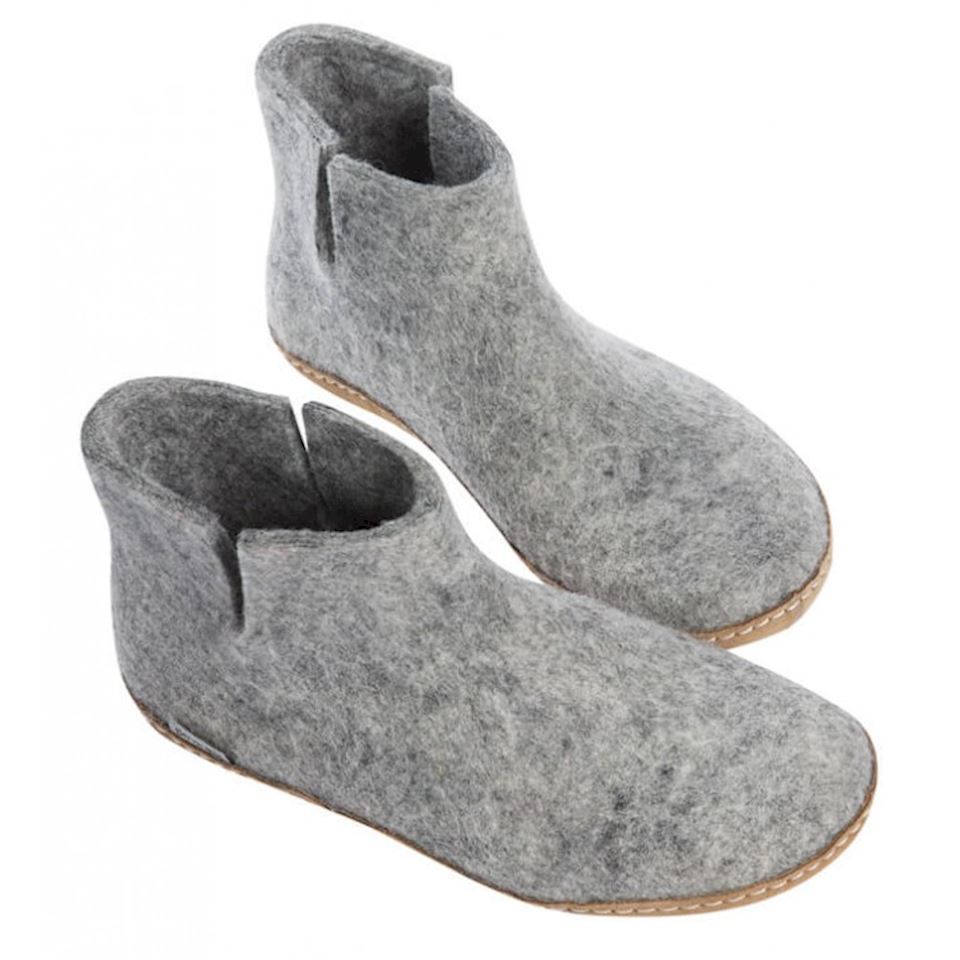
Glerups felt ankle boots for $125—Because you can’t get cozy when your feet are cold. These warm felt house shoes are made of 100 percent pure natural wool and come in all sizes—from baby to grandpa.

Santal Woods Candle for $30 from Alpine Modern—Handmade in the USA, this soy candle fills my house with a wonderful smell of the woods. At the same time, the aroma is elevated and lovely for a festive dinner party.

Keep Cups for $24—For the busy body. Everyone already has a travel mug for on-the-go, but these cute and practical glass cups with lids are made for running up and down the stairs at home without spilling your morning coffee.
Drink
My favorite bubbly and bourbon to share with friends...

Meinklang Pinot Noir Frizzante Rosé from Austria for $18.99—You can pick this up from Whole Foods or order online.

Breckenridge Distillery Whiskey for $45.99—Make your mountainman happy with a bottle of Breckenridge Blend of Straight Bourbon Whiskeys. It’s made with Rocky Mountain snowmelt.
Listen

If on a Winter’s Night by Sting from Amazon for $11.23—The album is a stirring collection of earthy winter songs, with a couple originals composed by Sting. The others include folk songs, lullabies, and hymns from decades and centuries past that were recorded with friends and guest musicians. The haunting sounds transport you deep into a snowy forest. My favorite tune on the album is “Soul Cake,” a traditional English beggar’s song.
Want
On my own wish list this year...

Transcendent Mitts by Outdoor Research for $59—I trust nature’s wisdom, so I usually choose wool or down to keep me warm. These puffy mittens are blissfully light and pack down perfectly in a bag.

Gold Ear Conch Cuff by Loren Stewart from Goop for $285—The idea of wearing an ear cuff is so ‘80s—I know—but this minimalist luxe version, designed by Loren Stewart, is definitely happening now. Beautiful and sophisticated. No piercing required.
Go

Home for the Holidays! What’s a more magical place to be for the Holidays than Bavaria? Lela Rose, my 10-year-old daughter, has never seen my native Germany in winter. I am beyond excited she finally gets to experience the Christmas market in my romantic home town of Dinkelsbühl in December.
And finally—our tree? Always real, with a vintage hand-blown glass top.
Do you have any suggestions on what else you'd need to create a cozy alpine-inspired holiday? Let us know in the comments!



